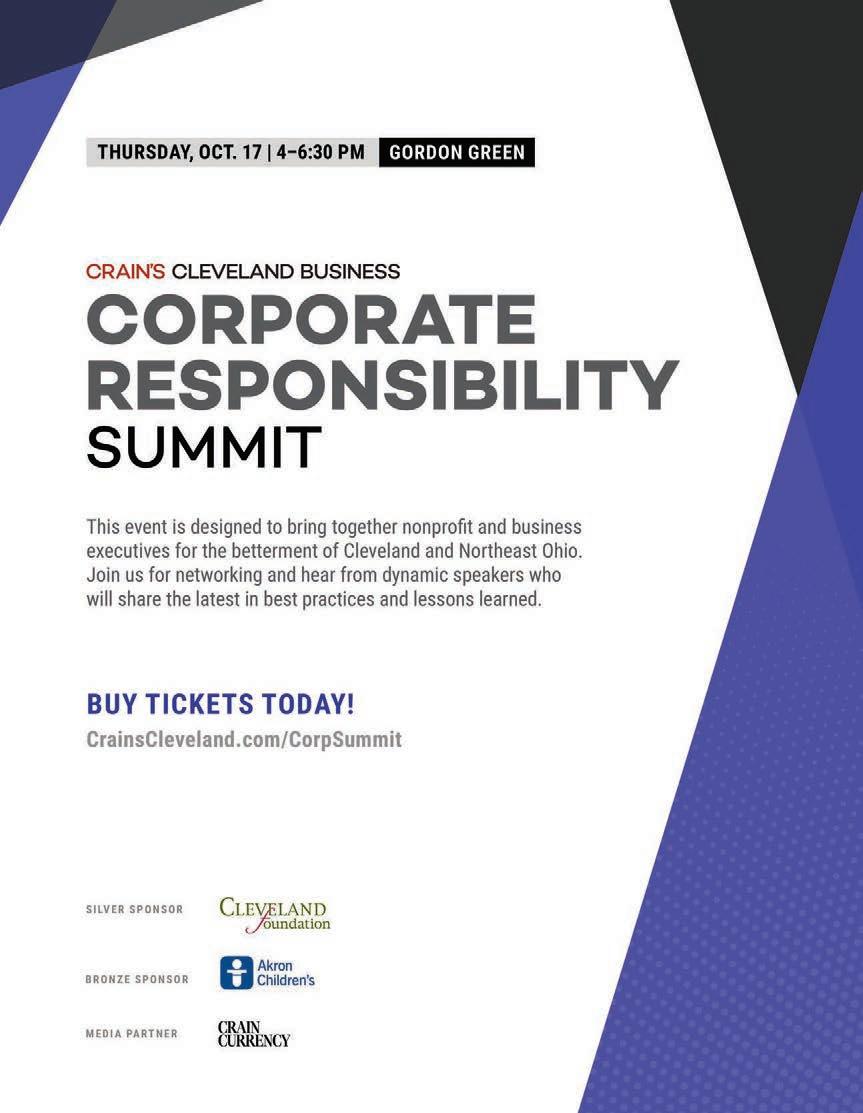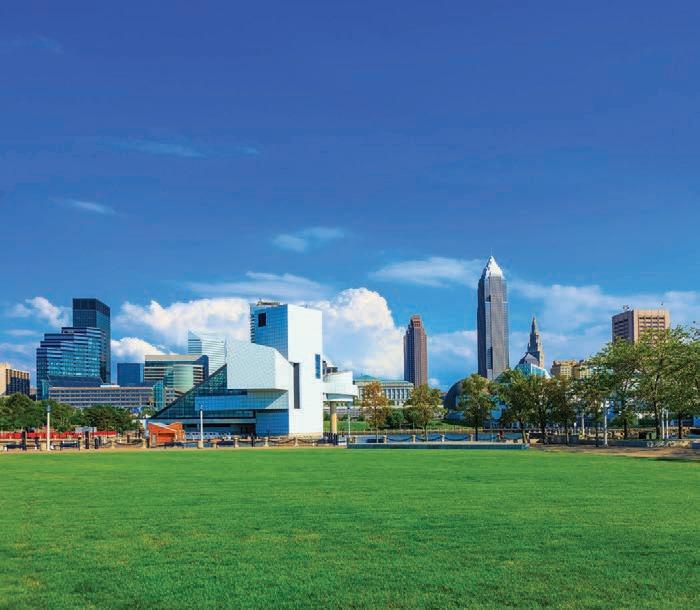

BIG SUCCESS IN STAYING SMALL
Mitchell’s Ice Cream celebrates 25 years in Northeast Ohio
By Alexandra Golden
What started out as a post-dinner idea and conversation two brothers had while in Seattle in the late 1990s has grown into a premier ice cream chain in Northeast Ohio. Mitchell’s Ice Cream, founded by brothers Mike and Pete Mitchell, opened its doors in Westlake on Oct. 6, 1999, and it has since grown into nine storefronts along with a business supplying its products to local grocers.
While Mike Mitchell was a senior philosophy major at Ohio State University, he ew out to visit his brother, who was working in the investment
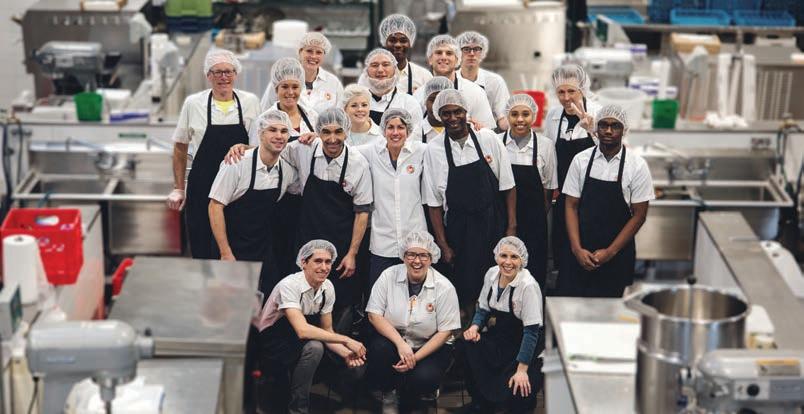
Riverfront projects get nearly $14M in grants
Funding would support construction of Irishtown Bend Park
By Kim Palmer
e Cleveland Metroparks has received nearly $14 million in federal park funding for the development of two signi cant riverfront development projects.
e National Park Service awarded $10.8 million for the construction of the Irishtown Bend Park, as well as more than $2.9 million to be used for the purchase of a 5.4-acre lot owned by Ontario Stone Corp. in the Flats.
e Metroparks applied earlier in the year for the Outdoor Recreation Legacy Partnership grants, which provide matching funding for urban park projects in underserved communities.
e nearly $3 million grant will go “to support the purchase of the Ontario Stone property,” said Metroparks spokeswoman Jacqueline Lapine Gerling.
e riverfront property, located where
See RIVERFRONT on Page 16
New program aims to close the justice gap
Cleveland Legal Collaborative offers low-cost legal services
By Jeremy Nobile
Inside the Cleveland Metropolitan Bar Association’s headquarters at One Cleveland Center, a trio of recently minted attorneys is helping an underserved segment of the low-to-moderate income community with legal help at below-market rates. is isn’t a law rm, per se, but a collection of lawyers who comprise the founding fellows of the Cleveland Legal

Collaborative, an innovative program launched this summer designed to provide low-cost legal services to people in and around Greater Cleveland who fall within 200% to 400% of the federal poverty line.
Besides being a resource for the community, the program serves as a business accelerator for solo practitioners who are early in their careers and who have an
See JUSTICE on Page 17
leave behind empty spaces with murky
Team members inside the kitchen of Mitchell’s Ice Cream’s Ohio City location | MITCHELL’S ICE CREAM PHOTOS
See MITCHELL’S on Page 16
Baldwin Wallace undergoes major restructuring
University cuts 64 positions, sunsets 10 programs
By Joe Scalzo
Faced with a $20 million budget gap, troubling demographic trends and changing attitudes about the value of a college degree, a group of leaders at Baldwin Wallace University has spent the last seven months wrestling with an unpleasant truth: Cuyahoga County’s second-oldest university must change or be history.
e 180-year-old institution chose change, unveiling a “transformational reorganization” on Tuesday, Oct. 1, that eliminates 64 positions across the executive, sta and faculty levels; reduces BW’s annual budget by approximately $13.5 million (13% less than scal year 2023-24); sunsets 10 academic programs; and reduces the number of academic departments from 28 to 19.
e restructuring plan, which has been approved by BW’s board of trustees, is expected to leave the university with a de cit of $6 million to $7 million at the end of scal year 2025 (June 30), which will be covered by internal funds. BW is projected to break even in scal year 2026, according to Lee omas, chair of BW’s board of trustees
and a retired managing partner of Ernst & Young.
“ e whole higher education environment is upside down right now, and we’re part of that,” omas said. “We’re working our way through improving what we do, balancing our budget and being a survivor — and I assume most universities are doing the same thing. And if not, they should be.
“It’s time for all of us to reinvent ourselves, reimagine ourselves and make sure we’re sustainable into the future.”
BW will lose 49 faculty members as part of the reorganization: 18 through layo s, 19 through a voluntary separation agreement, and 10 who are expected to leave via retirement and other resignations.
e contracts of the 18 laid-o faculty members will be honored through next July, “which will delay the budget savings but allow impacted colleagues time to plan their next career moves,” the university said. e university expects to save $4 million from the reductions.
BW also expects to save $1.6 million by laying o eight sta members and losing 17 others via buyouts. ere will be two executive level layo s; one of the positions

eliminated will be the chief diversity o cer.
“Diversity and inclusivity is embedded in our DNA and will be a collaborative e ort across the BW community, rather than led by a single o ce,” the university said.
BW’s plan also reduces the number of cabinet members, deans “and other decision-makers” by an unspeci ed number.
e plan will allow BW’s leaders to be “more agile in responding to changing student and employer needs, while faculty and students focus on learning,” said Greg Flanik, BW’s VP of operations and a key member of the transformation group behind the reorganization.
“We’re not looking to just solve a budget shortfall,” Flanik said. “We want to emerge stronger and more competitive than we’ve been in years past.”
e 10 programs being phased out are: Music History, Jazz, Visual/

Important: Your Unclaimed Funds Report Is Due Soon!
Ohio law requires businesses to file an annual report of Unclaimed Funds even if there’s none to report.
Nothing to report? A Negative (None) Report is required, which must be filed through the Ohio Business Gateway.


Due to a system upgrade in 2025, this is the last year paper reports will be accepted.
Learn more at com.ohio.gov/reportfunds



Studio Art, Communication Studies, Film Studies, Public Relations, Public Health, Master of Public Health, Digital Marketingto-MBA graduate program, and Leadership in Higher Education MAEd.
BW said those programs were chosen based on enrollment numbers, graduation rates and/ or post-graduation employment statistics, and the university is committed to “teaching out” all students enrolled in those programs. Approximately 4% of BW’s students are enrolled in the 10 programs that are no longer accepting new students.
“What we’ve done is really taken a focus on what we do really, really well,” omas said. “And some of the stu we don’t do as well — or don’t have as many majors, etc. — we’re not going to do any more.”
Challenging times for higher education
e announcement on Oct. 1 comes during a challenging time for Northeast Ohio’s colleges and universities, with Notre Dame College and Eastern Gateway Community College both closing this year. Cleveland State and Lakeland Community College, meanwhile, have been forced to make painful budget and sta ng cuts in recent months, and Ursuline College entered a strategic partnership with Erie, Pennsylvania-based Gannon University designed to save on administrative costs and expand its geographical reach.
Compared to the Class of 2019, Ohio is projected to have 3,600 fewer high school graduates by 2025; 11,970 fewer by 2030; and 14,720 fewer by 2035.
e Oct. 1 news also comes exactly eight months after BW cut 23 full- and part-time sta and non-tenured faculty positions; instituted a hiring freeze through December 2024, and reorganized 13 programs. e reductions were necessary after BW discovered that it faced a $20 million shortfall in its budget — or $17 million more than had been reported to leadership.
“We were shown budgets that got us to $3 million, and then when we looked at the actual information — that was the alarm that went o a year ago,” omas said.
When asked if the discrepancy was due to employees misleading BW’s board or if it was because those individuals didn’t realize it had grown to a $20 million de cit, omas said, “Probably both.” He then paused and said, “I’m being very cautious with what I say about that. ere are some things you nd when you start peeling back the onion, et cetera. We’re trying to keep that as con dential as possible.”
Flanik declined further comment — “I would stand by the information Lee gave you on this,” he said — but noted that BW worked with “some of the best consultants in the EY Parthenon” and that, moving forward, the university “will make sure we have accurate numbers and that we’re bringing datadriven analysis so we can deliver solutions to long-term strategic challenges.”
“We’re doing things di erently than we’ve done in the past,” he said.
Soon after announcing the layo s on Feb. 1, BW created a work group that included Flanik and other BW executive leaders, faculty and trustees that spent seven months getting input across campus and studying best practices at other colleges and universities.
But before it could implement any changes, BW needed its faculty to vote in favor of pausing rules around faculty layo s and increased teaching loads. With 83.33% of BW’s faculty voting, the motion to increase faculty loads passed by a 95-69 margin (with 16 abstaining) and the motion to suspend layo s passed by an 89-66 margin, with 25 abstaining.
“It was important to me as a faculty member that all areas of campus were being looked at and that we were identifying ways of being more e ective in all aspects, so that it wasn’t just one area being targeted,” said Jaimy Dyer, a professor of exercise science and pre-allied health/pre-physical therapy who served on the transformation work group.
“Over the past 10 years, we’ve had increased administrative roles so we wanted to make sure they were looking at that (administrative sta ng) and letting that information guide some of those decisions.”
BALDWIN WALLACE UNIVERSITY
Although both votes passed, Dyer said faculty members were frustrated by the discrepancies in BW’s budget, especially since it forced the university to make sudden, painful cuts rather than phasing them in gradually. e faculty also wondered how BW remained immune to budget cuts when similar institutions were cutting sta to deal with enrollment declines.
“All these things we had been hearing for years and we were like, ‘Why are we di erent?’ ” Dyer said. “People were questioning that and all the sudden we learned we weren’t special. ere was a lot of frustration about that because people felt like they had been asking the right questions and hadn’t been getting answers.
“We don’t see every single account on campus, so we have to trust that the decision-makers are looking at all the information. at’s not what we’re hired to do. We’re hired to work with students and educate students.”
Looking to the future
Like most of Northeast Ohio’s colleges and universities, BW’s enrollment has declined over the past 15 years. e university’s full-time equivalent (FTE) dropped from 3,834 in 2010 to 3,091 in 2023, according to Crain’s Cleveland records. But BW has increased its full-time undergraduate enrollment each of the past three fall semesters and is now at pre-pandemic levels. Its retention rate is about 85% and it ranked 10th on this year’s list of best Midwest regional universities from U.S. News & World Report.
While BW’s leadership admits that many of these changes should have been implemented sooner, they also feel the new structure will allow them to be more nimble, a word not generally associated with higher education.
As one BW employee put it, “ e alternative is to hurt a lot more people by doing nothing. Just ask as the folks who worked at the former NDC (Notre Dame College) and other colleges that failed to act decisively.”
omas believes the reorganization will also help BW attract better presidential candidates. BW’s previous president, Robert Helmer, retired June 30 after 12 years, with omas Sutton serving as the acting president and interim provost. e university is currently searching for Helmer’s replacement.
Flanik also noted that BW plans to increase hiring and spending in other areas, such as its counseling program, its musical theater program and its nursing program.
“We think we’ve made investments in the right place, where our opportunities are,” Flanik said. “And we should have pivoted a little quicker away from some of the things that weren’t working, where the demand wasn’t happening. But this (restructuring) process isn’t only about a course correction. It’s something that needs to be part of our DNA going forward.
“If you’re working at BW going forward, you should expect that we’re going to be constantly looking at things and evaluating things. If you want to survive and thrive through this, it has to be built into your DNA.”
Cleveland Institute of Music faculty vote to unionize
By Joe Scalzo
e unionization push at the Cleveland Institute of Music has struck a chord with its faculty.
CIM’s faculty voted 56-25 last month to join the American Federation of Musicians (AFM) Local 4, the Cleveland-based performing musicians’ union. Voting began on Wednesday, Sept. 25 and ended at 5 p.m. on ursday, Sept. 26.
e nal tally did not include 25 provisional ballots. ose votes, which were made by department/division heads, were subject to challenge because CIM and the union disagreed over whether they should be part of the bargaining unit.
A majority plus one was needed to pass, meaning the referendum would have passed even if all 25 provisional ballots were “no” votes.
“ is is a historic vote and a signal to the world that CIM will remain one of the very nest conservatories in the nation,” said conservatory faculty and Local 4 member Frank Rosenwein, principal oboe with e Cleveland Orchestra.
“ is vote will help to retain and sustain our world-class faculty, it will reassure students that we are a stable institution with their needs as our primary focus and it will provide a framework for stability for all institutional stakeholders, including the board, the administration, the faculty and the students.”
In a statement to Crain’s Cleveland, CIM acknowledged ursday’s passage and noted that, by federal law, “certain steps now must be followed in a certain order and manner. CIM will fully abide by these requirements, including negotiating in good faith with the faculty’s union representatives.”
e AFM is an AFL-CIOa liated labor union representing 70,000 professional musicians in the United States and Canada. It is the largest union of musicians in the world.
Local 4 includes the musicians of e Cleveland Orchestra, Cleveland Chamber Symphony, Cleveland Jazz Orchestra and Blue Water Chamber Orchestra.


“With a spirit of collaboration and unity, we’re eager to begin these negotiations and usher in the next chapter of the long and storied history of CIM,” Rosenwein said.
e vote was the latest episode in what has been a tumultuous 12 months for CIM.
Last November, 200 students signed a petition calling for the resignation of President and CEO Paul Hogle and Board Chair Susan Rothmann, a movement that was sparked by sexual harassment allegations against principal conductor Carlos Kalmar. He was cleared after an investigation and led a federal Title IX lawsuit against the school. Kalmar later withdrew that lawsuit, but his attorney told Cleveland Scene he intends to le in state court.
In March 2024, the CIM faculty issued a vote of “no condence” for both Hogle and Provost Scott Harrison.
In April, Mark Jackobs — a violinist for the Cleveland Orchestra who taught at CIM for 31 years — led an unfair labor practice against CIM, telling Cleveland.com that he was red in March without explanation. He said the ring came after he voiced concerns about the institute’s administration.
CIM welcomed 48 rstyear undergraduates this fall and has a full-time equivalent (FTE) enrollment of 343. at’s down from a FTE enrollment of 437 in 2014, according to Crain’s Cleveland records.
















GO BANANAS — CALL CBS FOR A LOAN!





































Drone deliveries could start in Cleveland with state grant
By Dan Shingler
We’re getting closer to seeing drones ying to make deliveries and rst-responder calls.
And that’s a good thing, say those who are working to make such things a reality in Cleveland and surrounding communities.
A recent state grant is going to go a long way toward making such drone ights safe and observable in Cleveland, and places like the Cleveland Clinic should be able to begin deliveries of drugs and other medical items as early as 2025, according to a group of industry advocates that met Friday, Sept. 27, at Baldwin Wallace University.
tion from the scene, and people on the ground can view the situation before they arrive on the scene. ey might be able to prepare for speci c dangers or cancel a trip to a site where no real emergency was taking place.
Eberhardt said his favorite example of how drones could help people is in the health care arena, delivering drugs.
He didn’t mean run-of-themill prescription drugs — though drones are envisioned delivering those, too — but emergency-use items and drugs like Narcan, EpiPens, de brillators and insulin.
tions, as well as with optical and types of sensors.
Stuart Mendel, an a liate professor at Baldwin Wallace and project director for NEOFIX, said we should start seeing drone delivery ights soon, thanks to state funding for two important radio sensors being installed this month at Burke Lakefront Airport. ose sensors will make it so much of Cleveland, including downtown, has the monitoring systems initially needed.
The state and Cuyahoga County Council split the cost of those sensors, which was about $500,000 in total, Mendel said.


More funding is still needed, but the biggest challenge might now be convincing elected officials and the general public that such drone flights are not only going to be safe, but will keep Ohio competitive with other states in the technology while providing time- and moneysaving services.
John Eberhardt, managing director of Virginia’s ATA Aviation, spoke to about 50 people in the local drone industry at a meeting of Northeast Ohio Flight Infor-

“ e faster you get treatment to a patient, the better the outcome,” Eberhardt said. “You don’t show up in the emergency room, and we just saved $10,000.”
Many entities, such as the Clinic and local law enforcement agencies, already are on board and are waiting to use drones. But to do it, they’ll need the infrastructure to support safe ights by allowing monitors to observe drone ghts remotely, communicating information about drone ights to pilots of other drones and aircraft, and the ability to catch drones that violate the rules, possibly even taking control of them if need be.
NEOFIX is now waiting to see if it will win a $2 million grant from the Ohio Department of Transportation, Mendel said. at money would go toward building infrastructure rst responders could use to y drones around airports in Akron and Portage County.
“Once we create it, it will be easily replicable,” Mendel said.
But the biggest hurdle might be public opinion. People need to see the value of drones, want to capture that value and lose their fear of the technology, backers say.




“The biggest hurdle that you’re dealing with is the Fourth Amendment. Everyone is concerned about privacy.”
Chelsea Treboniak, president of Critical Ops in Twinsburg
“ e community has to speak out with demand,” said Chelsea Treboniak, president of Critical Ops in Twinsburg, another NEOFIX member and a company working to provide drone technology.
“ e biggest hurdle that you’re dealing with is the Fourth Amendment,” she said. “Everyone is concerned about privacy.”





mation Exchange, or NEOFIX, a group of local partners working to build the industry here.
Eberhardt addressed what will be needed to make it so drones can be safely own and monitored in the region, and also about some of the ways they could help local governments, health care providers, businesses and people generally.
For example, he said, rst responders often could send a drone to the site of a 911 call faster than a police or re vehicle could get there. e drone doesn’t need to wait for partners or stop for tra c and can usually take a straight line to its destination.
at means those following the drone will be able to get informa-
e only drones that observers can do such things with now are made by the Chinese company DJI, which puts remote identi cation broadcasters in its drones and also makes a system by which monitors can see exactly what a drone is doing, where it is, where it took o from and where its pilot is located.
at’s the same company that many federal legislators are worried about spying on America.
It’s also the same company that’s made more than 90% of the drones ying in the U.S. today, said NEOFIX organizers and backers.
But when places like Amazon, the Clinic and others start ying drones, they likely won’t use DJI drones or use them as often as consumers do.
So, infrastructure is needed locally to enable drones to be monitored by their radio communica-
But she and others argue that putting in place systems to monitor and control drones will help ensure that drone pilots follow the rules.
And some of people’s concerns from the early days of drones — that pilots would be spying on people in their backyards — were likely overblown. at was easier to do years ago than it is today, because nearly all consumer drones were made by DJI and are being monitored.
“ ere was a lot of panic,” said Chad Hankins, president of Patriot Aerial Services, which does drone inspections of cell towers and other structures. “But that really never happened.”
Hankins would probably know, too. He monitors all of the DJI drones ying in the area already.
ours is doubling down. Labor & Employment practices tread water,

You won’t find cookie-cutter approaches here. Instead, expect sophisticated guidance based on deep understanding of your business.
I’ve grown a dedicated team of more than 30 attorneys with wide breadth of experience across the full labor and employment spectrum. Collective bargaining, wage and hour class actions, restrictive covenants, union avoidance, discrimination claims, employee issues, contract administration, and more.
Representing employers of all sizes in all industries nationwide.
Providing proactive strategies and timely problem-solving.
Aggressively protecting their interests day to day, in court and before state and federal agencies, wherever they do business.
My clients count on me to be where they need me. And I am.
With business-minded counsel, candid assessment of risks and opportunities, and the resolve to see any challenge through.
I’m ERIC BAISDEN. I’m on your team.
I AM BENESCH
> Chair, Labor & Employment Practice Group; Firm General Counsel > 216.363.4676 | ebaisden@beneschlaw.com
Taking it to the streets of Playhouse Square
Playhouse Square is making significant progress in its goal of generating excitement outside the theaters that rivals what takes place inside them.
Craig Hassall, CEO of the performing arts nonpro t (with a real estate services arm) since February 2023, is a high-energy guy with a vision to activate what he calls the "beautiful streets" around Playhouse Square. ere's "really positive energy" about taking the district, and downtown generally, in new directions, he says, aided by a cooperative spirit among players including Cleveland Mayor Justin Bibb, Cuyahoga County Executive Chris Ronayne, Destination Cleveland, Downtown Cleveland Inc. and the Greater Cleveland Partnership. It also helps, he said, to have a Playhouse Square board with "enthusiasm and an appetite for change."
"I feel like I'm kicking at an open door," Hassall said in a recent interview ahead of one of the big events on the Playhouse Square calendar: the start of the KeyBank Broadway Series, with "A Beautiful Noise," the Neil Diamond musical, opening Tuesday, Oct. 8. e 11 theaters of Playhouse Square make it the country’s largest performing arts center outside New York City, drawing about 1.1 million people each year to musicals, plays, concerts, comedy performances and, well, pretty much any form of entertainment that exists. Hassall sees opportunities to do more, though, to engage people while they're in the district and give them even greater reason to stroll, shop, eat, drink and otherwise enjoy everything a busy downtown should o er.
We've already seen some of that, with Playhouse Square doing more events at U.S. Bank Plaza, a fun (though small) place just outside the theaters. It also created the Corner Gallery at East 13th Street and Euclid Avenue, in the former Cowell & Hubbard restaurant, that for six months hosted "Mummies of the World: e Exhibition." at space, though, will become a restaurant once again: e Friars' Table, from restaurateur Brandon Chrostowski, scheduled to open this winter.
Up next are some bigger swings. e biggest of all will come when Playhouse Square settles on a plan for the Greyhound bus station, 1465 Chester Ave., which it bought last April for $3.3 million. Hassall said Greyhound will be in that building until the end of the year, and it will take some time before a new vision for that space, likely focused on entertainment, is fully rolled out.
A smaller, nearby building at 1776 E. 17th St. that Playhouse Square just acquired will be used as a performance

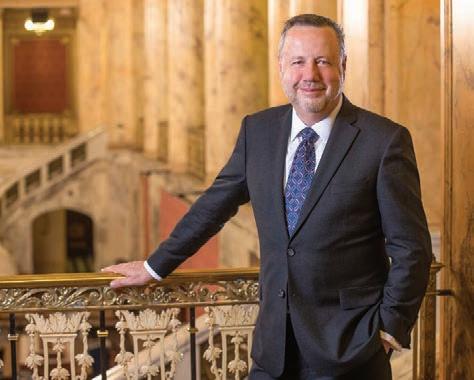
and rehearsal space, along with an ambitious addition: the construction of programs for people with Parkinson's disease, dementia and other neurological conditions. (Playhouse Square is working with Cleveland Clinic to develop the programming.)
"We're keen to expand our education o ering," Hassall said.
e additions of the Greyhound and East 17th Street buildings are "validating the northern end of the campus," Hassall said. e heart of Playhouse Square
is along Euclid Avenue, and the nonprofit's investments in new marquees for the theaters are a re ection of that. But Hassall noted that many visitors' experience at Playhouse Square begins on that northern edge, where they park and enter the theaters.
"Let's make the back door, the northern entrance, more appealing," he said.
Playhouse Square is working with the Streetsense consulting rm to develop a strategy for the Greyhound building and to identify ways to activate public spaces
within the district. (Streetsense last year created a framework for a new downtown Cleveland retail plan.)
Hassall said he expects a report from Streetsense by "early next year" that will incorporate input from city of Cleveland o cials, GCP and DCI, downtown residents and all the resident companies that call Playhouse Square home.
More active spaces "make a better Cleveland," Hassall said.
Larisa Ortiz, managing director of public nonpro t solutions at Streetsense, said in an interview that the rm was engaged to "look at the site (the Playhouse Square district) holistically," with a focus on ensuring the district and its larger campus support activation of the Greyhound site.
e goal, she said, is to build up Playhouse Square to complement existing assets — stretching from West 25th Street to the Flats and the waterfront — and create connections that help attract more visitors and also serve a growing residential population in the district. (A big part of the residential momentum comes from Playhouse Square's development of e Lumen apartment tower and its partial conversion of the Bulkley Building into apartments.)
"For so many reasons, Playhouse Square is unique," Ortiz said. " e built assets of the district are really unparalleled."
Building energy around the district requires continued momentum on Playhouse Square's entertainment o erings.
One big help in doing that, Hassall said, comes from a provision in the state of Ohio's most recent biannual budget that carves out $5 million — from $50 million allocated for movie and TV projects across the state — for theater productions. at might not sound like a lot of money in the context of a state budget, but it's a big deal in Playhouse Square's world.
Hassall said it helps support longer runs of shows and provides incentives for producers to launch their shows in Cleveland before moving on to Broadway. e tax credit carve-out already has paid one big dividend, Hassall said, by helping Playhouse Square in 2025 launch the national tour of " e Notebook."
Broadway producers "know Cleveland is a strong market," Hassall said, and the tax credit gives them another reason to start shows here, and stay longer when they do.
ese are confusing times for downtowns, which are still trying to gure out how to deal with a diminished market in the post-COVID period. Building up an arts district isn't the full solution, but it goes a long way to creating a thriving, engaged downtown.
Craig Hassall, CEO of Playhouse Square since February 2023, is a high-energy guy with a vision to activate what he calls the “beautiful streets” around the performing arts center. PLAYHOUSE SQUARE PHOTOS
PERSONAL VIEW
e entrepreneurship we need to celebrate
Entrepreneurs are innovators who identify market opportunities, develop new products or services, and drive change by uniquely solving problems or ful lling needs. When one thinks of entrepreneurs, names like Steve Jobs, Bill Gates, Oprah Winfrey, Walt Disney, Andrew Carnegie, and those featured on Shark Tank often come to mind.

Tom Sudow is the director of the Burton
D. Morgan Center for Free Enterprise and Entrepreneurship at Ashland University.
While each of these gures, and many others, are great entrepreneurs, we often overlook those whose entrepreneurship changes lives, not with the intent of making millions, but with the intent of improving the quality of life for those facing challenges. Ask these individuals, and they would likely not consider themselves entrepreneurs.
Recently, Crain’s Cleveland Business featured an article on the leadership change at Milestones Autism Resources. Ilana Ho er Sko , due to health reasons, stepped down as the executive director. She was one of the founders of Milestones and served as its longtime executive director. Eileen Sa an has since stepped in as interim executive director.
When thinking of great entrepreneurs, many would not include Ho er Sko or Sa an on their lists. But these two giants should top the lists of great entrepreneurs. Consider the characteristics of an entrepreneur:
Innovation : Entrepreneurs often come up with novel ideas to solve problems.
Risk-taking: ey take on the risks associated with starting and growing an enterprise.
Vision: Entrepreneurs have a clear vision or goal for their venture and the ability to foresee future opportunities or challenges.
Persistence : Entrepreneurs demonstrate resilience and determination in overcoming obstacles and challenges.
Leadership : They lead teams and inspire others.
Now, let’s look at what each of these leaders has accomplished. I had the opportunity to talk with both of them as they began their respective journeys.
I heard their visions and observed as they brought them to fruition, adapting and evolving along the way. Each saw a need and an opportunity to impact lives. ey changed how we nurture and support individuals and families facing signi cant challenges — autism and cancer — and empowered families to shape their loved ones' lives.
For Ho er Sko , it was the realization that, when faced with her child's autism diagnosis, resources to support families and empower parents were lacking.


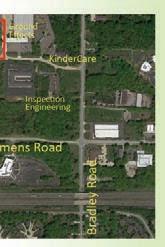




She could have been overwhelmed by the diagnosis, but instead, she chose to act. She turned adversity into a remarkable achievement.
Ho er Sko helped create and grow Milestones Autism Resources, which has touched thousands of lives by improving the lives of autistic individuals, families, caregivers, and professionals through education, coaching, and trusted connections.
Milestones has created a community where autistic individuals can reach their full potential as integrated members of society, with
their needs supported and their abilities and voices valued. Milestones’ year-round programming, highlighted by its annual conference, brings hundreds of people to Cleveland and provides invaluable support to the community.
For Sa an, it was the understanding that cancer is not just a medical diagnosis to be treated by doctors and hospitals. Cancer impacts the patient, their family, and their entire support network. Her vision created e Gathering Place, which provides comprehensive support for individuals battling
cancer and their families. O ering a wide range of services, from emotional support to wellness programs, e Gathering Place ensures that no one faces cancer alone. From support groups to educational resources, nutrition guidance to exercise programs, And the Gathering Place o ers these services, all free of charge. Sa an’s vision reshaped how we deal with cancer and support those going through it, changing the paradigm of care.
We live in an area known for its Halls of Fame — the Rock & Roll Hall of Fame, the Inventors Hall of Fame and the Pro Football Hall of Fame. Maybe it's time to consider a Hall of Fame to celebrate the creative work of those improving lives. ose who saw problems and created solutions that helped people at their most vulnerable moments. Are Ho er Sko and Sa an entrepreneurs?
In many senses, they are the best kind of entrepreneurs. It's up to each of us to look at the world around us and ask, "What can we do to touch people at their most vulnerable moments and improve their conditions?"
Yes, it may sound cliche, but what can we do to make our small corner of the world better? at, too, is entrepreneurship. Great entrepreneurs solve problems. While we may not create another Hall of Fame to honor this kind of entrepreneurship, I think we all know two people who should be in the inaugural class.
Ilana Hoffer Skoff, former executive director of Milestones Autism Resources, is an entrepreneur worth celebrating, says Tom Sudow. | CONTRIBUTED
Rite Aid closures leave spaces with murky futures
By Alexandra Golden
Rite Aid’s Ohio presence continues to shrink, leaving behind a growing number of newly empty retail spaces with uncertain futures.
By the end of September, only four Rite Aid Ohio locations will remain open, none in the Cleveland area. e four surviving locations are in Ashland, Cambridge, Uhrichsville and Wooster.
A total of 181 Ohio locations have been closed since the pharmacy chain led for Chapter 11 bankruptcy in October 2023. (Rite Aid emerged from bankruptcy on Sept. 3.) While a number of vacated Rite Aids already have hit the market, the future remains murky for many of the empty (or soon-tobe) locations.
Crain’s reached out to Rite Aid about plans for those empty spaces, but a spokesperson responded with the same blanket statement the company has given to other media outlets.
“ e decision to close a store is not one we take lightly. We carefully consider various factors in our decision-making, including our overall business strategy. In addition, we were required to go through a retail sale process as part of our Chapter 11 process, which allows prospective buyers to bid on parts of our business. As a result, we made the di cult but necessary business decision to exit these markets. While we have had to make di cult business decisions over the past several months to improve our business and optimize our retail footprint, we are committed to becoming nancially and operationally healthy.”
Rite Aid itself owned a handful of its locations, Kevin Moss, CBRE Cleveland rst vice president, told Crain’s. For example, according to Cuyahoga County property records, Rite Aid owned the locations at 14701 Pearl Road in Strongsville and 1758 Strathmore Ave in East Cleveland. But they primarily rented the spaces. e owners of the properties are either real estate investment trusts or private owners.
“A lot of them that we’re nding are people who sold property and wanted to 1031 exchange into a free-standing, net lease building where they're getting the guaran-
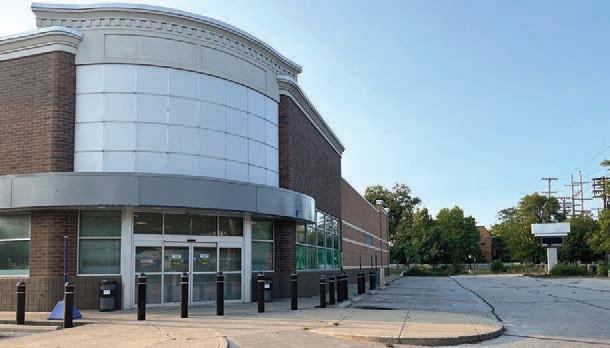
teed returns and the tenants paying all the maintenance taxes and insurance and all that,” Moss said. "So a lot of these were putting capital and investments into these Rite Aid buildings in hopes of having a safe, guaranteed return, which unfortunately, for a lot of these people, is not turning out to be the case.”
Filling the retail void
Most of the Rite Aid buildings are free-standing and around 11,000 to 13,000 square feet, but some are in strip malls, Moss said.
With the closures, the landlords and owners of the buildings are left scrambling for new tenants to ll the spots.
Vincenzo Calabrese, vice president at the Hanna Commercial Real Estate Cleveland o ce, said the free-standing buildings are “unique” in size, so nding a new tenant is a challenge.
“A lot of retailers are at this point essentially just a tad above it, or there's a lot of retailers that are a lot smaller,” he said. “So it's becoming one of those sizes where it's not the easiest thing to back ll.”
Calabrese noted that potential future uses could be medical, whether that means a dental practice or outpatient facility.
Another option, Calabrese suggested, is discount or dollar stores, since they are often similarly sized. But there are obstacles for that particular approach. Many cities have
started to ban dollar stores in some areas because of over-saturation, he said.
Cleveland is among the cities with such restrictions, said Moss, noting there’s a ban on Dollar Tree, Family Dollar, Dollar General and Five Below stores being built within two miles of an existing store — even if the stores would be based in ideal areas for these retailers.
Moss also thinks cannabis dispensaries could be an option for vacated Rite Aid spaces, but those have their own set of laws they must abide by, like standing at least 500 feet away from a school or church.
“ ey’re good sites for redevelopment,” said Chris Seelig, senior vice president at the Colliers Cleveland o ce. “ ey’re at least an acre, so the buildings may not have value in some of them, land may be worth more, so they could be redeveloped for a gas station, a restaurant, whatever.”
e space, he added, could even be ideal for a smaller hardware store for some chains, like Ace Hardware.
With many former locations already on the market, several being handled by the brokers Crain's spoke with for this story have already found new tenants or owners — though few details are shared.
Of Moss's 18 current listings Moss, ve of them have been signed and another seven have letters of intent. While he didn't give
speci cs, interested uses include medical, grocery, auto part, auto (gas, car wash), dollar stores and even an antique mall.
Seelig has closed on one that was purchased by investors, but told Crain's, " ere is no nal user set for the site."
Calabrese said Hanna has made a few deals but could not share speci cs as the permit process has not been completed.
Tough nancial choices
Since Rite Aid is publicly traded, many of these spaces are considered investment-grade opportunities.
Calabrese said that investors thought, ‘I have a few million dollars and I want to receive 6% return on my money over the initial term of the lease.’ ”
But with the closures coming before leases were completed, some owners are left in the lurch, especially as potential future tenants may need to make costly changes to t their needs, passing that cost to the landlords.
And rent prices can vary on location, creating another hurdle for building landlords. While the average price per square foot for a Rite Aid is about $10 to $15, Seelig said the location at 28600 Chagrin Blvd. in Woodmere, where there is limited retail space availability, was asking for more than $50 per square foot.
Some owners are looking to sell their old Rite Aid property but, Seelig said, some are just looking for leasers. ose owners may want to hold on to what’s considered “really good real estate,” he said, or they’re simply not in the position to sell based on the market value compared to the value of the Rite Aid lease.
Location a big factor
While there’s very little vacancy in the market for retail space in general, Seelig said, location is still a big factor.
“I would say the core markets are going to have more interest than the non-core markets,” Moss said. “I know it's a general statement, but the inner city locations are not moving as fast.”
One positive for most Rite Aid locations, Seelig said, is that they’re predominantly on corner lots with tra c lights and are surrounded by residences. at variety of location, Seelig added, also means that the sheer volume of these empty spaces hitting the market is unlikely to “drive down the price.”
While these spaces may be vacant right now or will be soon, Mark Votruba, associate economics professor at the Weatherhead School of Management at Case Western Reserve University, said that in most locations, that would be short-lived as one thing (the Rite Aid) is swapped out for another (a new tenant.)
Conversely, he said, there’s the potential negative impact of the “spillover e ect,” where the closure of a store (in this case, Rite Aid) in a struggling neighborhood could make the area less attractive, meaning fewer shoppers.
“ at can either create a virtuous cycle of bringing people into a lot of di erent places or it can lead to a vicious cycle where, once a few key places close down, maybe the whole shopping center begins to go to pot because it doesn't have rough foot tra c,” Votruba said.
Location is, again, a major factor here, but so is the overall performance health of the retail spots surrounding the close Rite Aid location.
“I can certainly envision Rite Aids in poor communities that just stand as empty buildings for a while,” Vortuba said.
Survey: Many direct care nurses consider leaving bedside
Paige Bennett
Roughly 63% of direct care nurses are considering leaving the bedside because of high patient care loads, according to a new statewide survey.
In a survey of licensed nurses conducted this year by the Ohio Nurses Association (ONA), nearly one-third reported their patient care unit was rarely or never adequately sta ed, according to a report published last month.
And 65% of direct care nurses reported experiencing workplace violence in the last 12 months, in-
cluding verbal threats or abuse, disruptive behavior and attempted or actual physical assault. e results included 7,844 validated surveys from nurses representing all of Ohio’s 88 counties.
Eighty-one percent of respondents were registered nurses while the remaining 19% were licensed practical nurses, which aligns with the Buckeye State’s RN-to-LPN ratio.
ONA says the survey results offer “alarming” insights into the current state of nursing and expose the impact of understa ng on patient safety. e organization
has been advocating for bipartisan state bills that would establish legally enforceable sta ng standards for nurses and require Ohio health systems to develop security plans for preventing workplace violence.
e overwhelming majority of survey respondents said they would support a bill that would include minimum sta ng standards for hospitals. Ongoing nursing sta shortages at hospitals and health systems have resulted in larger patient loads for many nurses.
Deborah Angel Baker Lyod, a registered nurse at Cleveland
Clinic Akron General, told Crain’s in August that everyone in nursing is feeling the e ects of burnout right now.
Ohio nurses who took the survey con rmed delays in patient care as a result of short sta ng, the most frequent being a delay in answering call lights or requests for assistance. Nurses also noted high turnover in their units, with more than 76% reporting high or very high turnover impacting patient care continuity and team dynamics.
“ e data in this report speaks for itself; understa ng and work-
place violence in our healthcare systems is a patient care crisis that must be addressed now,” ONA President and Executive Director Rick Lucas said in a statement. “Ohio cannot sustain the current trend of losing nurses due to working conditions. Having legally enforceable sta ng standards in all Ohio hospitals and holding healthcare executives accountable for unsafe workplaces is crucial to the future of healthcare to improve patient care and ensure a sustainable, supportive environment for our nurses and health professionals.”
The former Rite Aid at 6512 Franklin Blvd. in Cleveland was one of 181 locations that have closed in Ohio. KIM PALMER
Experts say ‘pharmacy deserts’ could worsen disparities in Cleveland
By Paige Bennett
Struggling drugstore chains are shuttering locations, leaving many to wonder where they will get their prescriptions lled.
With Rite Aid closing all but four of its Buckeye State locations (none remain in Northeast Ohio) and Walgreens planning to shut down up to 25% of its stores by 2027, experts say it could worsen access to medication and other critical resources in Cuyahoga County communities already facing higher burdens related to social determinants of health.
“ e community members or residents who have historically been the ones who have lost out on or had to navigate our very complex health system in a way that was not easy for them are the ones losing their pharmacies rst,” said Domonic Hopson, president and CEO at Neighborhood Family Practice, a federally quali ed health center (FQHC) in Cleveland.
ese communities, known as pharmacy deserts, exist in lowincome areas where many residents lack access to transportation. e exact de nition varies, but experts generally consider a pharmacy desert to be a neighborhood where most people live more than one mile away from the nearest pharmacy in urban areas and 10 miles away in rural areas.
Unsurprisingly, pharmacy deserts tend to crop up in historically disadvantaged communities. Crain’s used data from the State of Ohio Board of Pharmacy to create a map of the active pharmacies in the county. e map shows pharmacy access is limited in areas like Cleveland’s St. Clair-Superior, Kinsman and Central neighborhoods.
Areas where pharmacy access is less convenient are typically persistently or mainly poor, based on data from Case Western Reserve University’s Center on Urban Poverty and Community Development.
As pharmacies such as Walgreens and Rite Aid scale back their operations, the biggest concern is what it means for these communities, Hopson said. As an FQHC, Neighborhood Family Practice provides primary care services to underserved communities. When neighborhood pharmacies disappear, medication compliance rates usually drop, Hopson said. “ ankfully, in this century, there are many medicines and prescriptions that can help and support some of the illnesses (...) everything from hypertension, diabetes to depression and anxiety,” he said. “When there is not easy access to those prescriptions, then we’ll nd that our patients are less compliant when it comes to staying on their medications and controlling their disease or the illness.”
Medication nonadherence already is a serious problem. A 2018 study published in e Permanente Journal says the issue a ects between 40% and 50% of patients prescribed medications to manage chronic conditions like diabetes and hypertension.
“(If a prescribed medication) never gets to the party that it needs to, and it’s not in the volume that it needs to be, then it’s not gonna have the impact you want,” said J.B. Silvers, interim co-dean and professor of health care nance at Case Western Reserve University’s Weatherhead School of Management.
Disruptions in medication access can result in conditions worsening and patients making more trips to the emergency room, said Dr. Srinivas Merugu, president of MetroHealth’s Institute for H.O.P.E.
In areas that already su er from poor health outcomes, it can deepen existing disparities, Merugu said. He pointed to the city’s Stockyard and BuckeyeShaker neighborhoods as areas lacking convenient pharmacy access.
For residents, neighborhood pharmacists often serve as trusted health care professionals, Merugu said. And the patient-pharmacist relationship has only grown stronger since the coronavirus pandemic, with many patients relying on their local pharmacies for COVID-19 and u shots.
e loss of retail pharmacies could lead to declining vaccination rates, Merugu said. In addition, many patients see their pharmacist more than their primary care doctor. Losing their neighborhood pharmacy means losing an important personal connection to health care, he said.
Hopson noted that pharmacies o er more than just prescriptions.
“Some people bought their daily household items, the toiletries, their groceries or food from pharmacies and the stores that operate in them,” he said. “We always have to remind ourselves that, in many cases, those foods are likely not the healthiest option. ey weren’t fresh fruits. ey weren’t fresh vegetables. ey were an option. And for many people, they relied on that option.”
Why are retail pharmacies struggling?
Major drug store pharmacies are battling a host of challenges, including lower prescription drug reimbursement rates, in ation, and increased competition from Amazon, which debuted an online pharmacy in 2020.
e industry pressures have brought pharmacy bene t managers, or PBMs, into the spotlight. ese third-party admin-
istrators act as the intermediary between pharmacies, insurance companies and employers and drug manufacturers.
Pharmacists have accused PBMs of driving up prescription drug costs for their own pro ts. PBMS have blamed drug manufacturers for the rising prices.
Last month, the Federal Trade Commission sued the country’s three largest PBMs — CVS Health’s Caremark Rx, UnitedHealth Group’s OptumRx and Cigna’s Express Scripts — accusing the companies of unfairly in ating insulin prices. e rise of mail-order pharmacies has been signi cant, but it might be a solution for addressing pharmacy deserts, Silvers said.
“If you’re in an area where the mail delivery isn’t very good, and you don’t necessarily trust it, which, again, overlaps with that poverty area, that is not going to be a great way to ll in the gap when the drug store down the street that you used to go to closes,” he said.
Pharmacies were also hit by the billions of dollars in opioid settlements from recent settlements, one of several issues that Rite Aid said led to its bankruptcy ling.
Improving circumstances must start at the national level, Hopson said.
“( ere needs to be) some protections on both patients, but also on insurance companies to rein in some of the pharmacy bene t managers that are wreaking havoc on our pharmacy system and pharmacy networks right now,” he said.
Amid the retail closures, MetroHealth has been focused on making sure prescriptions are lled before patients leave a facility, Merugu said. e health system has pharmacies in many of its clinical locations and is planning to add drive-thru pharmacies, he said.
A spokesperson for Cleveland Clinic said in an email that the health system has been expanding its pharmacy services for the past several years. It has 25 outpatient
pharmacies, as well as a specialty pharmacy, home delivery, a drivethru pharmacy and bedside delivery for inpatients prior to discharge.
Kevin Cunningham, vice president of ambulatory and specialty pharmacy operations at University Hospitals, said in a statement to Crain’s that the health system has been growing its pharmacy footprint over the past ve years and has a network of 15 pharmacies connected to its hospitals and health facilities.
Along with its pharmacy locations, UH o ers a Meds to Beds program that sends patients home with a 30-day supply of medications upon discharge. Cunningham said that program aims to help prevent readmission.
“Our pharmacists are an extension of our primary care providers, and have frequent touch bases with patients about their medical management,” Cunningham said. “ is is helpful for patients with chronic conditions, such as diabetes, who need consistent medication.”

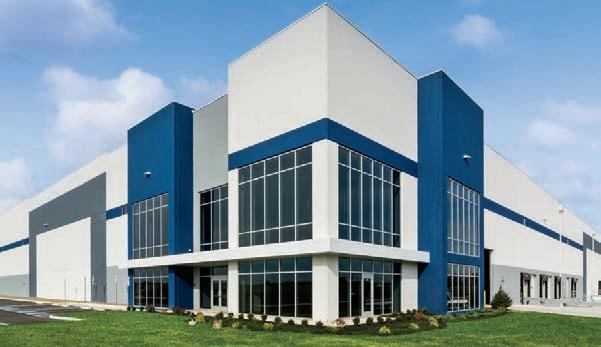





Stalled Bridgeworks apartments win key votes to get rolling
Stan Bullard
With the nal exterior design of the proposed Bridgeworks apartments in dispute, the Cleveland Landmarks Commission required the developers to return with a revised plan but allowed them to start clearing the site for the building and installing the foundation of the seven-story tower.
at was the upshot of two unanimous votes by Landmarks on ursday, Sept. 26, to provide a certi cate of appropriateness to allow the project to proceed in the Ohio City Historic District.
It gives the developers the authority to raze old buildings on the site and work on its foundation and structure but not the exterior. at moves the project — in the works since 2019 — toward a groundbreaking by year's end, according to Brandon Kline, architect for the project at the design-build contractor Geis Cos. of Streetsboro.
e focus of the critique was that commission members did not like the design of a mix of bricks, colors and other shapes on the south side of the building. at part of the structure will be visible to tra c passing by on the adjoining Detroit-Superior Bridge.
“We’ve added a lot of brick to this project,” Kline remarked, “and you are asking us for more.”
Julie Trout, who chairs the commission, said, “We are in support of the project. I approve of the massing and siting (location on the site), but I think the materials still need work on the south side of the building.”
She said the proposed structure’s south side of the building looks “too busy” with a mix of assorted colors and materials. Other members shared her concerns about the same part of the building that has drawn criticism since the latest design surfaced this summer.
e partial OK to proceed was a response to a plea by the architect.
“We’ve shown we are willing to work with the commission through many presentations in the past,” Kline said. “I do want to stress the importance of moving the project further ahead. I don’t hear comments on the massing of the building. It all seems to me skin-related. e
south elevation is not a critical path item at this point. Let us get started with the demolition work and site work, especially with winter coming.”
e latest version of the project is di erent from its rst appearance in 2019. At that time, it was 16 stories tall, a glass-walled contemporary structure that included a hotel. e hotel has since been dropped from the project and the height trimmed.
Both changes are the result of the run-up of construction material and labor costs during and after the pandemic, followed by the surge in interest rates by the Federal Reserve, which has just been rolled back a bit.
e current design continues to include a plaza on part of the building’s south side providing access to the bridge and a passageway to the Irishtown Bend Park that is being installed on the bridge’s opposite side.
Kline said the walkway will serve as an area for activities such as a farmers’ market. e developer had to retain access to the bridge to allow utility and work crews to access its lower level. e plan also retains a sandstone ticket booth next to the bridge that dates from when trollies traversed the span’s underside. Stone from the existing buildings will be incorporated into the plaza area and two structures that provide entrance to below-grade parking garages.
e project developer is a joint venture between Graham Veysey and Marka Shiori-Clark, known as the originators of the Hingetown area on Detroit and West 29th Street, and M. Panzica Development of Cleveland. e same team, with other partners, developed the nearby ChurchState apartment and retail complex.
e group purchased the site on the Superior Viaduct and four buildings formerly occupied by the Cuyahoga County Engineer’s O ce after winning a county request for proposals to redevelop the site in 2019.
e project's location o ers views of Lake Erie to the north and downtown to the east and is on the key West 25th Street artery. City and county planners see it as a key part of the landscape entering Ohio City and the main access to the west bank of the Flats.

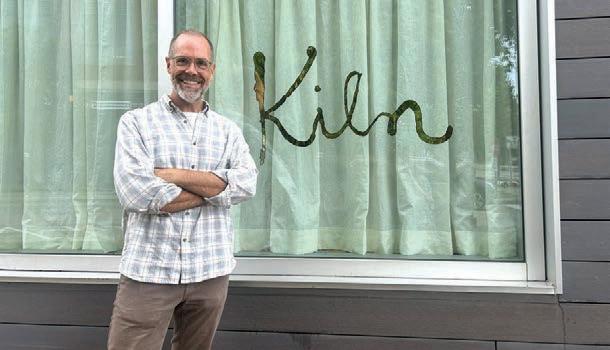
Kiln prepares to bring a
‘new experience’ to diners
By Alexandra Golden
Cleveland chef Douglas Katz is adding a third restaurant to his portfolio with Kiln, opening this week in the Van Aken District in Shaker Heights.
While it is Katz’s restaurant, it falls under Edgewater Hospitality, which he founded with Todd omspon. e pair are part of a group that own Katz’s other restaurants — Amba and Zhug — with culinary director Chef Cameron Pishnery and Phoebe Connell, director of operations.
It was around 14 months ago when Edgewater Hospitality plotted out how it could open the new eatery in Van Aken, landing on the 6,600-square-foot, two-story spot, Katz told Crain’s.
“We looked at the space and we could visualize what we wanted to do to the space — which is really taking away as much out of the space as possible — and making it feel like a place where everyone is a part of the experience and part of the community,” Katz said. e choice of Van Aken is personal for Katz, who grew up nearby in Shaker Heights, where his brother owned a natural food grocery store in the 1990s. He also is close friends with the Ratner family, who developed Van Aken, and did catering for them.
For now, only indoor seating on the rst and second oors will be available, but patio seating will open in the spring. e second oor includes a bar where patrons dine or wait until their table is ready.
ose who have been to Zhug and Amba will be in for a little surprise with how the menu is listed at Kiln.
“We don’t want you to come in and feel like you know what to do when you come in,” Katz said regarding the Kiln menu. “We want you to come in and experience something new and fun and exciting, and I think people get caught up in sort of the rhythm of what they’re used to."
“We want you to look at each dish, we want the server to help you through the menu and explain things, and we want you to read the menu," he continued, "… and everything should go together and there’s a reason we do it that way.”
Unlike traditional restaurants where patrons order drinks and food in a certain order, Kiln will have a different setup. Once patrons order, the Kiln staff will send it out in “a way that we think will showcase" it the best, he said.
e sta of Edgewater Hospitality undertook 12 di erent tastings of the Pishnery-created menu before it was solidi ed. When making the menu, they considered di erent allergies and dietary restrictions people may have, like gluten-free, vegetarian, vegan and nut allergies.
Kiln will o er suggested pairing menus, but Katz said the team will be trained to suggest items o the regular menu as well. Some items include calamari salad, sh stew, braised lamb shank, eggs goddess, shaved ham, popovers and Parisian potatoes.
“We call this generational dining as well,” Katz said. “So whether it’s a child, a grandparent, a young couple, you should all be able to eat together.”
ompson has focused on the restaurant’s wine choices. He mostly chose family-owned and smaller domestic wineries to honor the American bistro theme.
When it comes to the price, Katz said it’s “across the board,” and patrons could come in and order two things or six things or just come in for a drink and a small plate, potentially spending just $20 or possibly upwards of $180 per person based on what wine or food is ordered.
“ e idea is to order a bunch of things to share for your table like you’re eating at home at maybe a holiday meal or a celebratory birthday meal,” he said. e restaurant gets its name
from the tandoor oven — an Indian clay oven — Katz had at his former restaurant, Fire. ese ovens have a similar shape to a bisque kiln which is used for pottery. Katz, who makes functional pottery, has made serving bowls for Zhug and is making bud vases for Kiln.
“Kiln is really sort of bringing the warmth and the love we had for Fire, which was a restaurant I had for 20 years,” Katz said. “ is is really bringing that forward and it’s sort of our inspiration for that restaurant but it’s not the same at all.”
Edgewater Hospitality was still waiting for permits from the county and city, while construction was still being nished in the restaurant, leading up to opening week.
Despite the delay — the hope had been to open by Sept. 1 — it’s not as long as other delays Katz has faced. According to Katz, the opening of his former restaurant, Fire, was delayed nine months, while Zhug was delayed four months and Amba was about two to three months.
“We’re getting better at it,” he said.
While Edgewater Hospitality may have ideas for potential future restaurants, Katz said they are focusing on making sure this one is running successfully — along with Amba and Zhug.
“We want to be able to create something for the community that’s unique and exciting, and gives them pride for where we live, and showcases it for people visiting them and creates daily hospitality for the residents around,” Katz said, “So it’s all about doing what we can with what we know to make our city better and to make us better.”
e American bistro family style restaurant is located at 3386 Tuttle Road and will be open Monday through ursday from 4 p.m. to 10 p.m. and Friday and Saturday from 4 p.m. to 11 p.m. e restaurant will be closed on Sunday.
Chef Douglas Katz stands outside of Kiln at 3386 Tuttle Road in Shaker Heights. ALEXANDRA GOLDEN
Developer Dick Pace takes his rst step toward the exit
By Stan Bullard
After completing commercial buildings on the lakefront — that most tantalizing of Cleveland development opportunities that remains mostly visions on paper and PCs — real estate developer Dick Pace, president of Cumberland Development of Cleveland, is starting to move on.
“I’m turning the page to a new chapter,” Pace said in a phone interview.
At age 68, Pace is shifting focus to working with faith-based organizations. In the property business, that means parting with Cumberland’s portfolio.
e rst step came Sept. 24 when he sold the building housing Nuevo Modern Mexican & Tequila Bar at the tip of North Coast Harbor to the restaurant and event center’s ownership for $2.9 million.
e rst deal was the easiest. He sold the contemporary, glasswalled two-story building between the marina and Voinovich Park by o ering it to his tenant. Next will be the 16-unit Harbor Verandas, and later his other properties.
Pace has not yet retained a commercial real estate broker for Harbor Verandas, which has a contemporary design similar to Nuevo and sits near the Rock & Roll Hall of Fame. He tried selling it once before, for some $19 million, in 2019 but didn’t nd a buyer.

for the lakefront, and he implemented it. For all the talk, he got it done. I’m not saying no one else could have done it, but he did it. e outcome would have been di erent if the city (of Cleveland) had stayed with him on the lakefront.”
Pace had future plans for a larger development on the waterfront at the site where a former warehouse was demolished that’s sure to gure in the area’s future.
“He has been a pioneer in a very important way.”
Michael Deemer, president of Downtown Cleveland Inc.
His immediate focus, Pace said, will be to devote his attention to serving as chairman of the auxiliary board of Land Bank Charities, an o shoot of the Cuyahoga County Land Bank that provides aid to people and organizations who work to o er housing stability for low-income or vulnerable people.
Pace, an architect and former name partner at the former van Dijk Pace Westlake architects (now DLR), has already been able to put passion and perseverance to work with his own projects on the waterfront.
In 1980, he worked at van Dijk Pace on a lakefront plan for George Voinovich, the late senator and former governor who was then mayor of Cleveland, designed to spur use of the underused asset. One of the concepts was for a winter garden of commercial uses, now seen as the Rock Hall and Great Lakes Science Center.
After Nuevo opened eight years ago, Harbor Verandas followed it as the second private realty projects next to Lake Erie in the shadow of downtown.
Tom Yablonsky, a longtime downtown development expert now a special adviser to the Downtown Cleveland Inc. nonpro t, said, “Pace had a vision
However, he was unable to continue working on that plan when Cleveland Browns owners Jimmy and Dee Haslem said they didn’t want it. e Browns funded a plan to develop the lakefront and connect it with downtown that Cleveland Mayor Justin Bibb’s administration and a new lakefront authority are pursuing.
e Browns are toying with putting the next stadium in Brook Park to seed a mixed-use project of their own. How that works out is one of Cleveland’s current unanswered questions.
With inked commitments from the city to develop the lakefront, Pace did not pursue legal action because he did not want to spend the rest of his life in litigation.
For his part, Pace said, “We got the rst phase done. We’d be opening that second phase now if we’d been able to keep at it. Now there’s a parking lot next to the Browns stadium they might have developed.”
Pace is now trying to sell Harbor Verandas with a larger purpose in mind. But also, no rush.
Michael Barron, an executive managing director specializing in multifamily at Marcus & Millichap’s Cleveland market, chose his words carefully about the marketing of the property as he hopes to land that job.
“It’s a trophy. It’s unique,” Barron said of what’s categorized in the trade as a boutique apartment building. “It’s not your average apartment building for investors buying the cash ow. I
will say if it were 100 or 150 units, it would be a totally di erent ballgame with more interest. is will take a special buyer.”
In his developer career, Pace has undertaken projects at an early stage, such as pursuing commercial laboratory and research-based projects before they became part of the market in Northeast Ohio, though they were operating in other places such as Boston.
To that end, he launched Independence Technology Park in Independence by buying the former Republic Steel research building. Later it became home to Cleveland Clinic home health care and -

nance units, but is in a retenanting phase since the Clinic shifted to home-based options for thenance workers there.
And in 2010 he opened the Baker Electric Building at 7100 Euclid Ave., which provided lab and o ce space for medical and other research tenants in a former printing building. It was an adaptive reuse of a historically signi cant property. It was once the Baker Electric Car showroom when near that part of Euclid was known as Millionaire’s Row for its mansions.
Pace said he won’t market Baker until after he sells the Verandas. And Independence Technology
Park after that, also with no rush. Pace noted multiple faith-based organizations are housed in the Independence building, and he nds their work engaging.
Moreover, he must complete a big retenanting job there like many o ce building owners face post-pandemic.
He’s out of it now, but Pace also took the long-struggling retail section of the former Colonial Arcades and made it a vibrant retail site while most retail in urban areas was slipping in the roiled shopping market.
“He’s value-driven and a developer-plus,” Yablonsky said. “He has been involved civically since the 1980s as an active board member for the Historic Warehouse District Neighborhood Development Corp.”
Michael Deemer, president of Downtown Cleveland Inc., said Pace is the type of person who is valuable to e orts like the nonpro t downtown development and management rm he heads.
“He has been a pioneer in a very important way,” Deemer said. “In the city-building business we’re in, you need people willing to take some risk and catalyzing things.”
The owner-operator of Nuevo, Lisa Hirt, said the Nuevo team purchased the lakefront building because it was a natural next step after putting eight years into building a business on the lakefront.
“I hate to call him our landlord because he is more than that,” she said.
MIND YOUR OWN BUSINESS.



Mills James has helped brands use events, video, and creative to do just that for over 40+ years. How can we help you mind your business? Scan the QR code or visit us at millsjames.com to learn more.








The Nuevo Modern Mexican & Tequila Bar south of the marina sold for $2.9 million. The Harbor Verandas mixed-use project farther south on East Ninth Street will come on the market next as Cumberland Development of Cleveland winds down its property business. | COSTAR
LARGEST PRIVATELY HELD COMPANIES IN NORTHEAST OHIO
ResearchbyDavidNusbaum(david.nusbaum@crain.com).|Source:Informationisfromthecompaniesunlessfootnoted.Rankingsarebasedonexact gures,butinsomecasesmayappeartobetied duetorounding. e. Crain'sestimate. 1. EstimatebasedonFitchRatingsdata. 2. EstimatebasedonMoody'sdata. 3. GrossrevenuefromTheAmericanLawyer'sAmLaw200. 4. RevenueasofDecember 2021. 5. As of June 2023. 6. Estimate based on Moody's. 7. From Moody's; for 12 months ending June 2022. See the region's 100 largest privately-held companies and much more at crainscleveland.com/data
LARGEST PRIVATELY HELD COMPANIES IN NORTHEAST OHIO CRAIN’S LIST
ResearchbyDavidNusbaum(david.nusbaum@crain.com).|Source:Informationisfromthecompaniesunlessfootnoted.Rankingsarebasedonexact gures,butinsomecasesmayappeartobetied duetorounding. 1. FromModernDistributionManagement. 2. Figurefrom2022. 3. Approximate;fromwebsiteofMiddlegroundCapital,whichownsShilohIndustries. 4. EstimatefromForbes. 5. From Commercial Carrier Journal.
See the region's 100 largest privately-held companies and much more at crainscleveland.com/data
LARGEST PRIVATELY HELD COMPANIES IN NORTHEAST OHIO
LARGEST PRIVATELY HELD COMPANIES IN NORTHEAST OHIO
MITCHELL’S
eld and living in Seattle. e brothers, who “really love ice cream,” were looking for a local shop after dinner but were unable to nd a spot like that 25 years ago in Seattle, Mike Mitchell said.
At the time, it was not a serious idea. But, eventually, it became very real and still is a quartercentury later.
While their original idea was to open a shop in Seattle, those plans quickly changed.
“We’re from Cleveland, our family is in Cleveland, our roots are in Cleveland, we would like our lives to remain in Cleveland,” Pete Mitchell told Crain’s. “So even though we had the idea in Seattle, why not Cleveland?”
Since opening, the brothers have expanded plenty within Northeast Ohio, but they have chosen not to do so outside the r egion. “For us, there are no reasons to expand outside of the city of Cleveland, and there are lots of reasons not to, so it’s an easy decision for us," Mike Mitchell said.
“We love our work and a big part of what we appreciate and enjoy with our work is it feels personal, it feels intimate,” Pete Mitchell added. “We never feel stagnant, but we also don't have an ambition for our footprint to be outside of the Greater Cleveland area. We like it this way. It suits us well.”
Even though they were opening an ice cream shop in an area that does not have the most predictable seasons and weather, this did not stop them from being a yearround location, since the beginning.
e only days Mitchell's stores are closed are New Year's Day, Easter Sunday, anksgiving and Christmas Day. ey close early on New Year’s Eve and Christmas Eve.
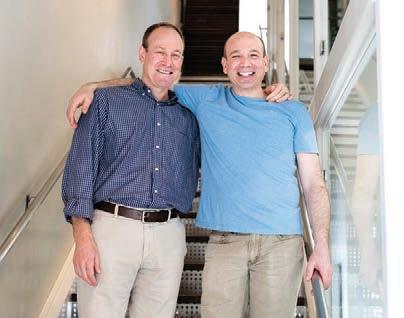

prospect of being a neighborhood anchor.
They knew they needed a larger kitchen to work in, but they also knew they wanted a shop and kitchen in the same building so people could watch the process of ice cream being made, Pete said.
“We wanted to build the best ice cream shop in the world, right here in Cleveland,” Mike Mitchell said.
Patrons and locals may notice that Mitchell’s spends relatively little on traditional marketing like placing billboards or ads and, instead, directs its money to three places: customers, products and their team.
While they “don't have an advertising budget,” the brothers do advertise with the Guardians, where they have been a partner for about 15 years, and radio stations WCPN and WCLV.
A connection with the Guardians goes back to the early days when the brothers were approached to create avors for former shortstop Omar Vizquel to be carried in grocery stores, Mike Mitchell said.
According to Smart Business, the four avors carried at the time were Triple Play Berry Sorbet, Double Play Chocolate, Bases Loaded Mint Cookies & Cream and Omar’s Awesome Vanilla Bean.
Heinen's had the Vizquel avors alongside other Mitchell’s avors to start the grocery side of the business. e company's products now are in a handful of other grocery stores, too.
“ at’s just what feels like the right t for us. All of the pints that we sell are made in this not-toobig kitchen here in Ohio City,” Pete Mitchell said of the brothers' desire to stay local.
vegan and dairy-free options.
“ e vegan avors we make, they are equally delicious as the dairybased ice cream,” Pete Mitchell said. “ ey’re really good, they’re rich, they’re creamy, they’re delicious.”
When it comes to the future, he said they want to do this for their lives and that they are not looking to stop working or building something to sell.
“It’s a personal thing that we do,” Mike Mitchell said.
“We enjoy what we do,” Pete Mitchell added. “We hope that we can continue to do this and be a part of the Cleveland community for decades to come and probably this will be our kitchen for all that time.”
To celebrate 25 years, throughout the month of October, Mitchell's will o er a special birthday cake avor. Following its Oct. 6 anniversary, the chain will o er a special birthday cake sundae. e sundae — a layer of homemade cake with rainbow sprinkles, a scoop of birthday cake ice cream topped with fudge, rainbow sprinkles, whipped cream, a cherry and a special birthday ag — will be available while supplies last.
To end on a sweet note, Crain’s asked the brothers which of the avors was their favorite. Neither could give a de nite answer, but Mike Mitchell said right now it's the birthday cake ice cream or seasonal avors — such as fresh peach or lavender honey — when available.
Two of Pete Mitchell’s favorites are chocolate peanut butter cup and wild berry crumble, but he has been enjoying cookie dough with peanut butter sauce on it lately.
Since the start, the Mitchells believed ice cream shops could thrive year-round in Ohio. They also did not want to leave staff without jobs during winter months, or put strain on suppliers, Mike Mitchell said. There are “true winter days” where business is slow, but there are winter days where it's busy, too, Pete Mitchell added.
RIVERFRONT
From Page 1
the Cuyahoga River and Lake Erie converge, “is a unique opportunity to reclaim industrial land,” she added.
e federal grant is a signi cant but not nal step in acquiring the property at 2550 Riverbed St., which is appraised at about $6 million.
e Metroparks plan is to remediate the site, which currently provides limestone for construction projects, and create greenspace accessible to the Lakeview Estates public housing residents.
e larger, nearly $11 million grant will be added to about $32 million in matching funds for the construction of plazas, boardwalk, an amphitheater, and both picnic and play areas as part of the Irishtown Bend park.
e entire project, a collaboration with the Port of Cleveland Metroparks, LAND Studio, the city of Cleveland and Cuyahoga Coun-
In 2014, Mitchell's opened an Ohio City location, which has be-
come its agship, and for the last decade, everything for the shops and grocery stores has been made inside that kitchen. e
13,000-square-foot location in what both brothers call “the heart of the city” needed a lot of work because it had been vacant, but they “fell in love” with it and the
Re ecting on 25 years ago, he said he didn’t realize or appreciate that ice cream is a “really fun business to be a part of” because it's an “almost universally enjoyed product.”
ey have made sure that they have a mix of everything, including being Kosher and o ering

ty, is expected to cost between $40 million and $45 million
e creation of a 25-acre riverfront park will begin construction after the Port of Cleveland's $65
million hill stabilization project, to remove access dirt and trash, is complete. at project began in 2023.
“We are just starting the bulk-
head installation, which we think is about a 12- to 18-month phase,” said Will Friedman, the port's president and CEO. “We are looking forward to nishing the stabi-
“To make it all really super special and fun, really just about every day, is that I get to work with my brother and that’s really a gift,” Mike Mitchell said.
“Doing this with Mike, for me too, it’s really meaningful,” Pete Mitchell added. “I wouldn't have done it without him. I wouldn't have done it on my own.”
lization and allowing the Metroparks to begin work on the park.”
e grant also will pay for the park’s landscaping, while a separate, $3.35 million grant from a federal Congestion Mitigation and Air Quality Improvement Program will be used to construct the nal segment of the Metroparks’ Lake Link Trail.
Metroparks owns and manages more than 25,000 acres in the Cleveland area, including multiple former industrial properties along the lake and riverfront.
In January, the parks organization purchased a 3-acre former our mill at 1630 Merwin Ave. in the Flats for $3.5 million. e park system then bought the Columbus Road Peninsula's Catanese Classic Seafoods for $4 million.
In addition to funding for the riverfront development, Metropark was awarded $390,000 in grants to help renovate the skate park and tennis courts at Cain Park in the city of Cleveland Heights.
Cleveland’s Irishtown Bend project received over $10.8 million in funding for the construction of a 25-acre riverfront park. | LAND STUDIO
Pete (left) and Mike Mitchell at the chain’s Ohio City location. | MITCHELL’S ICE CREAM PHOTOS
Pints of Mitchell’s Ice Cream can be purchased at chain locations and certain grocery stores.
interest in helping individuals of modest means who may struggle to a ord an attorney.
“ e (CLC) is a social justice legal incubator designed to serve the justice gap, which is those who make too much to qualify for legal service through legal aid but still can’t a ord a market rate attorney to solve their civil legal needs,” said Kari Burns, the CMBA’s chief strategy o cer and director of the CLC.
While the program is just getting started, organizers expect it to be grown and re ned over time. e hope is to keep it going in perpetuity, though that will require continuous donor support.
“ ere is such a huge need here in Cleveland,” Burns said. “If we can keep this going and grow the amount of attorneys who are aware of this justice gap and able to help serve it, that will only bene t Cleveland and all of Cuyahoga County.”
As of its July launch, the CLC is sta ed by inaugural fellows Abby O’Leary, Joe Javorsky and Tyler Portner.
e program sought fellows who are within one to ve years of completing law school and passing the bar exam. O’Leary and Javorsky are both 2024 alums of the Case Western Reserve University School of Law, while Portner graduated from the school in 2019.
While each arrives at the CLC from di erent backgrounds, they’re all united by a sense of duty to help others and a hunger to nd ful llment in their careers by doing just that.
“ is is really the perfect opportunity to serve the group of people I know I wanted to help and also get a lot of support and resources to start my own rm a lot sooner than I thought I would be able,” O’Leary said.
Targeting the gap
While groups like the Legal Aid Society of Cleveland provide legal services to individuals facing nancial hardships, they only serve those making up to 200% of the poverty line, or about $30,000 a year.
But people earning more than that may still struggle to a ord an attorney at market rates.
In 2018, the average market rate for an attorney in the state was around $200 to $250 an hour, according to the 2023 Pro le of the Legal Profession in Ohio from the Ohio State Bar Association.
Today, Burns said that the average hourly rate today is around $260 and could be as much as $400.
According to the 2022 Justice Gap Study by the nonpro t Legal Services Corp., 90% of lowincome Americans received either inadequate legal help with civil legal challenges in 2021 or none at all, while 46% said that they didn’t even seek legal help because of the cost.
e justice gap forms because there is a large segment of the population that makes too much to be helped by nonpro t legal

CLC through the lawyer referral service, the CMBA collects a 15% referral fee. Everything else goes to the attorneys.
But unlike comparable programs in other markets that o er these sorts of solo practitioner incubators and charge attorneys to participate, the CLC pays a stipend of $50,000 to each fellow for their rst 12 months.
“ e goal is really that you eventually have a book of business to stand on your own, but with o ce space and referrals provided (by the CMBA),” Burns said, underscoring the program’s role as an incubator for solo practitioners.
e CLC may be the rst program of this sort in the country to pay the fellows to participate.
learn from the last.
“We are open for business. Business is booming. And we need more people,” Javorksy said.
Burns estimates the program will cost about $280,000 through its rst year, which assumes that second cohort of three attorneys joining in January.
e initial funding for this was raised entirely through donations, including those raised during the CMBA’s Legacy150 campaign last year which celebrated the nonprofit’s 150th anniversary.
e program will be in need of ongoing funding as well as volunteers who can conduct programming to help support and educate the lawyers involved.
Anyone interested in providing support such as this can reach out to Burns at the CMBA.
Low-income households in the U.S. that had at least one civil legal problem in 2021
Low-income households in the U.S. that had ve or more legal issues in 2021
Low-income Americans received inadequate aid or no help with civil legal challenges in 2021
Low-income Americans who did not seek legal help because of the cost Legal Services Corporation Justice Gap Report
Source:
aid groups, which are already stretched thin — legal aid organizations commonly say they turn away about one person who would be eligible for service for each one they help — but not enough to comfortably a ord a lawyer at expensive market rates. is is why programs such as the CLC target individuals making between 200% and 400% of the poverty line, or about $60,000 a year on the upper end of that scale. ese people typically are employed and may even own or operate small businesses.
A signi cant portion of the Cleveland population falls into that income category: nearly 60% of its households earn less than $50,000, according to census data and the latest American Community Survey.
An analysis by the CMBA itself suggests that just 8% of Cleveland households make more than 400% of the poverty line, which means that some 92% of all of Cleveland proper may be eligible for assistance from the CLC.
In terms of the dynamic between the CLC and legal aid, the former can be viewed as supplementing what the latter already does.
“At (the LASC) we eld in excess of 20,000 new applications for service a year, and we only have capacity to help about one of every two people who call,” said Lauren Gilbride, managing attorney of intake and the volunteer lawyers program at the LASC.
“We have to have tough conversations with people who need
an attorney but do not qualify for legal aid’s help,” she added. “We are a proud long-time partner with the CMBA and its referral service. And now, the (CLC) provides the community with an additional and important resource: access to attorneys for those who make too much income to qualify for legal aid’s assistance.”
“ e (CLC) represents the best of what we can do when we work together to support the legal needs of the community,” said CMBA CEO Chris Schmitt. “We’re connecting those in desperate need of legal assistance with skilled lawyers they can a ord so they can get the help they’re entitled to in our system of justice.”
How the collaborative works
e CLC leans, in part, on the existing lawyer referral service operated by the CMBA. But referrals also come in other ways, including from legal aid and even law rms who might point a potential client their way.
As referrals come in, the CLC attorneys work together to decide who takes what or how they might split up the work. O’Leary said they’re already processing between 10 to 20 referrals a week. ey’re all civil matters, but the needs can vary widely. Clients may be looking for help with a bad landlord or writing a will or in need of guidance with some challenge they’re facing as a small-business owner. ey may prepare documents or give quick legal opinions on what someone should do next in their respective situation.
And sometimes, the lawyers will have to tell someone that there’s no case or legal issue at all.
“A lot of interactions are these phone calls,” O’Leary said. “It’s a lot of talking to people, hearing their problems and helping them feel a little better even if it’s not a case we can take or a case at all.”
CLC clients get a free 30minute consultation. After that, their rates are roughly $100 an hour. But that’s not set in stone. CLC attorneys are open to even lower rates when necessary and basing fees on a sliding scale.
In the works is a menu of at fees for basic work, like writing that will. e goal is to post those fees online in the coming months.
For any matters brought to the
Charging attorneys to participate in such a program is a “horrible model,” said Steven Kaufman, a prominent commercial litigator serving UB Greensfelder in an of counsel role who provided a large gift to get the CLC up and running.
“You want bright, energized, motivated people, but they should be paid fairly for what they do,” Kaufman said. “ ese are really energized people who are bringing a lot to the table. And clients will pay something that is fair where they come from economically and get a quality product regardless of the size of the economics of that particular engagement.”
“ is, to me, is another reason to be proud of Cleveland and Ohio,” Portner said. “I do think this could be a model that other cities rely on or at least look to. But I think it is tting this is coming out Cleveland, and I think people should be proud it’s coming out of here.”
Building something that lasts
e CLC launched in July because that is the start of the CMBA’s scal year, and the initial cohort will be in place for 18 months, or through the end of next year.
Applications are already open for another cohort of fellows who will join the program in January. e goal is to continue adding new groups in a staggered fashion like this so each incoming group can
“ e more this program grows, the more help we are going to need,” Kaufman said, noting that he’s already considered a follow-up donation of his own.
“If the program works, and I expect it will, we are going to want to expand it,” he said. “We are going to want more fellows to deal with what will probably be a greater docket than we can handle. And anything someone can do to help support the program itself and its growth could be very meaningful to the bar.” “ e foundation applauds the (CLC) as an innovative and replicable model to help address the signi cant unmet legal need for Ohioans who compose Ohio’s lowto-moderate income communities, earning too much to qualify for legal aid’s services, but too little to retain private counsel,” said Angela Lloyd, executive director of the Ohio Access to Justice Foundation.
“ e collaborative is truly exciting because it simultaneously trains young lawyers, not only in the practice of law, but also in the importance of lling the justice gap and provides transformative legal services that resolve issues, thereby enabling Ohio families to prosper by achieving everything from stable families to reduced debt to secure housing,” she added. “It’s a terri c project.”
The Cleveland Legal Collaborative’s founding fellows work at their space at the Cleveland Metropolitan Bar Association. The group comprises, from left, attorneys Joe Javorsky, Tyler Portner and Abby O’Leary. | CLEVELAND METROPOLITAN BAR ASSOCATION
PEOPLE ON THE MOVE
ACCOUNTING
Somich & Associates CPAs
FINANCIAL SERVICES
Gries Financial Partners
LAW
Hahn Loeser & Parks

We are pleased to welcome John Godfrey to the Somich & Associates CPAs team as Tax Supervisor. With over 20 years of tax experience, John brings a wealth of knowledge in tax compliance, planning, and advisory services. His expertise will enhance our ability to serve clients with the highest level of professionalism and accuracy. John's dedication to delivering outstanding tax solutions aligns perfectly with our rm’s mission, and we are excited to have him join our growing team.

BANKING
S&T Bank
John Batcho has joined S&T Bank as Senior Vice President of Commercial Banking, focusing on the Ohio market. With extensive experience working with middle-market companies, John brings deep regional knowledge and business acumen to his role. He will provide strategic nancial solutions, including cash ow nancing, capital structuring and treasury management. Prior to joining S&T Bank, John held senior leadership roles in commercial banking, most recently with Wells Fargo.
To place your listing, visit www.crainscleveland.com/people-on-the-move or, for more information, contact Debora Stein at 917.226.5470 / dstein@crain.com FINANCIAL


SERVICES
Ancora
Tourism rebound puts Cuyahoga County close to pre-COVID numbers
By Kim Palmer
night visitors (42%).

Gries Financial Partners, an RIA with $1.7 billion in AUM and AUA, appointed Carina Diamond as Chief Growth Of cer. She will also serve as Chief Growth Of cer for parent company The 4100 Group Financial Services, an innovative nancial services platform. With over 25 years in wealth management, Carina will drive growth initiatives and talent development. Previously, she founded Stella Secunda and served as Chief Growth Of cer at Dakota Wealth Management, leading signi cant growth efforts.

FINANCIAL SERVICES
PNC Bank
PNC has named Daniel Roberson as executive director of the PNC Fairfax Connection, PNC’s free community resource center in the historic eastside community. Roberson will lead the center’s staff in sustaining and building upon successful community partnerships and programs designed to empower individuals and businesses and help strengthen the community. He most recently served as PNC’s community development of cer and was integral in leading PNC’s nancial wellness training to the underserved.

HEALTH CARE
Crystal Clinic Orthopaedic Center

Ancora is happy to announce that Lance “Putter” Johnson, CFP ® has joined the rm as a Vice President and Wealth Advisor. Putter will serve clients as an advisor and relationship manager, providing personalized solutions to help clients meet their nancial goals. Putter brings over 15 years of industry experience to Ancora, working most recently with MAI Capital Management as a senior wealth advisor. Putter earned a Bachelor of Science in Business Administration from Elon University.
Michael Shumaker, D.O., a fellowshiptrained, board-eligible spine surgeon, will be providing services at Crystal Clinic Orthopaedic Center. He is now seeing patients in Ashtabula and Lyndhurst. Dr. Shumaker specializes in spine care, with a special interest in minimally invasive spine surgery, treatment of herniated or damaged spinal disks, spinal fusion procedures, vertebral compression fractures, complex spine surgery, adult scoliosis, and sacroiliac joint fusion.


The Firm welcomed Associate Matthew Wagner to its Litigation and Construction Practices. Wagner has experience in civil litigation, white-collar criminal law and government investigations, including healthcare fraud, banking regulations and violations of company policy. He has worked on complex discovery, trade secret theft, cybersecurity, Title VII, breach of contract, and labor and employment matters. Wagner earned a J.D. from Cleveland State College of Law and a B.A. from Catholic University.
LAW
Taft


Tourism in Cuyahoga County was nearly back to pre-COVID pandemic levels in 2023.
According to data released by Destination Cleveland, there were 18.34 million visits last year to Cuyahoga County, which is 94% of the number of people who traveled to the region, for fun or business, in 2019.
e 2023 gure represented a 2.2% increase over 2022 and was the third consecutive year of growth in visitation. is places the county just behind the state’s 2.3% annual growth rate, according to Tourism Economics, a travel and tourism industry economic forecasting rm.
e numbers show a steady rate of growth for an industry that continues to rebuild after the devastating COVID-19 disruptions.
“We know business travel is still down, and business travel tends to stay overnight," Gilbert said. " e inference is that more leisure and convention travelers, particularly leisure travelers, are now opting to stay overnight, because our overnight number is the same while business travel is down, so that di erence is most likely made up by leisure travelers."
While the 2023 county visitor numbers came in below prepandemic levels, visitor spending and incomes from the hospitality industry surpassed 2019 growth rates and levels.
Visitors to Cuyahoga County spent $6.7 billion in 2023, 4.5% more than was spent by a higher volume of tourists in 2019. ose 2023 visits also generated a total of $1.5 billion in federal, state and local taxes.

Dorothy Swagler is an associate in Taft’s business group, specializing in mergers and acquisitions, private equity, and venture capital transactions. She also collaborates with businesses on corporate organization, governance, and other related matters. Dorothy earned her J.D., magna cum laude, from Cleveland State University College of Law, and her bachelor’s degree in political science, magna cum laude, from John Carroll University.

PROMOTE.
Why not?
Celebrate your success with promotional products!
• Digital Reprint
• Logo Licensing
• Social Media Images
• Plaques/Frames
Contact: Laura Picariello
Sales Manager
732.723.0569
lpicariello@crain.com
“I feel good about the growth in the travel and tourism economy," said David Gilbert, president and CEO of Destination Cleveland. "It shows that we're back in a strong growth mode compared to the 2019 baseline, rather than from the COVID numbers which had us down by 60% at times."
e 2023 data, which takes nearly a year to compile and report, is a good look at the rst year in which people were not making travel decisions based on COVID, Gilbert said. at gives his organization a perspective on the new normal of travel and tourism.
“We're not thrilled with the growth numbers, but we're not upset with them, either," Gilbert said. "I think the 2023 data provides a very important baseline for us."
For instance, national parks, a big destination for travelers during the pandemic for safety reasons, are still a popular destination, Gilbert said. And business travel, which plummeted during the pandemic, has been slow to return.
Cuyahoga County, which is considered a “drive market” for travel purposes, consistently sees a higher percentage of day visitors (58%) than over-
“If you look at total visitor volume levels relative to revenue generated by visitors ... but with in ation rates at 2% to 3% compared to the 3.7% increase from 2022, it shows that people are just spending more,” Gilbert added.
The higher direct spending contributed to $3.7 billion in income for the more than 68,100 county residents who worked in the tourism industry last year. The number represents a 6.6% increase from 2022 and is 32% higher than 2019 levels.
When looking at 2024 data on hotel performance, collected and reported closer to real time, the county’s recovery is on pace to keep up with the national market. Gilbert said he considers that a good sign.
Cleveland’s year-to-date hotel occupancy rates are within 98% and of pre-pandemic levels, while the city’s average hotel daily rate is up 28% from 2019.
“Overall, the fact that we grew and that spending is way up is a really good thing,” Gilbert said. “And when we look at early 2024, our hotel occupancy and rates, our growth is doing extremely well. Because we had record months, we continue to be at the top end of our peer set.”










GIVING GUIDE
Celebrating Northeast Ohio’s nonpro ts
MAKE YOUR GREATEST CHARITABLE IMPACT BY PARTNERING WITH THE CLEVELAND FOUNDATION
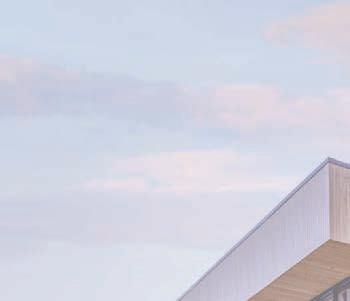


I would like to make a difference supporting nonprofit organizations and causes that interest me.

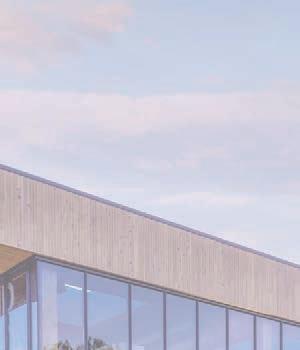




I would like to make an IMMEDIATE IMPACT…
I care about nonprofit organizations and community issues either locally, regionally or nationally.






I’m interested in social impact investing to leverage strong returns and make an even greater charitable impact.
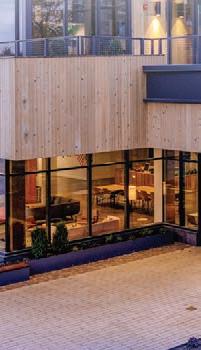

I would like to plan for a FUTURE IMPACT…





And remain active with grantmaking.


And support affinity funds.


DONOR ADVISED FUND
Create and execute your personal and/or family mission and vision for giving while leveraging our team’s expertise.



AFFINITY FUND
A inity funds are groups of donors and community members united by a shared heritage, identity or common interest. Donating to the LGBTQ+ Opportunity Fund, LatinX Fund and the Black Futures Fund are great ways to amplify impact in these communities.
ESTATE GIFT
With a gift from my estate.


And rely on the foundation to carry out my intent.

With a gift that provides immediate tax benefits and also generates income back to me or others.


Create a customized charitable estate plan to support your beloved organizations and causes when you are no longer able to do so. We work with your professional advisors to achieve your long-term charitable goals.



LEGACY FUND
Support one or more of your favorite charitable organizations or an interest area, for example, education, through a Legacy Fund. We can distribute a consistent stream of income in perpetuity according to your wishes.



CHARITABLE GIFT ANNUITIES and CHARITABLE TRUSTS
Explore giving options providing you with lifetime benefits while providing a charitable legacy to carry out your intentions long into the future. We can provide illustrations to assist you and your advisors on the many options.


DIRECTORY OF STRATEGIC GIVING OPPORTUNITIES
The annual Crain’s Cleveland Business Giving Guide, produced by Crain’s Content Studio, tells the stories of 31 nonpro t organizations that are making a positive impact on the community.
The participants featured here sponsored this Giving Guide. The organizations had the opportunity to explain their mission and vision, outline new initiatives, and describe fundraising plans. Connect with Crain’s Content Studio to learn more.
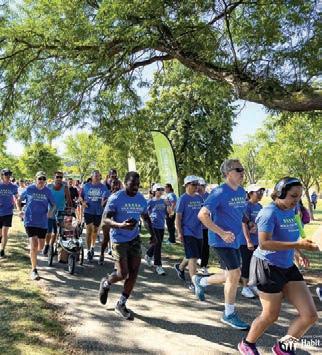

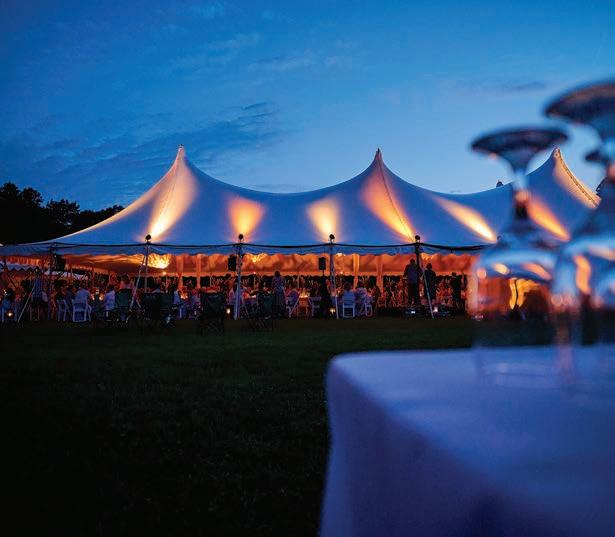


GIVING GUIDE PLATINUM SPONSOR:
Cleveland Foundation
SOCIAL RESPONSIBILITY CHAMPIONS:
Cleveland Institute of Art
Ideastream Public Media
Journey Center for Safety and Healing
PARTICIPANTS:
Akron Children’s Foundation
American Heart Association of Greater Cleveland
American Red Cross, Northern Ohio Region
Beech Brook
The Centers
Cleveland Metroparks
Cleveland Museum of Natural History
The Cleveland Orchestra
Cleveland Zoological Society
Conservancy for Cuyahoga Valley National Park
Crossroads Health
Cuyahoga County Public Library Foundation
Girl Scouts of North East Ohio
Goodwill Industries of Greater Cleveland and East Central Ohio, Inc.
Great Lakes Science Center
Greater Cleveland Habitat for Humanity
HELP Foundation, Inc.
Hudson Community Foundation
The Legal Aid Society of Cleveland
Malachi House
The MetroHealth Foundation
National Kidney Foundation, Inc.
OhioGuidestone
Planned Parenthood of Greater Ohio
United Way of Greater Cleveland
West Creek Conservancy
Women Religious Archives Collaborative
Thank You
crainscleveland.com
Associate publisher: Amy Ann Stoessel
Custom content coordinator: Chris Lewis
Project editor: Kathy Carr Art director: Joanna Metzger
Reporters: Brooke Bilyj Vince Guerrieri
Produced by Crain’s Content Studio - Cleveland, the Giving Guide is a collection of information submitted directly by the nonpro ts as a way to familiarize readers with their organizations. All participating nonpro ts purchased advertising space. The supplement can also be found at www.CrainsCleveland.com/ GivingGuide24
SOCIAL RESPONSIBILITY CHAMPION: Cleveland Institute of Art
Cleveland Institute of Art connects innovation with community impact
By Brooke Bilyj Crain’s Content Studio
With approximately 600 students and an intimate student-tofaculty ratio of 10:1, the Cleveland Institute of Art (CIA) combines a personalized educational experience with the bene ts of a nationally recognized college. Nestled in the cultural hub of University Circle, CIA continues cra ing a 142-year-old legacy of creativity and innovation.
“Innovation means that you’re always learning, always changing, always disrupting, and these are things that our faculty wholeheartedly teach,” says Kathryn Heidemann, president of CIA since 2022.
Driven by a mission to cultivate creative leaders who inspire people, strengthen communities and contribute to a thriving and sustainable economy, Heidemann says, CIA is “in ltrating industry and community in all the right ways to be relevant.”
Industry connections
Inside the classroom, CIA’s passionate faculty of practicing artists and design professionals teach a comprehensive, everevolving curriculum that combines hands-on skills with a well-rounded education. But the real magic happens beyond the classroom.
“What makes CIA unique is the way that we apply learning into the real world,” Heidemann says.
For example, all students must complete an “Engaged Practice
course that applies their art and design practice to a community project,” as well as a “Professional Practices series of courses,” which cover entrepreneurship and business.
“Having that direct application to the real world is an important part of CIA’s value proposition,” Heidemann says.
Students put learning into practice through partnerships with the Greater Cleveland Rapid Transit Authority, Detroit-based automaker Stellantis and other prominent companies, exercising skills ranging from industrial design to animation.
Bridge to innovation
A new facility will bring these partnerships into a di erent dimension. Slated to open in January 2025, CIA’s Interactive Media Lab (IML) is “centered at the nexus of art and design technology, industry and community,” Heidemann says.
e IML will feature cuttingedge immersive technologies such as virtual reality (VR) and augmented reality (AR). It will also be home to an extended reality (XR) virtual production stage, “where you can experience design through the coexistence of the material environment and the virtual environment,” she explains.
e new space will equip CIA students with the most advanced tools.
“If students don’t have those new tools, they’re going to be at a disadvantage when they’re

applying for jobs,” says Professor Steven Gutierrez, division chair and academic lead of the IML. “Having those tools will help our artists really push the edge.”
Not only will the IML provide innovation space for students, but it will also unlock new opportunities for collaboration across industries. As a tenant in the Cleveland Foundation’s new MidTown Collaboration Center in the heart of the HealthTech Corridor, the IML will neighbor other industry-leading institutions including JumpStart, Case Western Reserve University, University Hospitals, Hyland So ware and more.
“When you have di erent sectors working together, that’s where innovation happens,” Heidemann says. “ at’s where the growth economy is.”
Giving support
CIA’s commitment to “investing in creativity” propels alumni into successful entrepreneurial ventures and some of the most recognizable companies in Northeast Ohio.
“An investment in creativity is an investment in regional innovation,” Heidemann says.
To support these investments, CIA recently publicly announced its Transformation Campaign, which is a comprehensive campaign that will raise funds toward a combination of capital, operating and endowment support, the latter focusing on scholarships.
With a total goal of $35 million — and $27 million already raised by the end of August — the campaign focuses on the theme of transformation. is includes transforming student access and success through scholarships and support services, transforming teachers through the new Jane B. Nord Center for Teaching + Learning, transforming innovation through the new IML, and transforming the campus and community along the way.
“We’re not just a college of art and design, we’re a key community partner, thought leader and innovator,” Heidemann says. “As part of this innovation ecosystem, we’re continuing to look to the future.”
Contribute to CIA’s future by visiting cia.edu/campaign.

Cleveland Institute of Art faculty member Katie Melnick wears a Meta Quest Pro virtual reality (VR) headset to experience VR motorcycles designed by CIA students taking the Concept Vehicles and Transportation course taught by faculty member Jason Tilk, also pictured, during the college’s 2024 Spring Design Show.
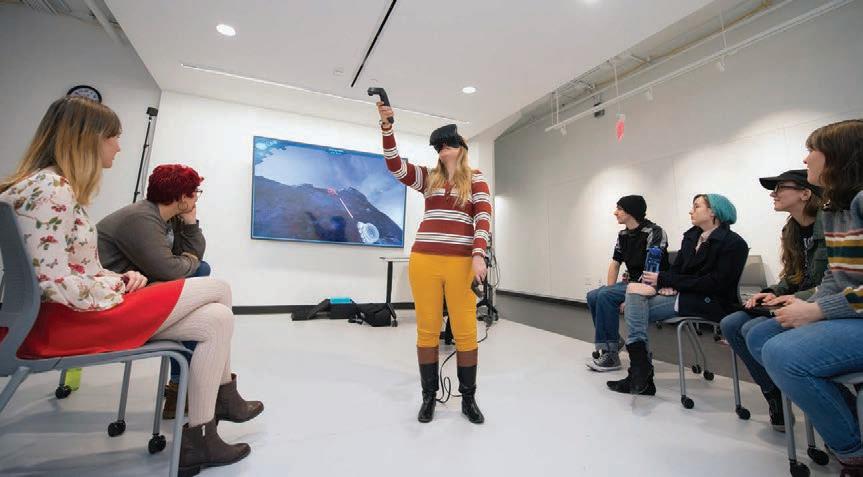



Support the Cleveland Institute of Art Invest in creative innovation
Ever since the Cleveland Institute of Art first started educating creative students more than 140 years ago, its artists and designers—and leaders—have dreamed big. That ambition continues to this day as CIA builds its state-of-the-art Interactive Media Lab, which will be Northeast Ohio’s new intersection of art, design, innovation, technology and community.
Invest in Cleveland students’ futures. Transform Cleveland’s creative economy. Support the Cleveland Institute of Art Interactive Media Lab.
Scan the QR code or visit cia.edu/IML to learn more and to support the Interactive Media Lab.
SOCIAL
RESPONSIBILITY CHAMPION: Ideastream Public Media
Engaged journalism empowers communities
By Vince Guerrieri Crain’s Content Studio
Marlene Harris-Taylor wants to report with the community she covers, and not just about them.
As Ideastream Public Media’s director of engaged journalism, Harris-Taylor’s goal is to build trust in the community and center voices that might not otherwise be heard.
“All of the control and decisionmaking in traditional journalism is made within the organization,” she says. “We cede a bit of that control to the community and ask the community what we should be covering and how we should be covering it. We want to make it a regular way we operate and not a one-o or a special project.” Harris-Taylor joined Ideastream as a health reporter in 2016. (Ideastream is unique in that it has a health journalism team, funded by e Dr. Donald J. Goodman
e health team created
“Connecting the Dots Between Race and Health,” an innovative multi-media project highlighting racism as a public health crisis. Reporters and partner creators used various media to show systemic barriers causing unequal health outcomes. In addition to news stories broadcast on WKSU and published on ideastream. org, the project included a podcast focused on recent ndings surrounding the health and wellness of Black women in Northeast Ohio. Cleveland was named the least livable city for Black women in a 2020 Bloomberg CityLab article based in part on signi cant disparities in maternal and infant mortality between Black and white residents.
“We started to think about putting the podcast together, and we went to the community. We held focus groups, and through them, we found out that Black women said that they wanted something actionable,” Harris-Taylor says.
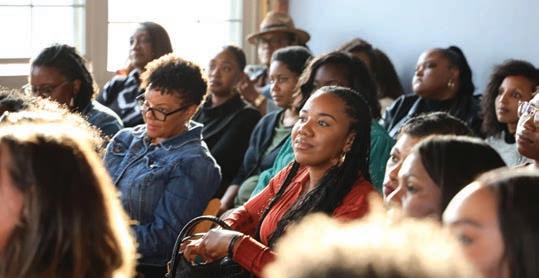
Cleveland, Akron, Canton and Lorain. at podcast is scheduled to debut in January.
e goal with the podcasts, Harris-Taylor says, is to connect with people on the ground who might not be the most quoted but have expertise.
at approach works with many types of stories too. Justin Glanville, deputy editor for engaged journalism, said one of his rst projects when he started at Ideastream in 2019 was a commemoration of the 150th anniversary of the Cleveland Public Library, which incorporated some community storytelling.
“ ere’s an appetite for these community-driven stories, where we’re in the community with an open mind and building relationships with people before we know what the story is,” he says.
Connecting with the right outlet
Part of engaged journalism, Glanville says, is nding the right forum for it as well. Some stories might work better just on the radio. Some might work better with video. And then, he asks, how do they nd their audience?
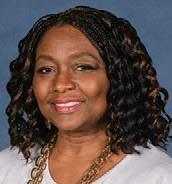
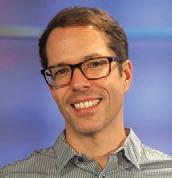
and Ruth Weber Goodman Philanthropic Fund, which is managed through the Cleveland Foundation.) In 2020, many organizations and governments started to address racism as a public health crisis. at was also the year that Gov. Mike DeWine assembled the Minority Health Strike Force to address the racial disparity of health outcomes in Ohio.
Fostering real-community connections
e resulting podcast, “Living For We,” was “successful beyond our wildest dreams,” she says, with 130,000 downloads and numerous awards. Season 2 of “Living For We” is in development and will feature a deep dive on gun violence, with listening sessions throughout Northeast Ohio, in
“ e people we might be working with on these stories aren’t necessarily Ideastream listeners,” he says. “Where do they get their content? Is it YouTube? Is it Facebook? Are there in-person events we need to be having? Should we be having listening parties? We need to consider all of this in order to meet the audience where they are.”
And through Ideastream’s “Sound of Us” project, some people get to tell their own stories.
“A big part of engaged journalism is collaborating with people, but this takes it a step farther,” Glanville says. He and the team work with
communities that want to tell their own radio stories, taking about eight to 10 weeks to conceive the stories, conduct interviews, write scripts and then voice them. Among those they’ve worked with, he says, are Richmond Heights High School, the LGBT Community Center of Greater Cleveland and the Julia De Burgos Cultural Arts Center.
“ ere’s something so powerful about hearing non-trained journalists come and tell their stories,” he says. “ ose stories really stand out on the air because audiences can tell they’re hearing something that comes directly from another person’s lived experience.”
To experience Ideastream Public Media or to make a donation, visit ideastream.org.

Ideastream Public Media aims to ensure the communities in which it covers are a part of the storytelling. Photo by Brian_K_Artisan_Photography
Justin Glanville, deputy editor for engaged journalism
Marlene Harris-Taylor, director of engaged journalism

SOCIAL RESPONSIBILITY CHAMPION: Journey Center for Safety and Healing
Journey Center provides comprehensive support for victims of domestic violence and abuse
By Brooke Bilyj Crain’s Content Studio
For victims of domestic violence and abuse, the path toward safety and healing can be a di cult road — but they’re not alone. Journey Center for Safety and Healing provides support for every step of the journey, while working to prevent abuse through education, advocacy and systemic change.
“Many people think of shelters as the solution to domestic violence, but our shelter is our smallest program in terms of client numbers,” says Carol L. Carbary, ACFRE, chief development and marketing o cer. “We are so much more than that. We are a comprehensive organization, so any service that a victim may need throughout their journey, we provide or connect them with an agency that can.”
Meeting the need
Last year, Journey Center served 147 clients in its con dential shelter, o ering a safe space with crisis intervention, safety planning and other support services. Safe & Sound Visitation Center provided more than 1,500 supervised visits and exchanges to clients. Additionally, Journey
October is Domestic Violence Awareness Month. If you need to talk, you are not alone. We are here to listen. We believe victims. Our 24-Hour Helpline is always available. Call or text 216-391-4347 (HELP) or chat at Journeyneo.org.
Center’s 24-hour Helpline elded more than 7,000 calls, providing information, referrals and intake for its programs.
In total, the organization served more than 22,000 people last year. While its reach and impact are obvious; unfortunately, the prevalence of violence is much bigger than that.
“We’re serving who we can, but we could be doing so much more,” says interim CEO and CFO Robin Johnson. “Even if we doubled our budget, we wouldn’t meet the need.”
In fact, she says, “One in four women and one in seven men 18 or older in the U.S. have been victims of severe physical violence by an intimate partner.”
In Ohio, according to Journey Center’s annual report, the percentage of children who have witnessed domestic violence is 28% higher than the national average — but the organization hopes to rewrite those statistics.
Economic impact
In addition to the physical and mental trauma, the nancial impact of domestic violence can be devastating.

“ e data show that up to 99% of domestic violence victims have experienced some form of economic or nancial abuse,” Johnson says. Nationwide, “victims lose a total of 8 million days of work annually, and 60% of victims ultimately lose their jobs as a result of abuse.”
e cost of leaving an abusive situation can exceed $1,000, according to Carbary, but the average victim has less than $250 in savings. To help alleviate the nancial burden on victims, Journey Center provides its services at no cost to clients, while continuing to improve and expand its programs.
For example, the organization recently launched its Domestic Violence Housing First Initiative, which helps survivors nd housing.
“Finding safe, stable, a ordable housing is a critical issue, and there is a severe shortage in Cuyahoga County,” Carbary says.
Funding support
As the costs involved in providing these services continue to rise, Journey Center also faces drastic cuts to funding. Federal funding through the Victims of Crime Act has declined by more than $1 million, while the organization’s largest private funder discontinued its grant program, slashing another $286,000 from Journey’s annual budget.
While government grants fund about 72% of Journey Center’s $6 million budget, and foundation grants support another 15%, the organization depends on private donations “to ll in funding gaps and pay for things that grants won’t cover,” Carbary says.
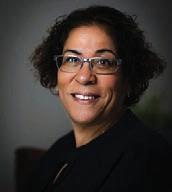

Beyond monetary donations, the organization also accepts gi cards, cell phones and other supplies from its Amazon wish list. Additionally, in December, Journey Center hosts its annual Twinkle Shop event, where clients and their children can “shop” for free, choosing from a selection of donated gi s.
“We provide a lot of basic needs, but Twinkle Shop is about wants,” Carbary says. “Many clients say they would not have been able to give their children a holiday without this.”
Contribute to Journey Center’s impact at journeyneo.org/donate.

Carol L. Carbary, ACFRE, chief development and marketing of cer
Robin Johnson, interim CEO and CFO


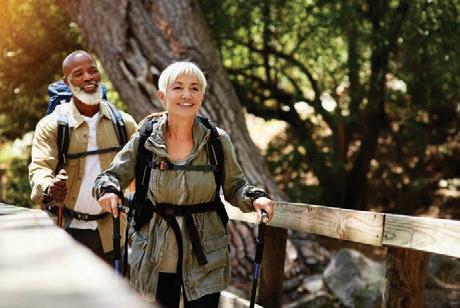

Akron Children’s Foundation
WHAT WE DO
Akron Children’s Foundation secures funding from generous donors to support the health care needs of infants, children, adolescents and burn victims of all ages.
It also receives and records all gi s, appropriately manages and invests these funds, and disburses the funds in the best interest of Akron Children’s.
Akron Children’s has been caring for children since 1890. With two hospital campuses— along with six regional health centers and 50-plus primary and specialty care locations throughout Ohio—we’re making it easier for today’s busy families to nd the highquality care they need.
In addition, we partner with other health systems to bring our neonatal and pediatric expertise to patients in their respective community hospitals.
With nearly 1.4 million patient visits in 2023, we have been leading the way in improving children’s, teenagers’ and young adults’ health through excellence in ve key ways: patient care, education, research, advocacy and community partnerships.
We were founded on the principle of serving the needs of children. is means our employees and volunteers uphold our promises to treat every child as we would our own, to treat others as they want to be treated and to turn no child away for any reason.
HOW YOU CAN HELP
DONATE: Akron Children’s Foundation supports the hospital’s life-changing work by connecting donors with causes they’re passionate about.
Our donors help meet the hospital’s needs by raising money for programs, services, equipment and items that support the healing process and help save lives.
Your giving makes a di erence in our patients’ lives, ensuring every child and family who walks through our doors will receive the best possible care. Give today at akronchildrens.org/donate.
HELP OTHERS: From hosting or participating in a special fundraising event, to volunteering at one of our locations, you can lend a helping hand to children in need.

EVENTS & FUNDRAISING
Dancing for the Kids: Since 2012, this event has raised more than $1.3 million. It features local celebrities, as they dance to raise money for the Showers Family Center for Childhood Cancer and Blood Disorders.
e Holiday Tree Festival: Each year, this festival features hundreds of holiday decorations, including trees, wreaths and holiday gi s to bene t Akron Children’s. Since 1982, volunteers have raised more than $7 million.
Radiothon: Since 1999, Akron Children’s Radiothon events—held annually on our two campuses—have raised over $15 million.
In 2024 alone, the Radiothons raised nearly $700,000 to support charity care, along with the areas of greatest need throughout the hospital.
In 2025, we will be hosting the 98.1 KDD Radiothon and Miracles and Promises on Feb. 13 and 14, respectively.
To learn more, visit akronchildrens.org/giving.

One Perkins Square Akron, 44308
PHONE 330-543-8340 ADDRESS
37 EMPLOYEES
2023 REVENUE
$35.6 million
FOUNDED IN 1967
WEBSITE akronchildrens.org/giving

LEADERSHIP
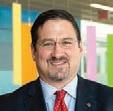
CHRISTOPHER GESSNER president and CEO, Akron Children’s

SHELLY BROWN chief development of cer and executive director, Akron Children’s Foundation
AKRON CHILDREN’S BOARD OF DIRECTORS CHAIR: Virginia Addicott
AKRON CHILDREN’S FOUNDATION BOARD OF DIRECTORS OFFICERS:
Mark Oelschlager chair
Kevin J. Helmick vice chair
Gordon T. Edwards treasurer
Beth R. Spain secretary
Dancers and guests celebrate the generous donations at Dancing for the Kids, in support of the Showers Family Center for Childhood Cancer and Blood Disorders.














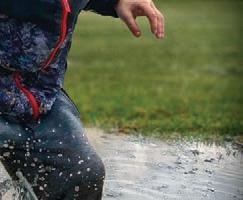


















American Heart Association of Greater Cleveland
WHAT WE DO
e mission of the American Heart Association is to be a relentless force for a world of healthier, longer lives. As we celebrate our Centennial Anniversary in 2024, we proudly stand as the nation’s oldest and largest voluntary organization dedicated to ghting cardiovascular diseases.
For 100 years, the Association has saved and improved lives, pioneered scienti c discovery and advocated for healthier public policies in communities across the country. Our bold e orts have transformed our nation’s health, as they have signi cantly reduced heart disease and stroke death rates.
However, these gains have not been shared equitably. Black, Hispanic, Native American, Native Hawaiian, Asian American, Paci c Islander and LGBTQ+ communities, as well as historically underrepresented populations across the nation, have su ered and died disproportionately. With Bold Hearts and powered by science, we pledge to work relentlessly to eliminate heart disease and stroke, optimize brain health and ensure equitable health in every community.
Locally, the American Heart Association of Greater Cleveland serves Ashtabula, Cuyahoga, Geauga, Lake, Lorain and Medina counties.
Since 1960, we have funded more than $116 million in research, which supports our exceptional local hospitals and research institutions.
Our local priority health focuses also include tobacco

and vaping prevention and control; improving blood pressure control; reducing health risks in women; improving healthy food access and community preparedness. rough education, quality systems improvement, advocacy, CPR training, research and programs for companies, students and communities, the Association engages Greater Cleveland to advance health and hope for everyone, everywhere.
HOW YOU CAN HELP
EXPLORE:
• Heart Walks engage walkers in physical activity, while also raising lifesaving funds.
• Go Red For Women empowers women to improve their cardiovascular health.
• Heart & Stroke Ball is an elegant evening that celebrates advancements in research and health equity for all.
• STEM Goes Red For Girls connects seventh- to ninthgrade females to STEM opportunities.
• CycleNation is a teambased cycling experience and social event that raises awareness, concerning brain health, related to stroke disorders.
JOIN: Volunteers are key to extending the American
Heart Association’s reach in the community. Opportunities are available to become involved in advancing the Association’s mission through education, advocacy, speaking opportunities and event logistics support.
HELP OTHERS: Ninety percent of people who su er out-of-hospital cardiac arrests die, in part because they do not receive CPR in time. CPR, especially if performed immediately, can double or triple a person’s chance of survival. Join the Nation of Lifesavers and learn CPR. For more information, visit heart.org/nation.
DONATE: To make a nancial gi , volunteer or support our community outreach e orts, call 216791-7500 or e-mail executive director Shelley Webber at shelley.webber@heart.org.
SHARE: Stay up to date by following us on Instagram @americanheartohio and Facebook @American Heart – Ohio.

ADDRESS
1375 E. 9th St., Suite 600 Cleveland, 44114
PHONE 216-791-7500
20 EMPLOYEES
2023 REVENUE
$3.65 million
FOUNDED IN 1924
WEBSITE heart.org/ohio

LEADERSHIP

ROB DURHAM Board chair
Shelley Webber, CFRE executive director
Molly Palmer vice president, Development
Sonya Vezmar vice president, Community Impact
Tom Hablitzel Board chair elect, Leadership Development co-chair and Giving Societies ambassador
Meera Kondapaneni, M.D., FACC, FSCAI Board president elect
Fred DeGrandis, J.D. vice chair, Ohio Advocacy Coordinating Committee, honorary lifetime Board member

JANINE ARRUDA, M.D., FAAP, FACC Board president
Cathy O’Malley Kearney, J.D. Midwest Region Board liaison, National Investment Committee member
Bradley S. Marino, M.D., MPP, MSCE, MBA Midwest Region Board liaison
Sam Prewitt National Marketing Communications Committee member
Lee Ann Howard Leadership Development co-chair
Matt Scovell Young Professionals Board chair
Charles Modlin, M.D., MBA
Anti-Tobacco physician champion, Health Equity Subcommittee chair
Thousands of local residents walk together during the 2023 Greater Cleveland Heart Walk, which was held in the Flats at East Bank.
THANK YOU TO OUR GREATER CLEVELAND 2024 HEART CHALLENGE LEADERS
Greater Cleveland Heart Walk Chair
George
Ashtabula County Heart Walk Chair
Jeff Orloff President SPIRE Academy
Cleveland CycleNation Chair
Shawn Isham
VP, Engine Business and SAE
Business Development & Global Support
Parker Hannifin Corporation



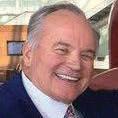


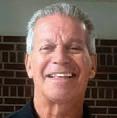
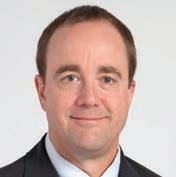


Dr. Benico Barzilai Cleveland Clinic Health
Alan Blankenship Grand River Rubber & Plastics
David Bourne Deloitte
Edvige Rita Camardo Impressia Bank
Ben Cooke
Hahn Loeser & Parks LLP
Nathan David Everybody Cycle
Fred DeGrandis NorthCoast Healthcare
Joan Greene Applied Industrial Technologies
Jason Guyer Schauer Group
Jeremy Halford GrafTech
Dan Haneline Marsh
Lee Ann Howard
Howard & O’Brien and Associates
Shawn Isham
Parker Hannifin Corporation
Jen Kirkpatrick Cisco Meraki
Robert Klonk Oswald Companies
Brian Lane
The Center for Health Affairs and CHAMPS
James Mayer
Huffman Mayer Wealth Management Group of Wells Fargo Advisors
Jim Mikolich
Parker Hannifin Corporation
Jeff Orloff SPIRE Academy
Niki Schaefer
ReliabilityFirst Corporation
Rob Schimmelpfennig HAVE Heating & Cooling
Kevin Sloan KeyBank
Leonard Stepp
Ashtabula Regional Medical Center
Jim Suttie
Corrigan Krause
Greg Teed Vitamix
Richard Trice
Glenbeigh Hospital, Ashtabula Regional Medical Center
Kurt Weber Deloitte
Tom Hablitzel American Heart Association Board of Directors
Dr. Stephen Cooke Stephen D. Cooke, D.D.S., Inc.
Richard Morrison Molded Fiber Glass
Patrick Scullin Giant Eagle
Lorena Deyman Cleveland Clinic
Joe Castillo Giant Eagle
Dr. Donald Malone Jr. Cleveland Clinic
Nick Liberatore Parker Hannifin Corporation
Tony Siracusa Steris Corporation
American Red Cross, Northern Ohio Region
WHAT WE DO
e American Red Cross prevents and alleviates human su ering in the face of emergencies by mobilizing the power of volunteers and the generosity of donors. rough a strong network of volunteers, donors and partners, we are always there in times of need.
For example, we shelter, feed and provide comfort to victims of disasters, big and small; supply about 40% of the nation’s blood; teach lifesaving skills like First Aid and CPR; distribute international humanitarian aid; and support veterans, military members and their families.
e Red Cross is a nonpro t organization that depends on volunteers, along with the generosity of the American public, to deliver its mission.
A er all, the Northern Ohio Region of the Red Cross alone serves 31 counties and their 5.3 million residents—by preventing, preparing for and responding to emergencies 24 hours per day, seven days a week. We respond to more than 1,000 disasters in the Northern Ohio region annually.
Subscribe to our blog at nohredcross.org and
nd us at Facebook.com/ NOHRedCross, Instagram.com/nohredcross, Linkedin.com/company/redcross-noh and @RedCrossNOH (on X).
HOW YOU CAN HELP
VISIT: To receive help, connect with us, learn more about our lifesaving mission and nd the best way to support us, visit redcross.org/ noh. You may also schedule an appointment to donate blood or a class to learn a lifesaving skill, while learning about available volunteer opportunities, too.
EXPLORE: Consider exploring ways to keep you and your family safe through our home re campaign. is campaign helps save lives by installing free smoke alarms in homes that don’t have them and by educating people about home re safety.
JOIN: You may also join our volunteer workforce. Volunteers are the life blood of the Red Cross, as 90% of our workforce is comprised of volunteers. Visit redcross.org/volunteer to discover the many volunteer positions that are available, such as blood donor
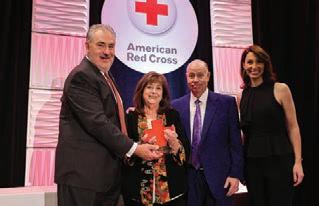
ambassador and Service to the Armed Forces caseworker.
HELP OTHERS: You can respond to disasters like home res or help people during their darkest hours by giving them immediate assistance and hope. In addition, you may donate blood or platelets to help patients in hospitals who need blood transfusions.
DONATE: Visit redcross. org/noh and tap “Ways to Donate” to give online, call 800-RED CROSS to donate on the phone or text RED CROSS to 90999 to make a $10 donation. You may also make an appointment to donate blood at redcrossblood.org.
SHARE: Share our story by subscribing to our blog at nohredcross.org. You may also follow us on social media at Facebook.com/ NOHRedCross, Instagram.com/nohredcross, Linkedin.com/company/redcross-noh and @RedCrossNOH (on X).
EVENTS & FUNDRAISING
• Bashfest, A Holiday and Hero Celebration, Nov. 16, Hall of Fame Village, Canton
• Acts of Courage and the H. Peter Burg Community Leader Award, March 6, 2025, Hilton Akron Fairlawn
• Northeast Ohio Hero Awards and Lorraine C. Dodero Community Leader Award, June 5, 2025, Cleveland Marriott Downtown at Key Tower

3747 Euclid Ave., Cleveland, 44115
300 EMPLOYEES
2023 REVENUE
$8.7 million
FOUNDED
WEBSITE redcross.org/noh

LEADERSHIP
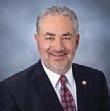

regional donor services executive
Chapter
Tim O’Toole regional chief operating of cer
Michelle Polinko regional chief development of cer
Emily Probst regional disaster of cer
Gail Wernick regional volunteer services of cer
Alaina Foster regional program manager, service to the armed forces/ international services
Jim McIntyre regional communications director
Rachel Stine executive director, Greater Akron and the Mahoning Valley Chapter
Kim Kroh executive director, Heartland, Stark and Muskingum Lakes Chapter
Todd James executive director, North Central Ohio Chapter
Rachel Hepner executive director, Western Lake Erie Chapter
MIKE PARKS regional CEO and executive director, Northeast Ohio
BONNIE FLENNER
Mike Parks, Lorainne Dodero, Umberto Fideli and Betsy Kling are photographed at the Northeast Ohio Hero Awards breakfast, where Dodero received the 2023 Community Leader Award.

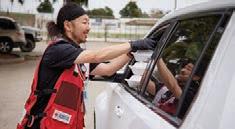
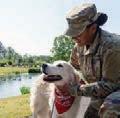
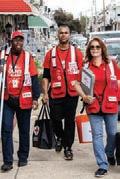
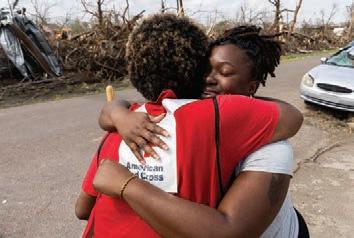



We invite you and others to join the American Red Cross mission by volunteering, giving blood, learning lifesaving skills or making a financial donation. Your support helps ensure families don’t face emergencies alone.
Volunteer. Give Blood. Donate. Take a Class. Visit redcross.org/RedCrossMonth to learn more.




Beech Brook
WHAT WE DO
At Beech Brook, we believe every child deserves the chance to grow up in a safe, healthy family with the support they need to reach their full potential.
Since 1852, our mission has been to help children and families thrive, as we’ve adapted to meet their changing needs. Today, we serve over 10,000 children and families annually through trauma-informed mental health services, parent education, comprehensive sex education and foster care.
Our move to Gar eld Heights marks a new chapter in our commitment to providing vital services. A er more than 100 years in Pepper Pike, this transition has renewed hope, which we work to instill in those we serve. It allows us to innovate, develop new programs and expand our capacity to help children and families thrive.
We put “Hope in Action” by o ering services that range from prevention and early intervention to treatment for severe trauma. Whether in schools, homes, day care centers, foster homes or community settings, our expert sta members are dedicated to supporting families through every step of their journey.
By investing in today’s children, we are building the strong, resilient parents of tomorrow. Our mission remains rooted in creating brighter futures—and, with our new location, we are better positioned to develop innovative programs and partnerships to support even more families.
At Beech Brook, we provide the care, resources and

Bash for the Brook is our festive annual fundraiser, which raises essential funds to support Beech Brook’s programs, while also helping children and families thrive.
hope that help children and families not just survive but truly thrive.
HOW YOU CAN HELP
JOIN: Support our mission by becoming an event sponsor or attending one of our impactful events. Your involvement helps us continue to provide essential services to children and families, which create lasting change and foster stronger communities for future generations.
HELP OTHERS: Make a di erence this holiday season by organizing a toy drive at your workplace, school or place of worship. You may also donate in-kind gi s, such as gi cards, personal care items or toys. Your generosity brings joy to children in need.
DONATE: Support Beech Brook by making a one-time or recurring donation, gi ing in honor or memory of a loved one, or doubling your impact through an employer’s matching program. Create a legacy of hope by including Beech Brook in your estate planning.
SHARE: Share your time and talents by joining a committee or task force at Beech Brook. Every contribution makes a di erence, helping to build a
stronger community for our children. Learn more about how you can become involved by visiting beechbrook.org.
STATISTICS:
· Ninety-six percent of parents said they felt optimistic about their child’s future at the end of our services.
· Sixty-six percent of parents were better able to handle the stresses of everyday life a er completing Parenting Classes.
· Seventy-six percent of parents were able to safely channel their aggression more e ciently a er participating in our Anger/Stress Management Classes.
· Our School-Based Mental Health Services are o ered at more than 50 schools across Cuyahoga, Lorain, Summit and Geauga Counties.
· During the 2023-2024 school year, we helped 1,708 children in our School-Based Mental Health program. We also helped 1,131 children in our REACH erapeutic Behavioral Support program.
· During the past year, we supported 62 children who were living with foster families, including 22 new placements.

ADDRESS
13201 Granger Road, #8 Cleveland, 44125
PHONE 216-831-2255
201 EMPLOYEES
2023 REVENUE
$12,192,588
FOUNDED IN 1852
WEBSITE beechbrook.org

LEADERSHIP

THOMAS P. ROYER president and CEO

KATHRYN L. (MUFFY) KAESBERG board chair
Kelly A. McChrystal board vice chair of administration (KPMG)
Wesley M. Lanzola board vice chair of nance (Key Private Bank)
LaVisa Bell chief administrative of cer
Kim Weltman executive vice president
Jennifer Albanese CFO
Peggy Coltz chief human resource of cer

The Centers
WHAT WE DO
At the CENTER of e Centers is innovation. From our Behavioral Health Urgent Care (BHUC) to our Specialized Treatment Advocacy and Recovery Services (STARS) for Schizophrenia program— along with our Walk-in Medication-Assisted Treatment (WinMAT) and Welcoming Neighbor Classroom—we are committed to developing innovative and impactful services that support our community.
We continue our ght for equity by healing, teaching, and inspiring individuals and families to reach their full potential. Our integrated care model e ectively coordinates a wide range of health and wellness services, including primary care, behavioral health urgent care, counseling, addiction services, infectious disease treatment, in-house pharmacy services and dental care. Additionally, we o er family support programs that encompass early childhood development, career training, job matching and more.
We deliver transformative solutions for the community’s most vulnerable members at 11 locations throughout Greater Cleveland. Last year, e Centers served more than 20,000 Northeast
Ohioans. Our vision is to create communities that are equitable, healthier and prosperous.
HOW YOU CAN HELP
PARTNER: e Centers’ Corporate Partnership Program provides customizable employee engagement opportunities, allowing companies to align their social initiatives with their employees’ interests. For more information, contact James Forristell, director, corporate development, at 216-325-9286.
VOLUNTEER: We o er a diverse range of volunteer opportunities and will work with you to develop a tailored experience that aligns with your priorities and interests. Our volunteer opportunities include our classrooms, workforce program, Basic Needs Resource Center, and our Done-In-A-Day Projects and Adopt-A-Family Program. For details, email megan. donnelly@thecentersohio.org.
DONATE: Contributions are essential to our ongoing e orts to develop innovative and impactful services, ensuring that the communities we serve in Northeast Ohio—o en overlooked and underserved— have access to quality care and an opportunity to thrive. To learn more, email us at donate@thecentersohio.org.
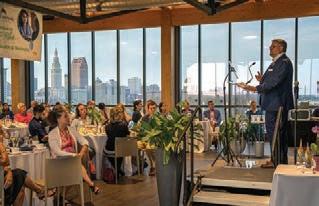
BASIC NEEDS: e Judy Peter’s Basic Needs Resource Center (BNRC) provides essential items like toiletries, food and baby supplies to clients across our programs. Funded entirely by grants and donations, the BNRC welcomes volunteers yearround to organize inventory and prepare orders for families in need. For more information, contact bnrc@ thecentersohio.org.
PROVIDE HOPE: Amidst a statewide foster placement crisis, the need for supportive and therapeutic residential services for youth and their families is profound. In Cuyahoga County alone, there has been a decline of 300 residential treatment beds over the past decade. O entimes, children living with the greatest trauma and behavioral challenges are rejected from available bed space. Not to mention, the closest provider that will accept them is out of state.
e Centers’ Cleveland Christian Home (CCH) is partnering with Cuyahoga County Division of Children & Family Services to construct a child wellness campus at the current CCH site (11401 Lorain Ave.). e campus transformation will promote a comprehensive model for assisting with rapid reuni cation and kinship diversion for children in county custody. It will also provide a safe location where youth—who are awaiting placement—can be assessed and receive treatment.
e total cost of the planned renovations is estimated at $14 million, and your help is needed to reach that goal. Donate today at https://bit. ly/3XmYk6l.

ADDRESS Admin: 4500 Euclid Ave. Cleveland, 44103
PHONE 216-432-7200
OVER 650 EMPLOYEES
2023 REVENUE
$84,980,033
FOUNDED IN THE MID-1800S
WEBSITE thecentersohio.org

LEADERSHIP

ERIC L. MORSE, MSSA, LISW-S president and CEO

STACEY RUBENFELD, MPA chief development of cer
Carole Beaty, MPOD chief program of cer, family and work programs
Kerry Bohac, PHR, SHRM-CP chief human resources of cer
Vincent Caringi, M.D. chief medical of cer
Daniel Frech, J.D. chief strategy of cer and general counsel
Christie Gambatese, MBA, CPA CFO
Leon Harris, Ph.D. chief diversity, equity and inclusion of cer
Jean Polster, RN, MS chief of healthcare operations administration
Christine Tatman-Stroh, MNAL chief administrative of cer
Martin Williams, MSSA, LISW-S chief of programs, behavioral health care
Elena Yanchar, DO chief of psychiatry
During The Centers’ Growing from our Roots signature event, Eric L. Morse, president and CEO, presents achievements from the past year to donors and stakeholders.





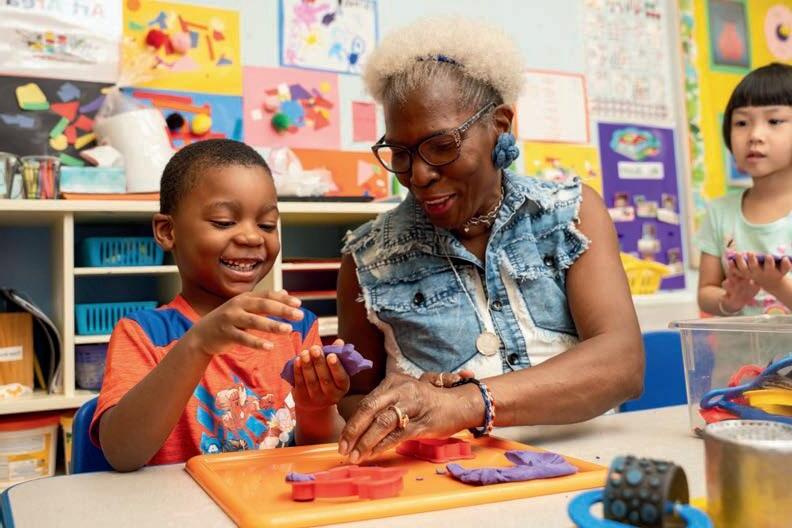
At the CENTER of The Centers is INNOVATION
BEHAVIORAL HEALTH URGENT CARE (BHUC)
A one-of-a-kind service available in Cuyahoga County providing accessible, same-day behavioral health services for both adults and children with multidisciplinary teams of providers who can address a broad array of urgent behavioral health concerns.
SPECIALIZED TREATMENT ADVOCACY AND RECOVERY SERVICES (STARS) FOR SCHIZOPHRENIA PROGRAM
The first dedicated program in Cleveland to address the acute, specific needs of individuals with schizophrenia. The program incorporates individual resiliency training, supported employment, case management, psychiatric care, and family psychoeducation.
WALK-IN MEDICATION-ASSISTED TREATMENT (WINMAT)
A groundbreaking program dedicated to combating opiate dependency and opioid use disorder (OUD), WinMAT is set to redefine the approach to addiction treatment by offering same-day evaluation and personalized treatment plans without the barriers of wait times or pre-treatment requirements.
WELCOMING NEIGHBOR CLASSROOM
Addressing the ongoing demand for services for children impacted by trauma and who have Individualized Education Programs (IEPs) and Individualized Family Service Plans (IFSPs), this innovative specialized classroom enables children to continue learning while also receiving services that are critical for their intellectual and social/emotional development and is a top referral source for children who have been dismissed from other early learning programs and/or need additional supports.
Stacey Rubenfeld, Chief Development Officer
stacey.rubenfeld@thecentersohio.org | 440.681.0196


Cleveland Metroparks
WHAT WE DO
Cleveland Metroparks is a nationally recognized and accredited park system, spanning more than 25,000 acres across Northeast Ohio, including 18 park reservations, more than 325 miles of trails, nine golf courses, eight lakefront parks, dining and retail venues, and the nationally acclaimed Cleveland Metroparks Zoo.
e 107-year-old Park District is a ve-time recipient of the National Gold Medal “Best in Nation” Award for Excellence in Park and Recreation Administration from the American Academy for Park and Recreation Administration (AAPRA)— the highest honor in the parks and recreation eld.
Annually, Cleveland Metroparks o ers thousands of free education and recreation programs across the 49 communities it connects to, creating connections to nature and promoting conservation and sustainability. Cleveland Metroparks is also the oldest park district in Ohio, yet it continues to grow in size and popularity, attracting more than 19 million visitors annually, which is a record.
Each year, Cleveland Metroparks Zoo ranks among Northeast Ohio’s most popular year-round attractions. It also hosts some of the area’s largest special events, including Asian Lantern Festival and Wild Winter Lights.
HOW YOU CAN HELP
During every season, you can embrace the outdoors, secure a future for wildlife, and celebrate and protect the gi

of nature by donating today and planning your charitable support for tomorrow.
Your gi can steward the “Emerald Necklace” to ensure healthy forests and streams for the next century. Or you can also directly impact what matters most to you—from projects like new hiking trails, to youth shing programs. And, of course, you can also support Cleveland Metroparks Zoo or a speci c park reservation, in order to steward more than 25,000 acres at Cleveland Metroparks for future generations. Additional giving information is available at clevelandmetroparks.com/ donate.
Cleveland Metroparks also o ers fun, educational and diverse volunteer opportunities for adults, youth (16 years old and older), community organizations, student projects and corporate groups. Please visit clevelandmetroparks.com/ volunteer.
EVENTS & FUNDRAISING
Charitable gi s make a signi cant impact on all aspects of Cleveland
Metroparks. rough a wide range of opportunities, people may directly support special places and programs that are closest to their heart, as well as district-wide initiatives like the Trails Fund, which was created to expand trail connections throughout our community.
Private donations are also a critical component to securing matching funds for many federal and state grants. Cleveland Metroparks o ers monthly giving options, in addition to charitable gi annuities. An enduring priority of Cleveland Metroparks is land preservation, and donors can support the land preservation fund by donating property, as well as monetary gi s.
Donors may also choose to support e Emerald Necklace Endowment Fund of e Cleveland Foundation, which helps preserve and protect Cleveland Metroparks for future generations.


LEADERSHIP

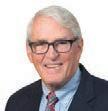
BOARD OF DIRECTORS: Bruce G. Rinker vice president
Yvette M. Ittu vice president
OTHER LEADERS: Wade Steen CFO
Natalie A. Ronayne chief development of cer
BRIAN M. ZIMMERMAN CEO DAN T. MOORE board president
The Patrick S. Parker Community Sailing Center at E. 55th Street Marina will be the rst of its kind in Ohio along Lake Erie—providing unprecedented public access and sailing opportunities to the region.

































North Chagrin Nature Center
Cleveland Metroparks Zoo
Sleepy Hollow Golf Course
Cleveland Museum of Natural History
WHAT WE DO
e Cleveland Museum of Natural History illuminates the world around us and inspires visitors to engage with the natural forces that shape their lives. Since its founding in 1920, the Museum has pioneered scienti c research to advance knowledge across diverse elds of study. It has also used its outstanding collections— which encompass millions of artifacts and specimens— to deepen the public’s understanding of the dynamic connections between humans and nature.
rough its Natural Areas Program, the Museum stewards more than 12,000 acres of protected ecosystems across northern Ohio. A community gathering place, educational center and research institution, the Museum is a vital resource that serves the region and the nation.
is December, the Museum will celebrate the Grand Opening of its $150 million, once-in-a-lifetime transformation. Setting aside the traditional timeline-anddiscipline-based approach, the reinvented Museum will present innovative, immersive
and inquiry-based content that places the visitor at the center of the experience.
With completely reimagined exhibits, more than 375,000 square feet of new and expanded spaces, and more than two acres of outdoor visitor areas, the transformed Museum will invite all to experience one-of-a-kind encounters with science and nature. For more information, visit cmnh.org.
HOW YOU CAN HELP
GIVE: Your generosity brings our mission to life. Your support of the Annual Fund powers exceptional programming and conservation initiatives throughout the year, while our Transforming the World of Discovery campaign is a once-in-a-lifetime investment in the entire reimagination of our campus and exhibits.
e Museum enables you to easily explore multiple ways to support our mission. Corporate support o ers great bene ts to the organization and employees, while planned giving allows the Museum to remain successful and sustainable long term.
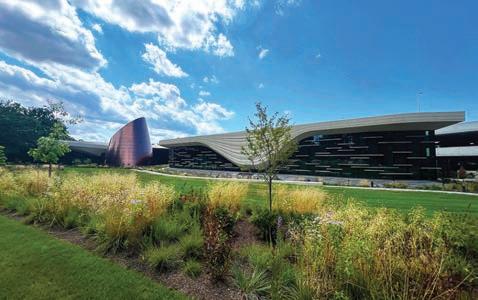
BECOME A MEMBER:
Members receive free admission to the Museum and enjoy all kinds of additional bene ts and discounts, including reciprocal admission to more than 1,500 institutions and access to members-only programming and events.
VOLUNTEER: Volunteers create a lasting impact on the Museum’s success. ere are many ways to become involved. Be a part of our volunteer community and help us inspire a passion for science and nature.
EVENTS & FUNDRAISING
In addition to supporting the full redesign of our campus and exhibits, an investment in our Transforming the World of Discovery campaign allows us to broaden the reach of our collections and research, while also providing inclusive, relevant and dynamic programming for all.
Furthermore, Annual Fund support provides the foundation for work that’s occurring every day at the Museum—from research conducted by Museum scientists, to education programs that reach students around the world.

ADDRESS 1 Wade Oval Drive Cleveland, 44106
PHONE 216-231-4600
138 EMPLOYEES
2023 REVENUE $21,365,554 FOUNDED IN 1920
WEBSITE cmnh.org

LEADERSHIP


Meenakshi Sharma senior vice president and chief strategy of cer
Melissa Santee chief philanthropy of cer
Gavin Svenson, Ph.D. chief science of cer and curator of invertebrate zoology
Patty Lohiser senior director of nance
BOARD OFFICERS:
Sally Z. Sears chair emeritus
James L. Hambrick vice chair
Alayne L. Reitman vice chair
Byron DaSilva vice chair
Douglas McCreery secretary
Kenneth W. Outcalt treasurer
SONIA WINNER president and CEO SUSAN DONLAN board chair
The Museum’s transformed architecture was inspired by the geological history of Northeast Ohio, paying homage to the glaciers that carved the Great Lakes.
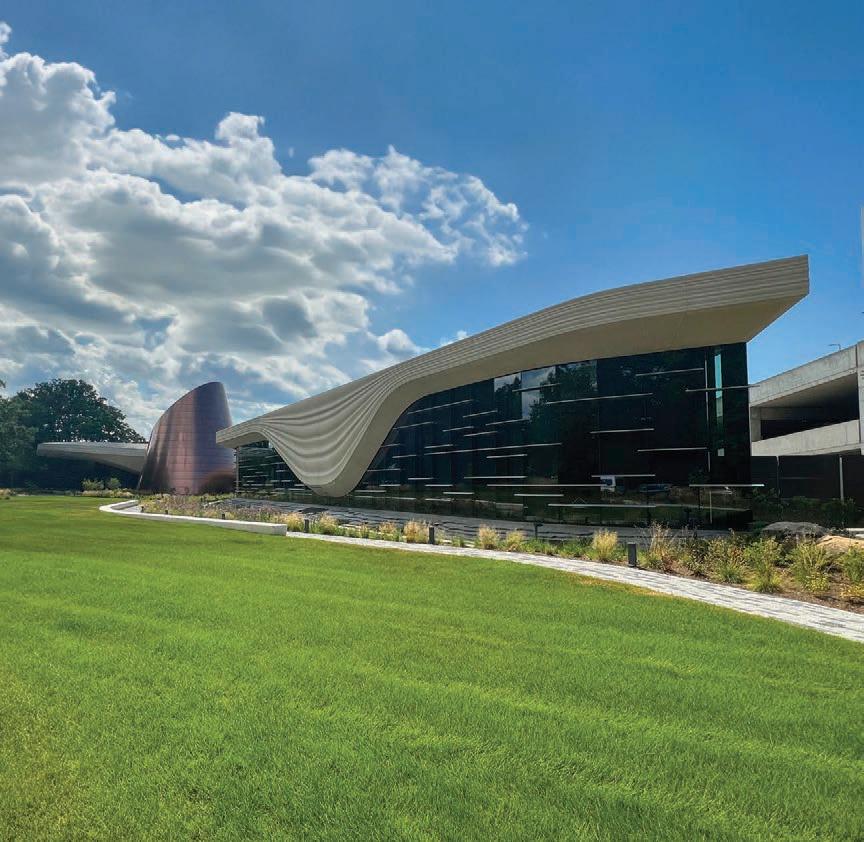
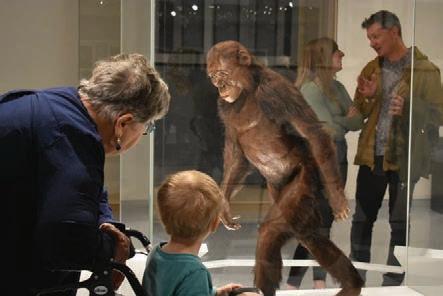
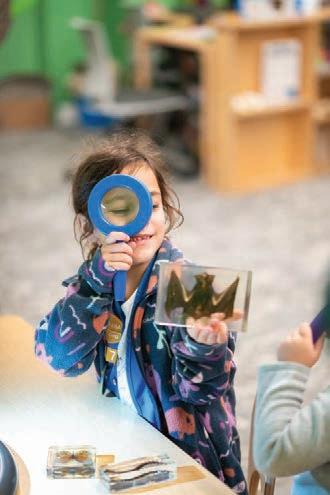

The Cleveland Orchestra
WHAT WE DO
e Cleveland Orchestra inspires and enriches lives by creating extraordinary musical experiences at the highest level of artistic excellence. It has earned widespread acclaim as one of the world’s nest orchestras, representing Northeast Ohio on the world stage through extraordinary artistry, domestic and international touring, and a long history of recording.
At home, robust education and community programs engage music lovers of all ages. In addition, yearround performances at the Orchestra’s home venues of Severance and Blossom Music Centers serve audiences from across our region.
Strong community support is at the heart of the Orchestra’s annual funding. For example, with one of the country’s youngest classical music audiences, the ensemble is committed to inspiring new music lovers across Northeast Ohio.
Furthermore, expansive digital programming— through the Orchestra’s streaming platform, known as Adella—o ers opportunities for a broader reach to music lovers at home and around the globe.
HOW YOU CAN HELP
VISIT: Expect the extraordinary when you attend a Cleveland Orchestra performance! We hope you will join us o en for concerts at Severance, which run from September to May, and at Blossom Music Center, which will be held next summer. Programs are

o ered for music lovers of all ages. Learn more at clevelandorchestra.com.
JOIN: Join us as a Corporate Partner and enjoy a variety of bene ts, including concert tickets to Blossom and Severance Music Centers, priority ticket access and additional discounts.
With member levels starting at $500, your organization can support the music, while also enjoying wonderful bene ts for your employees and customers. Visit clevelandorchestra.com/ corporatebene ts for more information.
DONATE: Donations to the Orchestra comprise the most signi cant portion of the ensemble’s operating revenue.
Community support keeps extraordinary music playing at Severance and Blossom, in our schools and neighborhoods, online, on the radio, and on international and domestic tours.
Every gi makes a di erence for the music. To make your donation, visit clevelandorchestra.com/give or call 216-456-8400.
EVENTS & FUNDRAISING
Join us for e Cleveland Orchestra’s Winter Spree, an evening to charm all of your senses!
On Dec. 17, you’ll be able to relish in a joyful cocktail reception with live music. In addition, you can wrap up your holiday shopping in a boutique marketplace, which is lled with local artisanal goods.
A erwards, enjoy a private holiday concert by your Cleveland Orchestra. From there, you’ll be treated to an exquisite three-course dinner in Severance’s iconic Bogomolny-Kozerefski Grand Foyer.
Proceeds from this fundraising event will bene t e Cleveland Orchestra, a 501(c)(3) nonpro t. Ticket prices start at $200, and sponsorship opportunities are available.
Visit clevelandorchestra. com/winterspree for more information.

ADDRESS 11001 Euclid Ave. Cleveland, 44106
PHONE 216-456-8400
140 ADMINISTRATIVE STAFF MEMBERS; MORE THAN 100 FULL-TIME MUSICIANS
2023 REVENUE $61,350,000
FOUNDED IN 1918
WEBSITE clevelandorchestra.com

LEADERSHIP

ANDRÉ GREMILLET president and CEO

RICHARD SMUCKER chair, board of trustees
Ross Binnie chief brand and marketing of cer
Lisa Durkin vice president of human resources
Ilya Gidalevich vice president of artistic planning
Jane Hargraft chief development of cer
Joan Katz Napoli vice president of education and community engagement
James Menger CFO
Leah Monder vice president of orchestra and production
Jejuana Brown director of diversity and inclusion
Join us at Severance for the Winter Spree this December, which features an elegant dinner, a performance by the Orchestra and local artists.

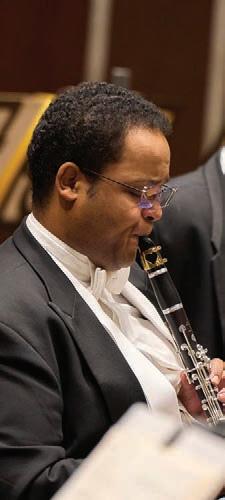
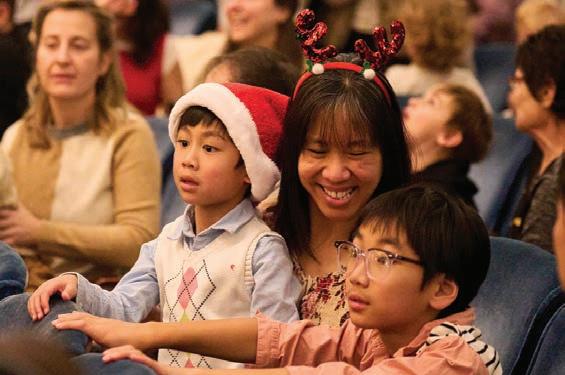
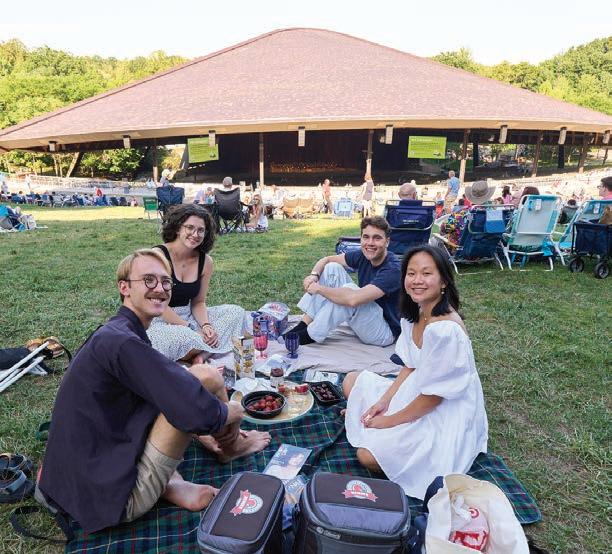



Cleveland Zoological Society
WHAT WE DO
e Cleveland Zoological Society (Zoo Society) is Cleveland Metroparks Zoo’s nonpro t advancement partner that raises philanthropic support for the zoo. Governed by a Board of Directors, the Zoo Society is an independent 501(c)(3). Since 1998, Zoo Society donors have contributed more than $100 million toward zoo operations, conservation projects and capital improvements.
Cleveland Metroparks is nationally recognized as one of the United States’ best zoos. And, closer to home, the zoo is a cherished community asset, as it’s the region’s most visited yearround destination. e Zoo Society helps make this all possible through dedicated fundraising.
e Zoo Society’s philanthropic priorities include campus renewal, while also supporting the zoo’s national leadership role in science education programming, research, and positive animal health and welfare standards.
In addition to funding that catalyzes animal care and
educational programming in Cleveland, the Zoo Society contributes more than $500,000 annually to support the zoo’s international conservation program, working to secure a future for wildlife around the world.
e Zoo Society also maintains the largest membership program in Northeast Ohio (more than 40,000 households) and regularly achieves a 95% customer satisfaction rating. Several membership levels exist, from individual and family, to VIP annual donors.
HOW YOU CAN HELP
JOIN: e Pride is an annual giving program for individuals, which provides unrestricted operating support to the Zoo Society. As a result, the Zoo Society can grow and thrive in its e orts to raise funding for Cleveland Metroparks Zoo.
Corporate Champions is an annual program designed to o er exceptional and exclusive access to zoo experiences. Corporate Champions enjoy bene ts that engage employees, entertain clients and connect with community partners.

SUPPORT:
· Monthly Giving: Support a program of your choice all year long.
· Support a Species: Featuring an evolving lineup of beloved animals, which can be found at Cleveland Metroparks Zoo, “Support a Species” connects donors with the zoo’s nationally recognized animal care program.
· Honor & Memorial: Recognize all of the important occasions that ll our lives.
· ZooFutures: By remembering the Zoo Society during your estate planning, you’ll leave a lasting legacy.
· Primate Forest: e largest capital project in the zoo’s history, Primate Forest will not just create a new home for gorillas, orangutans and the many species currently in the RainForest—it will reimagine the zoo experience in ways yet to be seen in North America.
DONATE: Visit clevelandzoosociety.org/ donate for information about the ways you can donate.
EVENTS & FUNDRAISING
Private, small-group Sunset Safari Dinners provide unique client and employee experiences, while also supporting the zoo.
Twilight at the Zoo, presented by Key Bank, celebrated its 30th anniversary this year. While doing so, it drew another sold-out crowd for an evening of rock music and revelry in support of the Zoo Society.

21 EMPLOYEES
3900 Wildlife Way Cleveland, 44109 WEBSITE clevelandzoosociety.org

LEADERSHIP
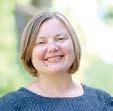

SARAH CRUPI CEO, Zoo Society CHRISTINE MYEROFF Board of Directors chair, Zoo Society
ZOO SOCIETY BOARD OF DIRECTORS OFFICERS:
Thomas Fistek vice chair
Ki Mixon vice chair
Tod Wagner treasurer
Dr. Bobbie Brown secretary
ZOO SOCIETY MANAGEMENT TEAM:
Rachael Fuller director of marketing and events
Eustacia Netzel-Hatcher director of nance
Andrea Ponikvar director of advancement
Nicole Stracensky director of capital campaigns
Amur tiger cubs Sergei and Mila have been delighting zoo visitors since their birth in November 2023.

The ZooFund
Each year, Zoo Society donors provide more than $4 million in support for Zoo operations, animal care and more. Through your generosity, no matter what the amount, know that you will be making a positive impact on securing a future for wildlife and ensuring the continuing prosperity of Cleveland Metroparks Zoo.
ANNUALLY, THE ZOO SOCIETY PROVIDES FUNDING SUPPORT FOR THE FOLLOWING ZOO PROGRAMS:

Conservancy for Cuyahoga Valley National Park
WHAT WE DO
e Conservancy for Cuyahoga Valley National Park (Conservancy) is the o cial friends group and philanthropic partner for Cuyahoga Valley National Park (CVNP). With a mission to enrich people’s lives and enhance our region—by inspiring use, preservation and support of CVNP—the Conservancy o ers cultural and environmental education programming, co-manages the park’s volunteer program, provides venues for weddings, meetings and special events, and operates park retail spaces.
e organization funds many improvements in the park, including trail maintenance, land acquisition (such as the former Brandywine Golf Course) and restoration of historic properties like the Boston Mill Visitor Center. In partnership with the park, it also serves nearly 10,000 students annually in environmental education programs, regardless of family resources. Furthermore, the Conservancy connects thousands of people to the park through various cultural arts o erings, including Rhythm on the River, Concerts at Happy Days Lodge, Cuyahoga Valley Lyceum Series, Low Power Happy Hour, art exhibitions and yoga events.
In addition, the Conservancy promotes CVNP as a one-of-akind destination that connects the cities of Akron and Cleveland. With its 33,000-plus acres of deep forests, rolling hills, miles of the Cuyahoga River and open farmlands, CVNP is one of the United States’ most visited national parks. Each year, it attracts millions of visitors from

around the world and around the corner. rough the end of 2025, the Conservancy is commemorating CVNP’s 50th anniversary with planned activities that everyone can enjoy. Come and celebrate the park’s historical relevance to our nation and the Great Lakes, while also experiencing its array of recreational and educational opportunities.
HOW YOU CAN HELP
EXPLORE: Between now and the end of 2025, celebrate CVNP’s 50th anniversary.
Visitors have opportunities to commemorate the occasion by learning about fascinating history (via national speakers), connecting with the arts through concerts and more. For further information, visit cvnp50.com.
JOIN: Join the Conservancy’s nearly 4,000 members as they make a di erence in CVNP.
Members are the driving force behind the projects that maintain CVNP’s timeless landscapes and precious resources. Learn more at forcvnp.org/membership.
VOLUNTEER: ere is a place for everyone to volunteer. e Conservancy and National Park Service Volunteers-InParks program provides a
variety of options for people of all ages. Additionally, it o ers unique opportunities for company, school, scout and youth groups. Visit forcvnp.org/volunteer for further information.
DONATE: Join the Conservancy in its e orts to prepare CVNP for its next 50 years. When you donate to the Conservancy, you are ensuring Ohio’s national park remains a remarkable natural resource, which will be available for generations to come.
SHARE: Join our email list from our website to learn more. Help spread the word on upcoming programs and events too, while also discovering ways to support CVNP.
EVENTS & FUNDRAISING
To support its fundraising e orts, the Conservancy hosts three key events throughout the year. Elevation (June 2025) and Topography (June 2025) support the Trails Now Fund, while Exploration (September 2025) supports youth environmental education programs.

ADDRESS 1403 W. Hines Hill Road Peninsula, 44264
PHONE 330-657-2909
100 EMPLOYEES
2023 REVENUE $6,316,092
FOUNDED IN 2002
WEBSITE forcvnp.org

LEADERSHIP


Janice Matteucci senior vice president of strategic initiatives
Dan Blakemore vice president of philanthropy
Donté Gibbs vice president of community partnerships
January Miller vice president of education
Gregory Morton vice president of administration
Daniel Connor board vice-chair
DEB YANDALA president and CEO
KARYN SULLIVAN board chair
Elevation and Topography events support the Trails Now Fund, which provides crucial funding for trail maintenance, visitor amenities and new trailheads within CVNP. Photo credit: Ko Amponsah.






Crossroads Health
WHAT WE DO
MISSION: To provide hope, healing and health care to everyone.
VISION: To cultivate compassionate communities where people lead healthier, longer lives.
Crossroads Health is a 501(c) (3) nonpro t behavioral and primary health care provider serving the Northeast Ohio area—with locations in Mentor, Painesville, Cleveland, and the Lake County Adult and Juvenile Detention Facilities, as well as school- and home-based services and Mobile Crisis Services.
It provides a continuum of trauma-informed, evidencebased, integrated health services for all people, at all ages and stages of life—no matter an individual’s ability to pay. Specialized services and programs include early childhood services, day treatment, school and community-based services, therapeutic foster care, intensive services and a substance use disorder program.
In addition, New Directions, a service program of Crossroads Health, is the only residential,
recovery housing and outpatient treatment program of its kind in Northeast Ohio, o ering substance use and mental health treatment for more than 50,000 adolescents and their families since 1981.
Furthermore, Crossroads Health provides a psychiatry, dual diagnosis program; supportive employment services; forensic services; prevention; outpatient counseling; medication management; case management; care coordination; and hotline and crisis intervention. Its philosophy emphasizes an integrated approach to physical and behavioral health care, while getting to the root cause of behavioral health problems to ensure a more positive and productive life.
HOW YOU CAN HELP
HELP OTHERS: We welcome contributions in cash, in-kind donations and planned gi s, including stocks, bonds and real estate. Your gi s help Crossroads Health provide individuals and families—at all ages and stages of life—the treatment, education, crisis intervention, and support services and programs they need, regardless of their ability to pay.
Crossroads Health is a 501(c) (3) nonpro t organization.

Contributions are taxdeductible to the fullest extent allowed by law. Your taxdeductible gi to Crossroads Health positively impacts our community in measurable ways—and, most importantly, helps save lives.
For more information on how to help, please contact James Wyman, chief development o cer, at 216-360-4445.
DONATE: Visit crossroadshealth.org for more information.
SHARE:
• Facebook: facebook.com/ CrossroadsHealthOhio; facebook.com/ NewDirectionsCleveland
• Instagram: instagram. com/crossroadshealthohio; instagram.com/ newdirectionscle
• LinkedIn: linkedin. com/company/ crossroadshealthohio; linkedin.com/company/newdirections-%E2%80%93cleveland
• X (formerly Twitter): twitter.com/Crossroads_ Ohio; twitter.com/ newdirectionsoh
EVENTS & FUNDRAISING
Crossroads Health’s Annual Fund is an important area for philanthropic giving. For every dollar spent on scalingup treatment for mental health disorders, a $4 return is realized in improved health and productivity. Charitable contributions are made at crossroadshealth.org.

ADDRESS
8445 Munson Road Mentor, 44060
PHONE 440-255-1700
300 EMPLOYEES
2023 REVENUE $33,133,226
FOUNDED IN 1971
WEBSITE

LEADERSHIP

MIKE MATONEY, MBA, LICDC-CS president and CEO
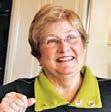
DIANNE VOGT chairperson, board of directors
BOARD OF DIRECTORS: Melissa Cole vice chairperson
Harold Abraham co-treasurer
Judith Rich treasurer
Leon Kambani secretary
Crossroads Health’s biennial fundraiser, Soaring Hearts, occurred on May 18, 2024, at Headlands Beach State Park.





Crossroads Health and New Directions have merged! Our vision is to cultivate compassionate communities where people lead healthier, longer lives.


Crossroads Health is an integrated health organization that includes behavioral & primary healthcare to meet today’s client and family needs for better outcomes for all.
New Directions is now a service program of Crossroads Health and is the only residential, recovery housing, and outpatient treatment program for drug and alcohol addiction of its kind in Northeast Ohio. We have provided treatment for 50,000+ adolescents and their families since 1981. New Directions was named one of America's Best Addiction Treatment Centers for the last two years according to Newsweek and Statista.
Both organizations have come together to provide whole-person integrated care with better outcomes for all. Whether you’re seeking primary care and pharmacy services, traumainformed recovery services, or mental health treatment, they are ready to serve everyone, at all ages and stages of life.




Cuyahoga County Public Library Foundation
WHAT WE DO
e Cuyahoga County Public Library (CCPL) Foundation is a 501(c)(3) organization— governed by a Board of Directors and supported by CCPL employees—that raises nancial resources to help the Library ful ll its mission. rough the support of the CCPL Foundation, the Library can elevate its role as a cornerstone of community life.
CCPL is consistently recognized as one of the nation’s best and busiest library systems, with 27 branches that serve 47 communities throughout the county. Its mission is to empower individuals and communities by o ering opportunities for all to read, learn, create and connect. In addition, it develops programs and services that address our communities’ greatest needs.
The CCPL Foundation supports these efforts by providing grant funding for pilot programs, expanded curriculum and the launch of new community services. Through support from individual donors, corporate partners and charitable organizations, the CCPL Foundation has provided more than $1 million in grants, ensuring CCPL can continue to provide impactful, innovative service.
Philanthropic support advances CCPL’s mission in four key areas of need: early childhood literacy, student success, digital equity and inclusion, and workforce development. e programs and services that CCPL provides are free to the public and available to all county residents.

From early childhood literacy programs that prepare children to make successful transitions to kindergarten, to free classes that teach adult learners valuable skills for today’s job market, CCPL o ers something for everyone.
HOW YOU CAN HELP
VISIT: Stop by any of our 27 branches. We’re open seven days a week.
EXPLORE: Visit our branches, create in an Innovation Center or attend author events. You may also enroll in an advanced computer class, acquire resume writing help or borrow books, movies, music and more.
SUPPORT: Join the Ex Libris Society ($1,000-plus) to enjoy special perks at Library events. Become a Library Loyalist and provide ongoing support with a recurring donation. Include the CCPL Foundation in your legacy planning and join the 1922 Society.
HELP OTHERS: Volunteer to help with homework, early childhood reading, STEAM
programs and mobile food pantry distributions. Become involved at cuyahogalibrary. org/volunteer.
DONATE: Visit ccplfoundation.org to support us with a donation.
SHARE: Connect with us on social media @cuyahogalib.
EVENTS & FUNDRAISING
e CCPL Foundation holds fundraising events throughout the year, including its annual Reading the Green golf outing and Books & Bites culinarythemed event.
rough its signature fundraising event, the William N. Skirball Writers Center Stage Series, the CCPL Foundation also brings the literary world’s best storytellers to Greater Cleveland six times a year.
ADDRESS 2111 Snow Road Parma, 44134
0 EMPLOYEES 2023 REVENUE $966,170
WEBSITE ccplfoundation.org

LEADERSHIP


Caroline Borrow Grantmaking Committee chair
Allyn A. Davies secretary
Bridget Martin Governance Committee chair
Lisa Cynamon Mayers Special Events Committee chair
William I. Russo treasurer and Finance Committee chair
Caroline Selman vice chair
Lorie Hollington Smith Development Committee chair
TRACY R. STROBEL president M. NEAL RAINS chair
Henry Winkler speaks to the audience at Writers Center Stage (WCS). Now in its 21st season, the William N. Skirball Writers Center Stage Series has welcomed 131 of the literary world’s best authors to the stage. Learn more at writerscenterstage.org.
Your support is essential
The Cuyahoga County Public Library Foundation – with support from individual donors, corporate partners and charitable organizations – funds critical library initiatives that meet the needs of our community.
Make a Real Difference
Your donation to the CCPL Foundation helps provide opportunities for all to read, learn, create and connect. These programs and services are available for free to all county residents. They would not be possible without your philanthropic support.



Early Childhood Success
• 2,500 students enrolled in after school grade level reading support
• 3,200 kids and families enrolled in early childhood literacy and kindergarten readiness programs

Digital Equity & Inclusion
• 850,000 Wi-Fi sessions


Workforce Development
1,500 adult students enrolled in ESOL, GED® test prep and U.S. Citizenship classes
7,100 Innovation Center user sessions
• 675,000 public computer sessions
• 2,300 computer class participants


Student Success
• Nearly 10,000 afterschool homework help sessions
• 37,000 free meals for hungry students
• 18,800 summer reading program participants
Scan to give and support our work

Girl Scouts of North East Ohio
WHAT WE DO
Girl Scouts of North East Ohio (GSNEO) builds girls of courage, con dence and character who make the world a better place.
GSNEO serves 19,000 girls in 18 counties, with the help of 9,000 adult members and volunteers. Girl Scouts is the largest leadership development program for girls in grades K-12, while GSNEO is the region’s largest, most active female voluntary service organization and among the nation’s largest Girl Scout councils.
rough the Girl Scout Leadership Experience (GSLE), Girl Scouts discover, connect and take action with the help of adults and troop leaders. e GSLE focuses on four program pillars— STEM, Outdoors, Life Skills and Entrepreneurship—to encourage girls to challenge themselves with new experiences and develop the skills and con dence to say, “I know I can do this!”
GSNEO has exciting plans for 2025! e transformational STEM Center of Excellence will open at Camp Ledgewood, a 350-acre camp that is adjacent to the Cuyahoga Valley National Park. is unique,
8,000-square-foot facility is set to become a cornerstone for workforce development, aiming to build a robust pipeline of future STEM professionals. e STEM Center site in Peninsula is a half-hour drive from over 100,000 kindergarten through h grade public school children and over half of GSNEO’s girl members.
e STEM Center will play a crucial role in addressing the underrepresentation of women in STEM elds—by providing girls and school students in Northeast Ohio with the resources and inspiration they need to pursue careers in science, technology, engineering and mathematics. By fostering a love for STEM from an early age, GSNEO aims to empower the next generation of female leaders and innovators. is initiative will help bridge the gender gap in STEM jobs and create a more diverse and inclusive workforce. To learn more, visit gsneo.org/ stemcenter.
GSNEO will also open a Girl Scout DreamLab in 2025 in Lorain County. Packed with STEM and other educational equipment, the 4,000-squarefoot Girl Scout DreamLab will be the rst of its kind in Ohio. It will o er structured, adaptable, curriculum-based learning opportunities to

area school children and Girl Scout members, including important so skills for tomorrow’s workforce, such as teamwork, leadership and communication, as well as hands-on activities.
e Girl Scout DreamLab will also provide programming to area schools and student groups on weekdays during the school year. Girl Scout members will access comprehensive programming during the remaining time.
HOW YOU CAN HELP
JOIN: Is there a girl in your life that would bene t from Girl Scouts? Find a troop and join at gsneo.org/join.
VOLUNTEER: Your talents and experience have the power to change girls’ lives. Learn more about volunteer opportunities at gsneo.org/volunteer.
DONATE: Girls are the leaders and innovators that our future world requires. By being Girl Scouts, they’ll have the tools they need to succeed. With your support, we can continue to create and optimize an environment where girls explore freely, expand their perspectives and discover the unimaginable. To give today, visit gsneo.org/ donate.
EVENTS & FUNDRAISING
e annual GSNEO Women of Distinction Awards event was established to celebrate and recognize women, organizations and Girl Scouts in Northeast Ohio who go above and beyond!

ADDRESS 1 Girl Scout Way Macedonia, 44056
PHONE 330-983-0399
70 EMPLOYEES
2023 REVENUE
$17.4 million
FOUNDED IN 1912
WEBSITE gsneo.org

LEADERSHIP
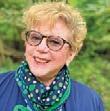
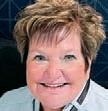
BOARD OF DIRECTORS:
Sandra Reid vice chair
Kate Asbeck treasurer
Cindy Skelton-Becker secretary
JANE CHRISTYSON CEO KATHY MOOCK chair, Board of Directors

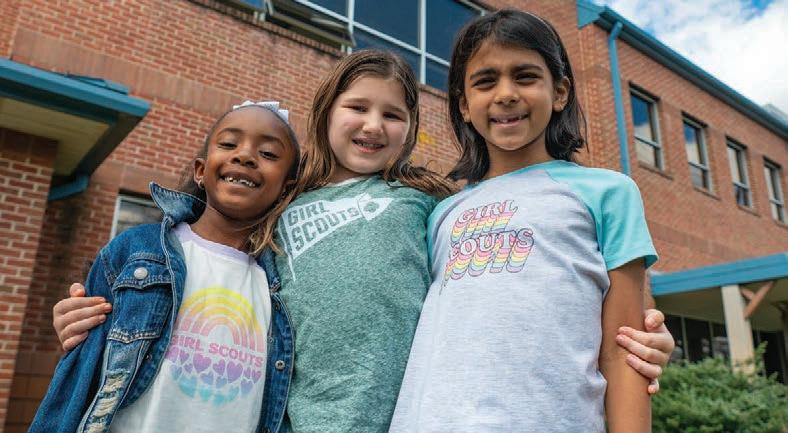
Goodwill Industries of Greater Cleveland and East Central Ohio, Inc.
WHAT WE DO
Goodwill Industries of Greater Cleveland and East Central Ohio is a nonpro t social enterprise that serves 17,000 individuals annually.
e lifeblood of our organization is material donations. We have 26 retail stores that accept donations, as well as eight attended donation centers. In addition, we have Mobile Donation Centers that can be reserved for free at your home or business for up to a week for larger quantities of donations.
anks to generous donors in our 10-county footprint throughout the greater Cleveland area, east central Ohio and West Virginia, we are able to stock our 26 retail stores with gently used items for shoppers to purchase.
e funds generated in our stores support our 30 vital mission programs—by o ering job training, adult literacy programs and rape crisis services. Furthermore, we’re able to provide digital skills training, a hot meal table, a free book program for children and so much more to individuals in our communities.
At Goodwill, sustainability is a big part of what we do. Known as the original recycler, one of our main goals is to keep items out of land lls. If items don’t sell in our stores, they get a second chance at one of our outlet stores. As a result, in 2023, we diverted more than 25 million pounds of clothing and items from local land lls.
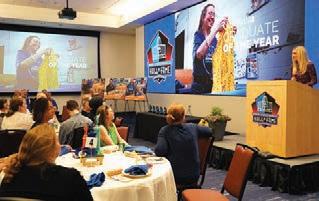
At Goodwill, we’re here to help people in our communities with a hand up—not a handout. Goodwill gives people the skills they need to transform their lives.
HOW YOU CAN HELP
VISIT: Visit one of our 26 retail locations to shop or donate. Our stores are stocked with gently used clothing, shoes, accessories, housewares, electronics, furniture, books and more— all at a ordable prices.
EXPLORE: Explore our site, goodwillgoodskills. org, to learn more about all of the services we o er to individuals in our 10-county footprint. Our site also includes information about all of our locations, as well as how you can reserve a Mobile Donation Center.
JOIN: Learn how you can partner with Goodwill to make an impact in your community. You can become a sponsor or host a donation drive at your company and help transform lives for GOOD.
HELP OTHERS: You can help others in multiple ways at Goodwill. By donating items at our stores and donation centers—or shopping at them—you can make a huge impact.
A er all, whether you’re donating or shopping, you’ll help fund our mission programs. Monetary donations are always appreciated and used to support our many vital services.
DONATE: You can donate items at our stores and donation centers, reserve a Mobile Donation Center or host a donation drive. You may also donate money through our website or by calling our corporate o ce.
SHARE: We are active on social media. Like, comment, share and repost on Facebook, Instagram, TikTok, LinkedIn, YouTube and Pinterest. You can also share our website with friends and family members to get our mission out there.

ADDRESS
408 Ninth St. SW Canton, 44707
PHONE
330-454-9461
750 EMPLOYEES
2023 REVENUE
$48.9 million
FOUNDED IN 1918
WEBSITE

LEADERSHIP

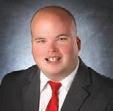
ANNE RICHARDS CEO
Attendees enjoy the annual Report to the Community Breakfast, held at Canton’s Pro Football Hall of Fame.
MARK TREW chief operating of cer
























Great Lakes Science Center
WHAT WE DO
Great Lakes Science Center delivers high-quality educational exhibits and programming in service of our mission to make science, technology, engineering and math (STEM) come alive. As our region’s leading science and technology center, we provide a program-rich learning environment, with interactive permanent exhibits, a rotation of seasonal temporary exhibitions and programs, and the NASA Glenn Visitor Center. In addition, we o er seasonal camps, workshops, community outreach, and events that engage and inspire learners of all ages.
Since opening in 1996, more than 10 million guests have come through our doors. Recognized for yearround, a ordable activities that support family and community engagement, the Science Center envisions a community where all people value STEM to inform decision-making and enrich lives. e Science Center has provided free museum access to students at Title I-eligible schools and educated hundreds of thousands of children through a variety of programs that re ect our mission.
e Science Center is one of the nation’s top 10 museums, as celebrated by the 2024 USA Today 10 Best Readers’ Choice travel award for Best Science Museum. Additionally, the Science Center hosted Total Eclipse Fest in 2024, one of the country’s largest free eclipse events, and welcomes an average of 300,000 visitors a year.
A 501(c)(3) nonpro t institution, the Science Center earned a 2023 Platinum Seal of Transparency from Candid, a leading provider of insight and data concerning the nonpro t world. It is also funded with public support from Cuyahoga Arts & Culture.
HOW YOU CAN HELP
VISIT: Conveniently located downtown at North Coast Harbor, the Science Center is open from 10 a.m. to 5 p.m. seven days a week during the summer. roughout the fall, winter and spring, it’s open on Tuesday through Sunday. Plan your visit today at greatscience.com.
EXPLORE: e Science Center is home to the NASA Glenn Visitor Center, hundreds of handson exhibits, temporary exhibitions, the Cleveland Clinic DOME eater and the

historic Steamship William G. Mather.
JOIN: Become a Member at the Science Center and save money by receiving free admission for a full year, making family memories during your visits and supporting the Science Center’s mission all at the same time.
HELP OTHERS: Our supporters make an incredible impact every year. Just last year almost 17,000 students from Title I-eligible schools attended the museum for free. Scholarships helped some of the 2,000 STEM campers attend Camp Curiosity, and free admission days—made possible by some of our most generous supporters—helped close to 13,000 kids and families experience a day at the Science Center.
DONATE: Commit to equity and access, while also demonstrating that STEM is for all.
Legacy gi s, naming rights and investments in our endowment will ensure access to STEM educational experiences in our community, cultivating new generations of scientists, engineers, entrepreneurs and innovators for years to come.
SHARE: Follow the Science Center on Facebook, Instagram, X (Twitter), YouTube and LinkedIn. You may also sign up at greatscience.com to be on the e-newsletter list. By being on this list, you’ll learn how you can be involved, while sharing the Science Center’s mission and messaging, too!

40

LEADERSHIP
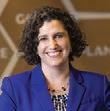

Liz Conway vice president of development
Amanda Taunt vice president of operations
Katinka Domotorffy vice chair and investment chair
Adam Munson secretary
Susan Flaherty treasurer and nance chair
Mitchell Blair governance chair
Jennifer Mathewson development chair
Dave Mustin marketing chair
Howard Lewis comprehensive campaign co-chair
David Reynolds comprehensive campaign co-chair
KIRSTEN M. ELLENBOGEN president and CEO
STEVEN A. KARKLIN board chair
The Science Center collaborated with NASA’s Glenn Research Center and dozens of other community partners to produce the largest event in the museum’s history, Total Eclipse Fest. During the historic three-day event, more than 35,000 guests came to the festival grounds outside the Science Center.









































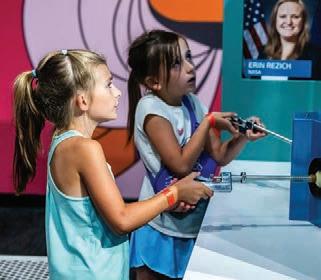














Greater Cleveland Habitat for Humanity
WHAT WE DO
Greater Cleveland Habitat’s primary program is our a ordable homeownership program. Income-eligible families—who earn between 30% and 80% of the area median income—receive zero-interest mortgages, training and partnership.
As a complement to this work, our Spruce-Up Day program o ers minor exterior repairs for existing residents on the streets where we work. Alongside our homeownership program, the Spruce-Up Days foster lasting revitalization in the neighborhoods where our work is focused. Groups of at least 50 volunteers work on multiple homes during a single day, while o ering services like porch and fence repair, landscaping and debris removal.
Our newest program, Critical Home Repair, was created to capitalize on our a ordable homeownership program— as a catalyst for broader community improvement. e program o ers extensive interior or exterior work to alleviate health, safety and structural integrity issues or code violations for homeowners in need.
Repairs include installing new roofs, windows, doors, siding and gutters; repairing and replacing steps, wheelchair ramps and stair li s; moving washers and/or dryers to the rst oor; and repairing code violations to prevent nes. Repairs are prioritized with respect to structural preservation and occupant safety.

HOW YOU CAN HELP
DONATE: Support a ordable homeownership with a nancial donation by visiting clevelandhabitat.org/gi 2. You can also donate your old car, boat, motorcycle, truck or RV for free through our Cars for Homes program by visiting clevelandhabitat.org/how-tohelp/car-donations.
EXPLORE: Want to learn more about Greater Cleveland Habitat and the work we do? Visit clevelandhabitat.org for further information.
HELP OTHERS: Donate new or gently used items to our ReStores. In particular, Greater Cleveland Habitat for Humanity ReStores depend on donations of furniture and household items from people like you. Visit clevelandrestores.org/donate to schedule your donation.
VISIT: Want to see what your donation will support? We are happy to give you a tour of our work. To schedule a tour, contact Peggy Sobul at psobul@clevelandhabitat. org or 216-278-7099.
JOIN: To stay updated on what is happening at Greater Cleveland Habitat
for Humanity, subscribe to our e-newsletter at clevelandhabitat.org/emailsignup/page.html.
SHARE: Help spread the word about the need for a ordable homeownership in our area by following us on social media and sharing our posts with your colleagues, friends and family—on Facebook: (/CLEHabitat), X (@CLEHabitat), Instagram (@CLEHabitat) and LinkedIn (/CLEHabitat).
EVENTS & FUNDRAISING
Greater Cleveland Habitat for Humanity’s annual Walk. Run. Mosey fundraiser is a non-competitive, 1-mile or 5k that is family, dog and donut friendly. Participants can either walk, run or mosey for a ordable homeownership.
To learn about sponsorship opportunities, as well as how you can become involved with the 2025 Walk. Run. Mosey, please email events@ clevelandhabitat.org. You can also visit clehabitatwalk. org to see highlights from this year’s event.


LEADERSHIP

JOHN LITTEN president and CEO

PEGGY SOBUL chief development of cer
Joseph Gabbard chief strategy of cer
Kevin Kelly chief facilities and safety of cer
Ann C. Rieth chief human resources of cer
Andrew Zager chief operating of cer
Participants enjoy Greater Cleveland Habitat for Humanity’s Walk. Run. Mosey fundraiser.





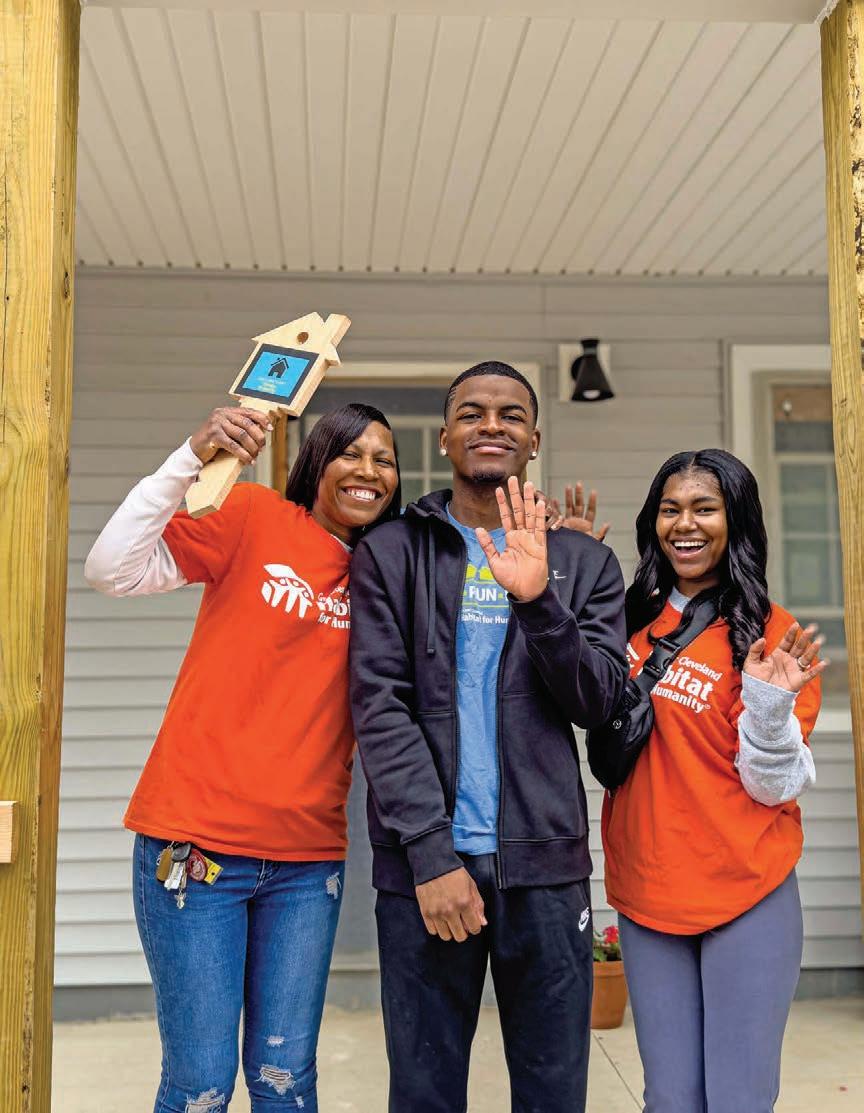
HELP Foundation, Inc.
WHAT WE DO
HELP Foundation, Inc. (HELP) o ers programs and services for individuals with intellectual and developmental disabilities through residential, day support, vocational training, transportation and summer education programs.
Beginning with a few dedicated families and a 12-bed children’s home, HELP has grown throughout Cuyahoga, Lake, Lorain and Summit counties to serve more than 800 individuals daily.
For 60 years, HELP has created innovative and unique programs that are relevant and impactful, addressing the immediate needs of individuals with intellectual and developmental disabilities, while continually planning for long-term growth.
As the community continues to grow and change, HELP remains dedicated to innovation, ensuring that it will continue to serve as a vital resource for years to come. Because of our long history and positive reputation in our eld, HELP has consistently developed solutions that re ect the real
pulse of the communities where we provide services.
HOW YOU CAN HELP
SUPPORT HELP
HARVEST: A vocational training program for individuals with intellectual and developmental disabilities, HELP Harvest helps trainees learn skills that allow them to obtain jobs in the community. is seed-totable program includes the HELP Harvest Greenhouse (where food is grown and harvested), the HELP Harvest Kitchen (where food is prepared), and Susanna’s Café by HELP Harvest (where food is sold; it is located at the Cleveland Foundation: 6601 Euclid Avenue).
EXPLORE: HELP’s new website features an updated organizational video that highlights our rich history in providing services to individuals with intellectual and developmental disabilities, including residential, vocational, day services and transportation.
JOIN: HELP raise funds and awareness for our newest milestone–HELP Lakewood’s Capital Campaign. is renovation and expansion project (located at our Lakewood facility on Sloane
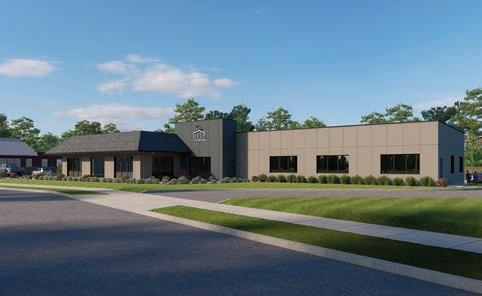
Avenue) includes day support and the HELP Harvest Kitchen, which is part of the HELP Harvest Vocational Training Program.
HELP OTHERS: We appreciate the support of our community. Please help further our mission by donating; following our social media channels and sharing our information; becoming a community employment site; and advocating for people with intellectual and developmental disabilities.
DONATE: Give online at helpfoundationinc.org/ donate.
SHARE: Share HELP’s mission, programs and impact, and learn about opportunities to get involved.
WORK WITH US: HELP is a great place to work and embraces the philosophy of promoting within. We provide mentoring and specialized training for sta who want to advance within our organization.
In addition to a rewarding and exciting work environment, HELP o ers competitive pay, a 401(k) with a generous match, paid time o , tuition reimbursement and an opportunity to make a positive di erence in the lives of individuals with intellectual and developmental disabilities.

ADDRESS Administrative Of ce: 26900 Euclid Ave. Euclid, 44132
PHONE 216-432-4810
350 EMPLOYEES
2023 REVENUE $13,735,946
FOUNDED IN 1965
WEBSITE helpfoundationinc.org

LEADERSHIP


Allison Briskey chief program of cer
Belinda Grassi CFO
Vicki Holava chief residential of cer
Doug Knoop chief asset of cer
Joan M. Palumbo chief philanthropy of cer
Christina Webb chief human resources of cer
BOARD OF TRUSTEES OFFICERS: Peter J. Henry, Jr., board president Kelly Bullock Daugherty, vice president Jeffrey Stark, treasurer Aaron Eatman, secretary Michael C. Brink, past president
TAMARA S. HONKALA president and CEO
SUSAN BERNEIKE vice president
HELP offers programs and services for individuals with intellectual and developmental disabilities through residential, day support, vocational training, transportation, and summer education programs. Support Our Mission with intellectual and developmental disabilities to reach their full potential


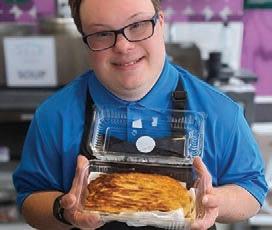

Hudson Community Foundation
WHAT WE DO
Hudson Community Foundation (HCF) has worked with donors to create and administer more than 240 donor-advised, special purpose, organizational and scholarship funds. Each of these funds support charitable organizations and worthwhile causes locally, regionally and nationally.
As part of our mission, HCF helps families and organizations strategically manage their philanthropic e orts in alignment with their own interests and passions—in an e cient, service-oriented and tax-advantaged manner.
A donor-advised fund at HCF can be started with as little as $5,000. Since our founding in 2000, we have issued more than $30 million in grants from donor funds.
Vital to our focus as a community foundation, we also make our hometown a better place to live and work by issuing our own grants to local organizations. In particular, these organizaitons are based in ve areas: education, arts and culture, social services, historical preservation and the environment.
In addition, we o en take the lead on addressing important community issues and convene local voices in pursuit of positive change. Governed by a volunteer Board of Directors, HCF is led by a professional sta , too.
HCF also distinguishes itself from national nancial institutions through its localized focus and personalized approach. Unlike broad national entities, HCF
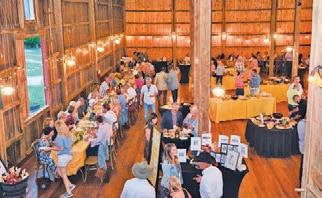
o ers tailored, donor-advised fund programs that are both unique and easy to establish.
Our programs allow personal nancial advisors to manage assets at any amount, ensuring a customized strategy that aligns with individual goals. We also provide an extra layer of security with third-party oversight, ensuring transparency and accountability in managing philanthropic contributions.
is combination of local expertise, personalized service and oversight sets us apart, fostering a more impactful and engaged philanthropic experience.
Meanwhile, our board’s Investment Committee is comprised of top-notch money managers who oversee our investments in accordance with policies that are clearly stated. e policies are reviewed periodically to ensure a balance of nancial performance and risk management.
Moreover, HCF’s Professional Advisor Council of outside bankers, lawyers, accountants and investment executives meet regularly to guide our thinking, concerning the ways we can best serve their clients
and our donors.
HOW YOU CAN HELP
VISIT: A full range of information on HCF is available at myhcf.org.
EXPLORE: e high standards under which we operate are recognized by our accreditation by the Council on Foundations and Charity Navigator’s Seal of Transparency.
JOIN: Join us on Facebook or LinkedIn. You may also request to be added to our newsletter distribution list by contacting us at amyjordan@ myhcf.org.
HELP OTHERS: You can open a donor-advised, special purpose or scholarship fund by calling us at 330-655-3580. Or take a look at some of our giving opportunities in the “Give Now” section of our website (myhcf.org).
DONATE: Giving opportunities can be found in our website’s “Give Now” section as well.

ADDRESS
49 E. Main St. Hudson, 44236
PHONE 330-655-3580
4 EMPLOYEES
2023 REVENUE $8,724,643
FOUNDED IN 2000
WEBSITE myhcf.org

LEADERSHIP


BOARD OF DIRECTORS:
John Archer
Lindsay Baran
Jason Bogniard
Nick Buzzelli
Michelle Ciancio
Bill Currin
Jan Gusich
Dexter James
Jenesa Lukac, treasurer
Paul Martin
Patricia Myers
Lisa Radigan
David Schweighoefer
Jim Sluzewski, secretary
Tom Speaks
Karin Sti er
Sharon Whitacre
Brad Wright
AMY JORDAN president BILL SEDLACEK board chair
Each fall, HCF hosts a festive dinner event to bring our community together and raise funds for important causes. This year, the event was known as The Big Band Bash.


When you trust us with your charitable giving, you also help your community. More than 230 passionate individuals and families across Northeast Ohio already trust us to facilitate their Donor Advised Funds. That’s because we not only have more than 24 years of professional experience you need, but also the personal service you deserve. Find out what others in the community already know – we can confidently help you achieve your charitable goals.










Proven



















The Legal Aid Society of Cleveland
WHAT WE DO
e Legal Aid Society of Cleveland’s mission is to secure justice, equity and access to opportunity for—and with—people who have low incomes through passionate legal representation and advocacy for systemic change.
Also known as Legal Aid, we are the only organization of our kind in our ve-county service area. We provide free, highquality legal services to people who cannot a ord an attorney and face legal threats to their homes, health, education, safety and income. In addition, we partner with communities to promote more equitable policies so that everyone has opportunities to thrive.
Every day, Legal Aid works with families to ght unjust evictions and protect their homes. We partner with parents to secure additional supports and accommodations for their students in school. Furthermore, we advocate for employees that are facing discrimination or wage the . By doing so, we promote stable employment. At the same time, we also empower survivors of domestic
violence to protect themselves from future abuse.
is work has lasting impacts for the people we serve. In the words of one of our clients, “I was blessed to nd such helpful people. I was in a really tough time nancially in my life and you all helped me out. I will always be grateful for the help.”
With your support, we can help more people enforce their rights and build paths towards strength, stability and hope. A contribution to Legal Aid goes directly to support our essential justice work, including representing people in need, educating the community on their rights and advocating for systemic change.
ank you for helping Legal Aid extend justice across Northeast Ohio!
HOW YOU CAN HELP
HELP OTHERS: In 2023, Legal Aid impacted 24,400 people through 9,000 cases— and thousands more through community education and advocacy e orts. By donating, volunteering or advocating, you can support initiatives that catalyze community change and secure justice for
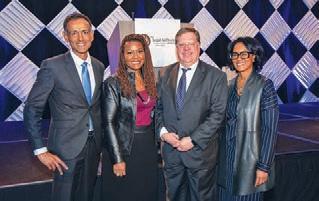
more people.
DONATE: Generous community support allows Legal Aid to provide services at no cost to our clients. Visit lasclev.org/donate to make a gi today, which will help Legal Aid protect our neighbors’ rights and basic needs.
JOIN: Volunteers are essential to Legal Aid’s work and help us serve as many people as possible. On average, volunteers handle 20% of all Legal Aid’s cases each year. Visit lasclev.org/volunteer to discover the ways you can serve your community.
SHARE: Spread the news about our free legal services and help us advocate for a more just community. Follow us on Facebook, Twitter, LinkedIn or Instagram and share our posts.
VISIT: Find upcoming events, ways to become involved and exciting news at lasclev.org.
EVENTS & FUNDRAISING
Our broad and diverse group of supporters showcase the ways in which our entire community works together to extend justice. Join us by visiting lasclev.org/donate.
In addition, join us for our two annual events: the Jam for Justice concert each summer and an Annual Meeting every fall. Learn more at lasclev.org/events.

Sixth St. Cleveland, 44113
PHONE
145 EMPLOYEES
2023 REVENUE
$23,957,053
FOUNDED IN 1905
WEBSITE lasclev.org

LEADERSHIP

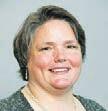
Harlin Adelman, Esq. vice president, Board of Directors
Gwen Graffenreed vice president, Board of Directors
Joe Rodgers, Esq. vice president, Board of Directors
Jason Bristol, Esq. secretary/treasurer, Board of Directors
Tanzalea Daniels director of nance
Tom Mlakar, Esq. deputy director for advocacy
Roz Quarto, Esq. director of strategic initiatives
Melanie A. Shakarian, Esq. director of development and communications
QUO VADIS I. COBB, ESQ. president, Board of Directors
COLLEEN M. COTTER, ESQ. executive director








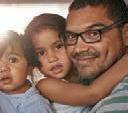









































We Can




Legal Aid’s Ripple E ect

Legal Aid helps families across Northeast Ohio access the power of the law so they can live safer, healthier, and more nancially stable lives.


Your support:



Impacts more families through partnerships









With an investment in Legal Aid, you provide our team with the resources we need to reach more people and extend the impact of civil legal counsel across a ve-county area.
















Removes barriers to opportunity Elevates Legal Aid as a catalyst for community change




We’re working together to grow and serve more families.



To learn more about how you can extend justice, visit lasclev.org/TogetherWeCan.

Malachi House
WHAT WE DO
Malachi House was founded in 1987 through a pioneering e ort to serve terminally ill homeless individuals.
e inspiration for the House came from cofounders, Fr. Paul Hritz and Catherine “Kaki” O’Neill, who o en encountered homeless individuals dying in unsuitable places within the city. Together, they created a Board of Directors, registered the house as a 501(c)(3) and opened its doors in 1988.
For over 37 years, Malachi House has served more than 2,700 residents who would have otherwise died alone.
A unique charity in Northeast Ohio, Malachi House does not receive any kind of government funding; we rely solely upon the generosity of individuals, corporations and foundations.
Our Home maintains a pure mission: to meet our residents’ immediate and basic human needs of food, shelter, clothing and comfort.
In addition, our loving care is supplemented with pet, music and art therapists that come from all over the community to enhance our residents’ quality of life.
Care at Malachi House is designed to ensure that one’s nal days are as comfortable as possible, emphasizing dignity and respect for the individual until the end of natural life.
HOW YOU CAN HELP
Caring, concerned people are at the heart of what we do each day. ere are many opportunities to become involved at Malachi House,

Malachi House’s co-founder, Catherine “Kaki” O’Neill, is photographed with a resident.
including kitchen help, answering phones, house cleaning, group projects and much more. Please visit our website (malachihouse.org) to learn more.
VISIT: If you would like to visit, please call us to request more information about an upcoming tour. You may also visit our website for a virtual tour.
EXPLORE: Explore our website, listen to our Oral History and learn more about admissions, volunteerism, employment, special projects and events.
JOIN: Join us as a volunteer or attend one of our events.
HELP OTHERS: You can help others—and our mission—by becoming an o cial Malachi House volunteer, donating or participating in a group project to help Malachi House.
DONATE: We are so grateful to all of our donors who contribute by donating monetarily, along with donating their time, supplies, auction items for events and so much more. Please visit the “Donate” section of our website for more information.
SHARE: Create awareness
and share the love of our mission by following us on Facebook and Instagram. While doing so, tell your friends and family about the important work we are doing in Cleveland.
EVENTS & FUNDRAISING
On Dec. 6, we invite you to participate in our 23rd annual Lights for Life campaign. You are welcomed to donate a light on our evergreen trees, which are located in Kaki’s Garden. Each light on the evergreen trees stands as a symbol of remembrance, honoring the lives of our cherished ones during the holiday season.
At Malachi House, we strive to create meaningful experiences throughout the year, hosting everything from small fundraisers to large community events. ese gatherings allow us to come together, support one another and build a lasting sense of community. We look forward to seeing you soon and hope you will join us for one of our upcoming events!

ADDRESS 2810 Clinton Ave. Cleveland, 44113
PHONE 216-621-8831
22 EMPLOYEES
2023 REVENUE
$2,188,814.19
FOUNDED IN 1987
WEBSITE malachihouse.org

LEADERSHIP

JUDY GHAZOUL HILOW executive director

JOHN J. SCHRINER chairperson
Matthew A. Becker vice chairperson
Jeffrey D. Neuman, CPA treasurer
Donna M. Skurzak secretary
J. Brandon Walters, M.D., FAAHPM medical director
David Amos
Bryan Evans, Esq.
Joseph C. Granzier
Fr. Michael Gurnick
Meghan Hanrahan
Kevin M. Kelly
Patricia F. Krewson, Esq.
L. Joseph Lee
Jonathan Onk
Anthony Rinaldi, Esq.
Mary Lou V. Stricklin
John J. Sullivan
Terrence V. Upchurch II
Diane C. Kennedy, emeritus
























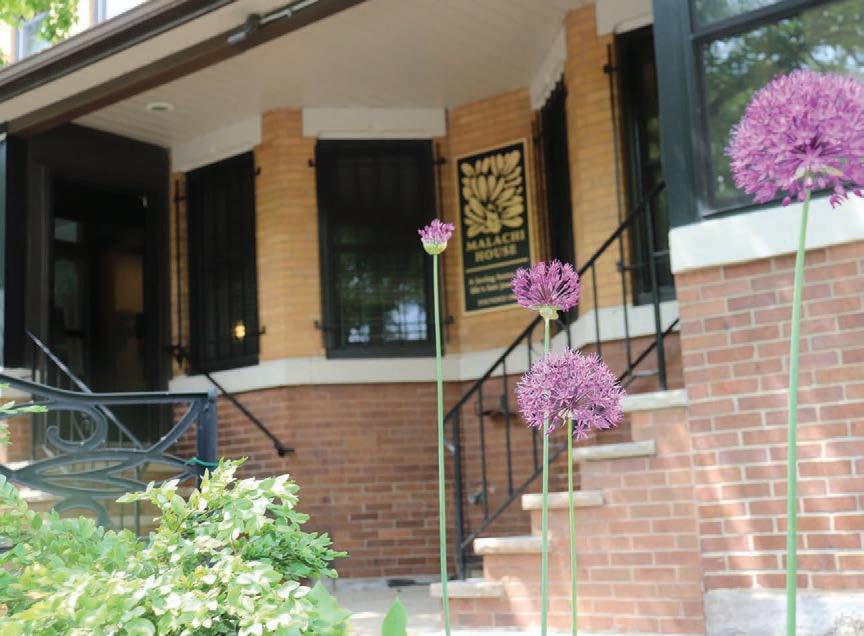
OUR MISSION
Created out of a Christian sense of ministry, Malachi House is dedicated to providing compassionate end-of-life care at no cost to terminally ill individuals who need an available caregiver and have limited financial resources. Our trained staff and volunteers offer spiritual, emotional, and physical support under the medical direction of a hospice team, ensuring comfort and dignity in the final stages of life.
MetroHealth Foundation
WHAT WE DO
e MetroHealth Foundation supports e MetroHealth System’s mission of creating a healthier community through service, teaching, discovery and teamwork.
Your support for e MetroHealth Foundation has bene ted:
• Community outreach programs—through the Institute for H.O.P.E.—that impact social drivers of health, such as education, healthy food and access to care
• Research equipment and patient support within the world-renowned MetroHealth Rehabilitation Institute
• Increasing the number of behavioral health professionals trained and practicing in Cuyahoga County
• More access to healthcare for every person in our community
e MetroHealth Foundation’s support of e MetroHealth System— Cuyahoga County’s public
safety-net hospital—is critical to fostering a healthy community.
e MetroHealth System delivers clinically excellent care to every person in our community, regardless of their ability to pay.
And, with robust residency and fellowship programs, e MetroHealth Foundation supports the system as they train tomorrow’s caregivers. rough the MetroHealth Research Institute, medical discoveries directly improve the health of our community, with a special focus on health disparities.
HOW YOU CAN HELP
EXPLORE: Discover how our Institute for H.O.P.E. is focusing on health equity and transforming health care delivery. Learn more at metrohealth.org/institutefor-hope.
HELP OTHERS: Our volunteers help patients and their families feel welcome in our hospitals and specialty clinics. Call 216-778-4471 to learn about our volunteer opportunities.
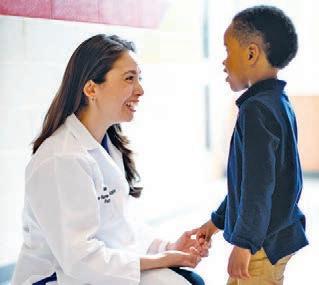
DONATE: Your generosity is more than a donation; it is a testament to your belief in the profound impact that MetroHealth has on everyone who receives our care. Experience the power of giving by funding programs that address behavioral health, food insecurity, digital access, social isolation and community wrap-around services. Give online at metrohealth.org/foundation.
SHARE: Be a MetroHealth advocate and ambassador. Connect with e MetroHealth System on Instagram, Facebook and X by using @MetroHealthCLE You may also follow e MetroHealth Foundation on LinkedIn.
EVENTS AND FUNDRAISING
e MetroHealth Foundation events and fundraising e orts create access that leads to better health.
One program e MetroHealth Foundation supports is the MetroHealth School Health program. As a result of foundation support, the program opened new and updated clinics earlier this year at three Cleveland Metropolitan School District locations. For more than a decade, the School Health Program has brought health care directly to students through in-school clinics, mobile units and virtual care.
For more information on our events and fundraising, contact Greg Sanders at 440-592-1319 or gsanders@ metrohealth.org.
ADDRESS
2500 MetroHealth Drive Cleveland, 44109
PHONE 216-778-5665
EMPLOYEES: 8,825
FOUNDED IN 1837
WEBSITE metrohealth.org/foundation

LEADERSHIP
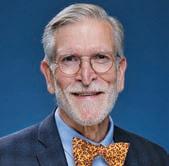
ALFRED F. CONNORS, JR., M.D. chair, The MetroHealth Foundation Board of Directors

KATE BROWN president, The MetroHealth Foundation
Eric Fiala vice chair, National Philanthropy
Jennifer Hurd vice chair, Philanthropy Engagement
Jonathan Pressnell treasurer and vice chair, Finance and Investment
Marcy Levy Shankman, Ph.D. vice chair, Nominating and Board Development
Michelle Wood ex of cio and chief operating of cer, The MetroHealth Foundation

Dr. Lisa Ramirez visits with a student who has been served by MetroHealth’s School Health Program.

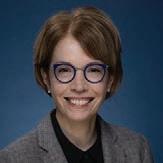
MAKING
A DIFFERENCE... Partnering with the community for 70 years.
Ranked number one in Ohio for contributions to community health, The MetroHealth System has been providing excellent care to Greater Cleveland since 1837—regardless of a patient’s ability to pay—largely due to the impact of donors throughout Cleveland who support The MetroHealth Foundation. Thank you for helping us shape a future dedicated to a healthier community.
* Source: Lown Institute
metrohealth.org/foundation


Kate Brown President, The MetroHealth Foundation
National Kidney Foundation, Inc.
WHAT WE DO
e National Kidney Foundation (NKF) is revolutionizing the ght to save lives by eliminating preventable kidney disease, accelerating innovation for the dignity of the patient experience and dismantling structural inequities in kidney care, dialysis and transplantation.
Chronic Kidney Disease (CKD) a ects 37 million adults in the United States, 90% of whom are unaware and undiagnosed.
As the stage of kidney disease advances, the risk for cardiovascular events, such as heart failure or stroke, and mortality increases.
While anyone with diabetes or hypertension is at risk for developing CKD, communities of color are disproportionately a ected by CKD, due to breakdowns in care and other social determinants of health challenges.
We envision a future where every person has equal access to quality kidney care—from diagnosis to transplantation.
is is why now is the time to engage with NKF policy, volunteering, donation and board e orts. Your perspective, voice and network can help make a di erence in our community.
Consider applying for one of our three volunteer boards in Northern Ohio: Board of Directors, Medical Advisory Board or Junior Board of Advisors.
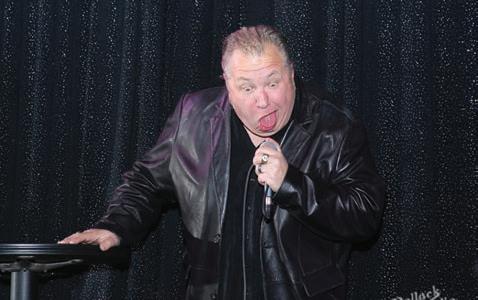
HOW YOU CAN HELP
VISIT: Attend our Kidney Walk in Toledo and Cleveland, participate in our Golf Classic at Firestone Country Club or laugh with us at Pickwick and Frolic for a night of comedy. ere, you’ll hear about the programmatic impact we are creating yearround.
EXPLORE: Explore kidney.org to receive the latest research, nutrition, health equity, legislation and treatment options centered around kidney health. NKF is the nation’s leader of kidney health education.
JOIN: Join our Board of Advisors, Medical Advisory Board or Junior Board locally at NKF! We are actively looking for volunteers who are dedicated to improving the lives of those who may not have a voice to help themselves.
HELP OTHERS: Have you gone through a kidney disease journey? Become an NKF Peers mentor to guide other kidney patients, living donors or care partners along their journeys. Training will be provided.
DONATE: With support from caring people like you, we can keep our promise of being a source of hope and guidance as families face some of the scariest and most unexpected moments of their lives. Please visit tinyurl.com/ msbm792a.
EVENTS & FUNDRAISING
More than 100,000 new patients are diagnosed with end-stage renal disease in the United States each year. For many of these individuals facing kidney failure, dialysis is a lifeline.
Help provide patients in Ohio with care packages—during the Drive for Dialysis—to brighten their spirits and make the long hours of treatment a little more bearable. Contribute through sponsorship or a donation by reaching out to Maddi Snyder at madalynne.snyder@ kidney.org.
IN 1964 PHONE 212-889-2210 x291 ADDRESS P.O. Box 40544 Bay Village, 44140 WEBSITE kidney.org/of ces/ nkf-serving-ohio

LEADERSHIP


Maddi
JUNIOR BOARD:
Brian Kampman chair; Flannery Georgalis
Katie White chair; Key Bank
To view all of our Board members (Board of Advisors, Junior Board and Medical Advisory Board), visit kidney.org/of ces/nkf-servingohio/staff-board.

ANNA TZINIS executive director of Ohio
Through Komedy for Kidneys, NKF’s signature fundraising event, guests can laugh their kidneys off during a hysterical night of comedy. Join us for food, games and laughs on Nov. 7. For more information, visit kidney.org/events/local-event/komedykidneys.
CHRISTINA DELVALLE medical advisory board chairwoman
Leah Adams program director
Snyder development manager


With steady, reliable support from caring people like you, we can keep our promise to be a source of hope and guidance when families are facing some of the most scary and unexpected moments of their lives.


OhioGuidestone
WHAT WE DO
At OhioGuidestone, we are proud to celebrate 160 years of making a di erence in the lives of individuals and families across Ohio. What began as a humble orphanage during the Civil War—while caring for nine children in Berea—has grown into the state’s leading community behavioral health care provider. Today, we support over 26,000 clients each year with a wide range of services.
Our mission is rooted in a commitment to accessible, person-centered care to provide pathways for growth, achievement and lifelong success.
We o er prevention services, mental health support, substance use treatment, youth and adult residential treatment, and workforce development programs, which are designed to address the unique needs of each individual. From crisis intervention to long-term support, our approach is tailored to empower clients on their journeys.
Every story is a testament to our legacy. Our focus remains on the whole person. We believe in the power of comprehensive care to
empower lives, one story at a time.
As we re ect on our history, we are energized by the impact we continue to make and the countless lives we touch. OhioGuidestone stands as a beacon of hope and support, dedicated to guiding individuals through the most di cult times of their lives, empowering them to take steps towards a healthier future.
Join us in celebrating this milestone and supporting our mission to invest in Ohio’s behavioral health care.
HOW YOU CAN HELP
EXPLORE: Our comprehensive behavioral health services are tailored to meet each individual’s needs.
From urgent cares for behavioral health, recovery support groups, psychiatric services and foster care, to school services, workforce development and residential treatment, OhioGuidestone can help. Explore our programs and services at ohioguidestone.org/services.
JOIN: Your story, our mission—a perfect match! Write your next chapter at OhioGuidestone.

We o er exibility and a supportive employee experience that provides opportunities to grow, ourish and belong in a community with shared values. Visit ohioguidestone. org/employment.
HELP OTHERS:
OhioGuidestone has a critical need for volunteers and donated items. Consider organizing a group to help beautify our residential properties or work in our Marsten Farms garden. You may also join our Associate Board and participate in fun activities for our foster care and youth residential clients.
In addition, you can support our holiday shop for clients by providing a gi of new, unwrapped toys, games, clothing or gi cards. To learn more about these opportunities, contact John Coyne, director of advancement, at john.coyne@ ohioguidestone.org.
DONATE: Support OhioGuidestone with a tax-deductible charitable gi and help our clients take steps toward happier, healthier lives. Give online at ohioguidestone.org/donate.
SHARE: Follow us on social media @OhioGuidestone on Facebook, Instagram, LinkedIn and X.
ADDRESS
343 W. Bagley Road Berea, 44017
1,270 EMPLOYEES
WEBSITE ohioguidestone.org


BRANT RUSSELL, MBA, MSN, RN, NEA-BC president and CEO

MARY STILES, MSW, LSW, J.D. chief of staff/chief strategy and legal of cer
Julia Bruner, M.D., MS, MBA, FAAFP chief medical of cer
Rob Law CIO
Patti Stumpp, MBA chief human resources of cer
Mary Wilson Wheelock chief advancement of cer
Joseph R. Zeigler, MBA CFO

OhioGuidestone celebrated its 160th birthday on March 7, 2024, at The Oswald Conference Centre. In uential leaders, policy makers and supporters of the organization gathered to celebrate its longstanding legacy and mission to provide pathways for lifelong success.



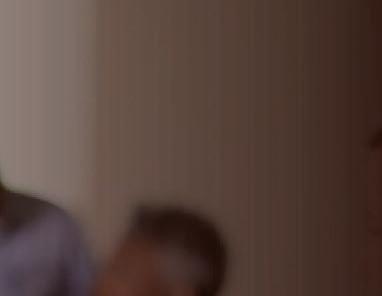








Planned Parenthood of Greater Ohio
WHAT WE DO
Planned Parenthood of Greater Ohio (PPGOH) is a leading health care provider committed to protecting, promoting and providing high-quality, a ordable reproductive care for Ohioans.
With 15 health centers across North, East and Central Ohio—including four locations in Cuyahoga County—we proudly build healthier communities by ensuring people have access to the care they need, regardless of their income or insurance status.
Last year, our health centers in Cuyahoga County served 13,257 patients. While doing so, they provided more than 25,150 STI tests, over 3,400 birth control services and more than 2,200 preventative care services, such as cancer screenings and Pap tests.
PPGOH also serves as the largest, most trusted source of sexuality education in Ohio. Our innovative programming empowers individuals with the knowledge and skills they need to make informed decisions, regarding their sexual health and relationships.
We work to ensure all people have access to the care and resources they need to make informed decisions about their bodies, lives and futures. Learn more at ppgoh.org.
&
A 2020 Economic Impact study con rmed exactly
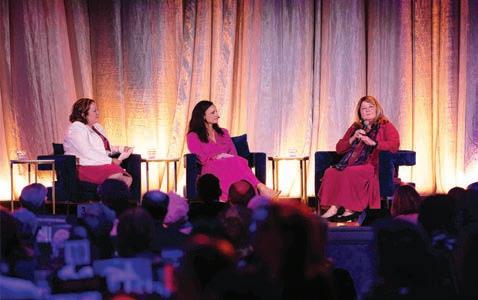
how much value and impact PPGOH provides. e study found that PPGOH generates an annual impact of $51.3 million for Ohio’s economy and creates and maintains hundreds of jobs in the communities we serve.
Additionally, the study found that PPGOH saves Ohio’s overall health care system $88 million annually by serving Medicaid patients at a 24% lower cost than private providers, while also managing chronic conditions, reducing emergency room visits and emphasizing preventive care.
HOW YOU CAN HELP
DONATE: Our doors are open, thanks to the steadfast commitment of our supporters. We continue to expand our full range of reproductive and primary care services, provide joyful sexual health education and ensure health equity for all.
Together, we’ll build the equitable future Ohioans deserve, where everyone receives the care they need to live empowered, ful lling and authentic lives. Impact the
future of care by making a gi today at ppgoh.org/give.
PLANNED GIFTS: When you remember Planned Parenthood of Greater Ohio in your will or estate plan, you are giving the young people of tomorrow one of the most meaningful gi s—a healthy future.
Please share this sample bequest language with your estate planning attorney: “I give, devise and bequeath to Planned Parenthood of Greater Ohio, Tax ID # 34-1015976, a nonpro t corporation currently located at 444 West Exchange Street, Akron, OH 44302, or its successor thereto, ________ (written dollar amount or percentage of the estate or description of property) for its unrestricted charitable use and purpose.”
To discuss how you can support our work, please contact Nicole Rounick at nicole.rounick@ppoh.org or 614-558-6096.

ADDRESS Donate by Mail: P.O. Box 933233 Cleveland, 44193-0035
PHONE 614-224-2235
280 EMPLOYEES
2023 REVENUE $38,681,691
FOUNDED IN 1928
WEBSITE ppgoh.org

LEADERSHIP

ERICA WILSONDOMER president and CEO

MELISSA PEREZ RAMIREZ vice president of development
Diego Espino chief people equity learning of cer
Mary Chenevert director of executive and corporate affairs
Lauren Blauvelt executive director of planned parenthood advocates of Ohio
Melissa Cohen general counsel
Laura Kukral chief operating of cer
Dr. Bhavik Kumar chief medical of cer
Diane Moon CFO
PPGOH president and CEO, Erica Wilson-Domer, has a reside chat with special guests Alexis McGill Johnson, president and CEO of PPFA, and Connie Schultz— Pulitzer Prize winning columnist and author on the future of reproductive health care—following the passage of the Ohio Reproductive Freedom Amendment.




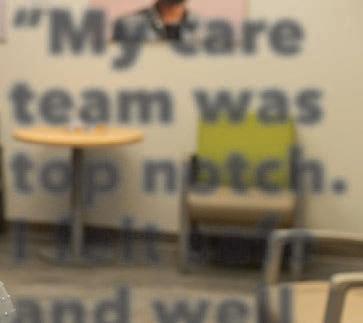






United Way of Greater Cleveland
WHAT WE DO
At United Way of Greater Cleveland, we deeply understand the needs that exist in our community.
In addition to our 200,000 neighbors living in poverty, there are 150,000 Greater Clevelanders who are making just enough to get by and live one crisis away from falling into poverty, despite working full-time jobs.
at is why United Way is working to ensure members of our community are not just surviving but thriving. We do this rst by continuing to improve access to the social safety net. United Way 211 helps all Greater Clevelanders connect to support and resources, in order to meet their many needs.
At United Way, we believe that how far we can go in life should not be determined by where we start. erefore, we work with key partners, engage donors and advocate for policy changes that eliminate the systemic barriers that hold so many people back and create crises in the rst place.
United Way’s initiatives— including Right to
Counsel-Cleveland, Lead Safe Cleveland Coalition, FamilySpace and e Louise C. Stokes Scholar House— have had outstanding results, in particular.
As an example of their impact, the initiatives have created stable housing and healthy environments. Furthermore, they’ve helped children thrive in their education, while their parents embark on career pathways that lead to good-paying jobs and sustaining wages.
As we look to the future, United Way, in partnership with our community, will continue to work to nd solutions—solutions that that will create a region where economic stability and opportunity become a reality for us all.
HOW YOU CAN HELP
EXPLORE: Learn about United Way’s work and stay updated on initiatives and events at unitedwaycleveland.org!
Follow us on Facebook, Twitter, Instagram and LinkedIn: @UnitedWayCLE.
JOIN: United Way’s Emerging Leaders a nity
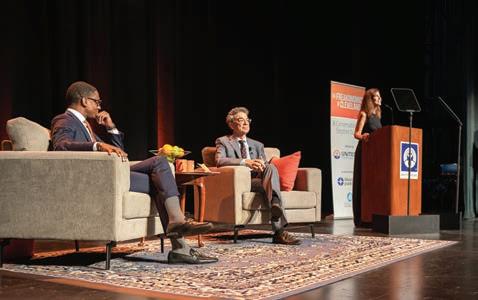
group for young professionals is actively recruiting new members. To learn more, email kmartinovic@ unitedwaycleveland.org.
HELP OTHERS: United Way’s Volunteer Portal o ers opportunities to serve local nonpro ts throughout the year.
Learn more and sign up for volunteer opportunities at volunteer. unitedwaycleveland.org.
DONATE: United Way accepts donations throughout the year to help Greater Clevelanders. To learn more and donate, email jfurth@ unitedwaycleveland.org.
SHARE: Tell people about United Way 211, our free, con dential service for anyone in need of resources.
Call 2-1-1 and speak to a compassionate, highly trained individual who is ready to listen and share community resources 365 days a week, 24/7.
EVENTS & FUNDRAISING
United Way’s Emerging Leaders is hosting Connect & Collect later this month!
To learn more about this donation drive and networking night—and acquire ticket information— contact kmartinovic@ unitedwaycleveland.org.

Ave. Cleveland, 44115 WEBSITE unitedwaycleveland.org

LEADERSHIP


president and CEO
Paul Dolan immediate past chair
James A. Ratner vice chair
Sonali B. Wilson, Esq. secretary
Andrew J. Paine III treasurer
Kenneth Surratt chief development and investment of cer
Kristen Popelmayer chief marketing and communications of cer
VANESSA WHITING board chair
SHARON SOBOL JORDAN
United Way of Greater Cleveland’s Signature Fall Event brings national and local experts together to discuss how we can move our region forward together.
UNITED WAY 211
CONNECTING THOSE WHO NEED HELP TO THOSE WHO CAN HELP
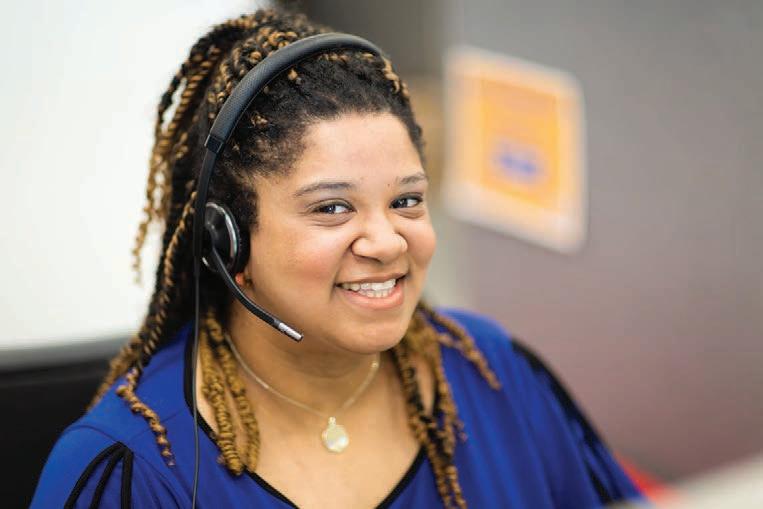
Last year, 90% of callers were connected to new resources to meet their needs.

West Creek Conservancy
WHAT WE DO
Since its founding, West Creek Conservancy has been a model of citizen action and land conservation, maximizing bene ts and leveraging projects to the fullest extent possible. Initially embracing the much-needed role of an urban land trust serving Greater Cleveland, West Creek ultimately evolved into a diverse nonpro t conservation organization that serves the region.
West Creek has protected thousands of acres in many communities across the region. While doing so, it has placed importance on water quality improvement; storm water abatement; wetland and riparian corridor restoration; environmental education and outreach; historic preservation and natural resource stewardship.
West Creek continues to share its expertise and provide land conservation services to individuals, partner organizations and communities. It has readily accepted and stepped into roles where the need exists by supporting and assisting partners and communities with a variety of unique and challenging opportunities. Such opportunities include the behind-the-scenes work for a massive $129 million grant, which was recently awarded to a Cuyahoga County-led partnership to install solar panels on local land lls.
Additionally, West Creek has stepped in to serve as the landowner for many critical projects, including Irishtown Bend, Morgana Blu s Nature Preserve and the former Haydite mine.
West Creek envisions

healthier and more vibrant communities through the conservation and restoration of our natural areas and streams, as well as the creation of greenways and recreational trails.
With these goals in mind, West Creek’s mission is to enrich the lives of all people in Northeast Ohio by conserving natural habitats, restoring the ecological value of our region’s lands and waters, and expanding opportunities to connect people from all cultures to experience nature and discover our great outdoors.
HOW YOU CAN HELP
VISIT AND EXPLORE: Spend time outdoors today! Explore the many parks and trails West Creek has helped facilitate, including Lake Link Trail, Hemlock Trail and our namesake, West Creek Reservation, among others throughout the region.
West Creek also has several exclusive nature preserves where you can see the wonders of nature. In addition, West Creek’s annual hike series provides an opportunity for an exclusive peek at these unique properties where you can better understand our mission to Protect, Restore and Connect!
JOIN: We couldn’t do it without you! Not only was West Creek formed by a group of volunteers, but without the help of volunteers, our work would not be accomplished.
You can lend a hand with your time and talent in various ways, including property stewardship, invasive species management, restoration, tree plantings, site clean-ups, seed collection and propagation at Stearns Nursery. Moreover, you can participate in events such as our annual fundraiser, Up! A Creek.
DONATE: Pledge your support today! ere are numerous ways to contribute to West Creek’s mission like one-time pledges, monthly pledges or multi-year pledges.
ere are also creative ways that may provide a tax bene t, such as the gi s of appreciated stock and retirement funds. Furthermore, the donation of your property—or a planned legacy gi —can help make a local impact!
SHARE: Connect with us on Facebook, Instagram and LinkedIn.
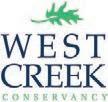
ADDRESS
7381 Camelot Drive Parma, 44134
PHONE 216-749-3720
7 EMPLOYEES
2023 REVENUE
$11,998,993
FOUNDED IN 1997
WEBSITE westcreek.org

LEADERSHIP

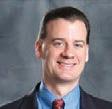
Dawn Petkov director of nance
Joe Leslie director of real estate
David Saja senior watershed program manager
Kara Benninghofen stewardship and outreach coordinator
Brett Rodstrom director of conservation
Dani Ticherich development and administrative assistant
BOARD OF DIRECTORS:
Chris Owen vice chair
Luke Schwan treasurer
Maribeth Feke secretary
**A full listing of board members can be found at westcreek.org/staff-and-board.
DEREK SCHAFER executive director
MICHAEL MOHLENKAMP board chair
West Creek’s signature conservation gala and annual fundraiser, Up! A Creek, brings supporters together for an unforgettable evening! The event features dinner, dancing, live music, live auctions, raf es and our infamous wine toss.

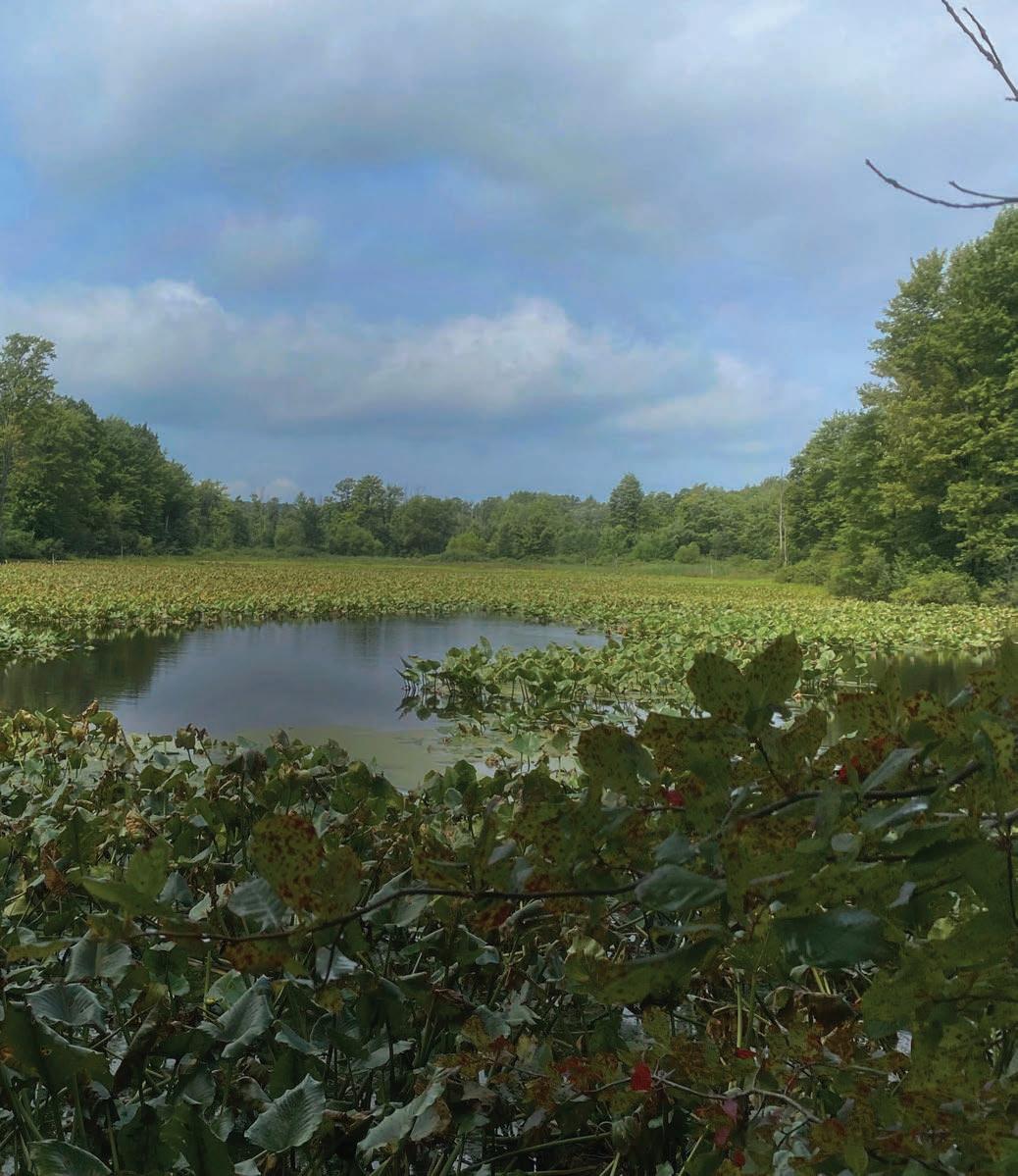






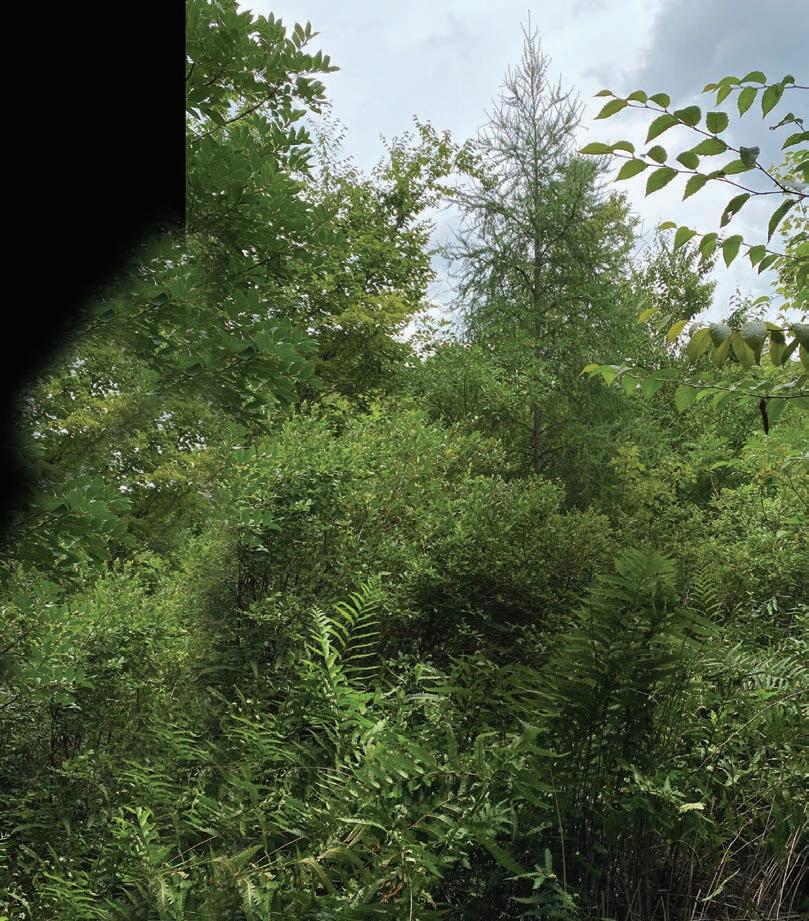
Women Religious Archives Collaborative
WHAT WE DO
e Women Religious Archives Collaborative (WRAC) was recently founded to create an archives and heritage center in Cleveland, which will preserve and share the history of Catholic Sisters across the United States.
Set to open in 2026 in Cleveland’s Central neighborhood, WRAC will be an independent repository and permanent home for the archives of more than 40 congregations of Catholic Sisters across the United States and Canada.
is new, state-of-the-art facility brings a signi cant resource for research and public programming to Northeast Ohio. For example, the archival collections that are set to be held at WRAC will include important pieces of local and national history.
e records will share the stories of the women who built and sta ed schools, hospitals, churches and social service agencies, and were leaders and innovators in our communities. Access to these stories—through research, exhibits and programming— will inform and inspire future leaders in education, health
care, faith and nonpro t service.
e 30,000-square-foot building will include a temperature-controlled and professionally managed vault to store the archival collections; a research room; space for processing and digitization; a multi-purpose event and programming space; dedicated exhibit space and meeting rooms. In addition to welcoming researchers, the center will be open to the public so that everyone can visit exhibits and rent event and meeting spaces.
e capital project is led by e Gateway Group, Bostwick Design Partnership and Regency Construction Services, Inc.
HOW YOU CAN HELP
Your generosity, interest and partnership will help make this heritage center a reality.
DONATE: Donate to WRAC’s Capital Campaign to help reach its $24 million goal. Participating congregations of Sisters have already donated more than $12 million toward the heritage center’s construction. Now we need your help to complete this important project.

ENGAGE: Subscribe to our monthly newsletter, follow us on social media and visit our website for updates on our progress.
SHARE: Share our story with others to honor Catholic Sisters’ decades of service. e stories and histories are not only inspirational but serve as examples of mission-centered ministry, too.
PARTNER: WRAC looks forward to collaborating with community partners and institutions to position the heritage center as a resource for students, researchers, nonpro ts, faith-based organizations and others. Please reach out to discuss partnership opportunities.
EVENTS & FUNDRAISING
SO THE STORIES CAN BE TOLD: WRAC’s Capital Campaign is raising $24 million to construct a heritage center that will preserve and share the history of Catholic Sisters across the United States. As mentioned, congregations of Sisters have already donated over $12 million towards the campaign, and now private donations are integral to helping WRAC meet its fundraising goal.
Contributions can be made to the facility’s construction, along with organization operations. ey may also be used to grow an endowment, which will support the facility’s sustainability into the future. Download the case for support on the “Heritage Center” page of archivescollaborative.org.


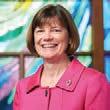
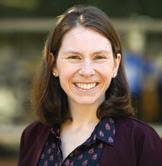
SR. SUSAN DURKIN, OSU executive director MARGARET EIGSTI managing director
Sarah Lubelski lead archivist
Joan Peine, OSU nance director
Joyce Needham database manager
BOARD OF DIRECTORS:
Sr. Jean Anne Zappa, OSU president
Sr. Judith Kroeger, CPPS vice president
Sr. Judith Ann Karam, CSA treasurer
Sr. Joanne Gross, OSU secretary
The rendering of WRAC’s future heritage center is slated to open during the summer of 2026 on E. 22nd Street.
“You can’t adequately tell the history of the United States without including the contributions of Catholic Sisters.”
– Susan Durkin, OSU, Executive Director, WRAC
























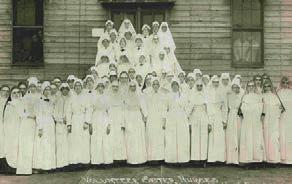


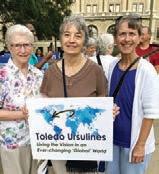






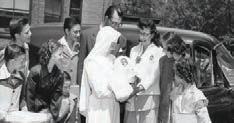

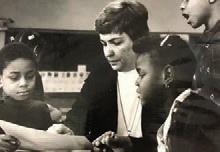


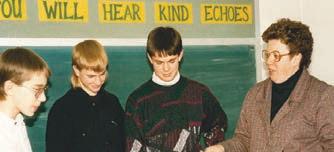








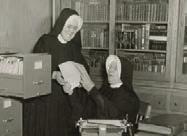



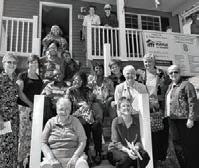




Join us in creating a heritage center in Cleveland.
The Women Religious Archives Collaborative (WRAC) Heritage Center will be a place of study and celebration. It will house the archives of over 40 congregations of Catholic sisters from across the United States and Canada, making the collections accessible for research in person and online. The center will also have space for public exhibits, events, and programs that honor the unique contributions of women religious to their communities and the country.
Help us write the next chapter!
Donate to the campaign at archivescollaborative.org/donate
THANK YOU
to our 2024 Giving Guide Participants




























